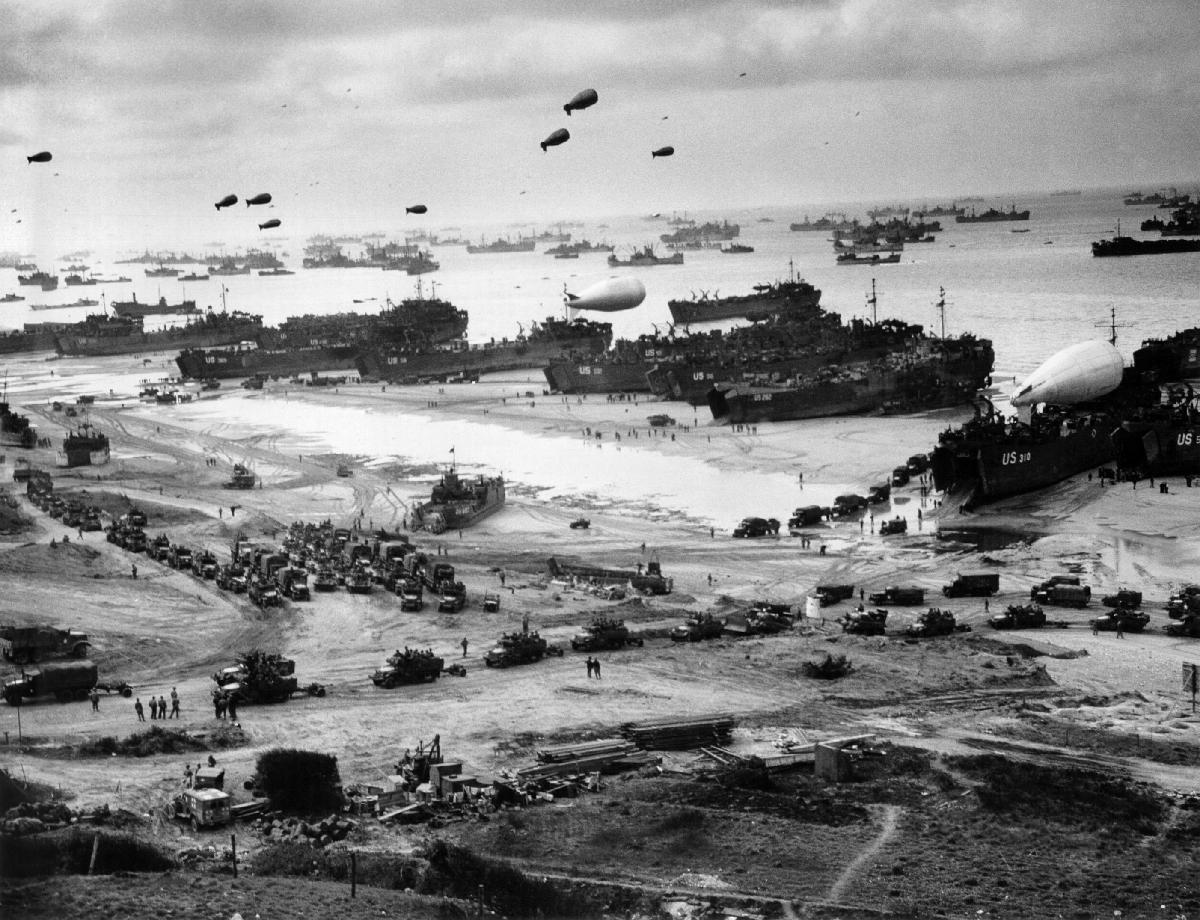
Landing ships putting
cargo ashore on Omaha Beach, at low tide during the first days of the
operation,
mid-June, 1944. Among identifiable ships present are LST-532 (in the center
of the
view); USS LST-262 (3rd LST from right); USS LST-310 (2nd LST from
right); USS LST-533
(partially visible at far right); and USS LST-524.
Note barrage balloons overhead and Army
"half-track" convoy forming up
on the beach. The LST-262 was one of 10 Coast Guard-manned
LSTs that participated
in the invasion of Normandy, France.
United States Coast Guard
Collection
|
The advance again Hitler's forces in France
The landing ultimately proved to be a success.
Hitler at first refused to reposition his troops gathered further north
at Calais, considering the Allied landing to be merely a feint designed
to draw troops away from Calais so as to make Patton's invasion easier
(there was, of course, no such Patton invasion). For days Hitler
hesitated before he finally came to the realization that this was the
massive assault that the Germans had long been expecting. But by that
time the Allies were well planted in Normandy and moving inland fairly
quickly.
Several problems however complicated the Allied advance. The British
were expected to liberate the city of Caen almost immediately. Their
landing had been largely unopposed, but in reaching the outskirts of
Caen the Germans showed themselves prepared to put up a major fight.
Consequently, this key hinge point took two months to bring under
Allied control. Also the farms of Normandy were outlined not by fences
but by huge, thick centuries-old hedges that gave the Germans great
defensive opportunities and made progress of the Allied tanks and
infantry almost impossible, until an immense steel fork was created to
be placed on the front of the tanks, allowing them simply to plow
through the hedges. With that innovation, the advance against the
Germans proceeded much more quickly.
At one point a huge German army was
nearly surrounded by the advancing Allies. But failure to close quickly
a gap in the circle allowed most of the Germans to escape and
reorganize further east against the Allied advance. Nonetheless, the
Germans were tiring and running out of men and supplies. At this point
(August) the Allied move across France towards Germany was advancing
quickly.
In the meantime, a number of Allied
troops in Italy under the command of General Truscott were redirected
in mid-August to undertake an invasion of France along the southern,
Mediterranean coast. Here they were joined by large numbers of members
of the French Resistance, and opposed by greatly weakened German
forces. Within the span of a month, Allies had liberated the entire
region, opening key Mediterranean ports for supply of the Allied effort
in the north against the main German defense. This was a vital victory,
which however, in the context of the huge attention focused on
activities going on further north in France, was barely acknowledged at
the time (or sadly, even since then as well).
The decision to liberate Paris
rather than head directly to a Rhine crossing
At first the objective of the Allies as
they headed east across France was to get to the Rhine as quickly as
possible, cross it and then head across a weakened Germany towards
Berlin, possibly ending the war by Christmas. But key political factors
had to be taken into account, especially given the political confusion
the French found themselves in. Eisenhower did not trust the French
Communists, who after having sat out the war during its early and vital
days (under instructions of Hitler’s ally at the time, Stalin) and then
had joined the French Resistance only when Hitler attacked Russia. Then
the Communists attempted to pose themselves as the true heroes of the
Resistance, with the goal in mind of taking control of a post-war
France. The original members of the Resistance were very nervous about
the Communist role in the Resistance and de Gaulle was adamantly
opposed to them. Thus it appeared that there would be a huge political
fight for France – fought naturally at the heartland of French life,
Paris. It was imperative that the Allied Armies, not some Communist
element of the French Resistance, should be awarded the task of
liberating this key symbol of French life and culture.
Then there was perhaps the matter of what
the Germans might do to Paris itself simply in retribution. When Hitler
sent Major General Dietrich von Choltitz to Paris to take charge of the
German defense of the city, concern about his ultimate intentions
naturally arose, for he was the ruthless Prussian commander who had
been greatly responsible for the thorough destruction of both Rotterdam
in Holland and Sebastopol in Russia. The Allies did not know that he
had instructions from Hitler to completely demolish Paris (leave not
one Paris church, bridge, monument or landmark standing) rather than
surrender the city intact – but they rather suspected something like
that was bound to happen, given Hitler's move to send von Choltitz
there.
And thus the Allied armies turned toward
Paris, fairly quickly taking control of the city (despite German
snipers still holding out here and there in the city) – and letting de
Gaulle lead the victory parade down the Champs Elysées boulevard as if
it had been his Free French army that had performed the liberation. In
any case … no, Choltitz did not blow up Paris as ordered – although
when he later put forth the claim that he had refused Hitler's orders
for humanitarian reasons, questions arose as to whether this was indeed
the case – or that the speed of Paris's delivery prevented him from
such a treacherous act. Perhaps it was some combination of both. The
world will never know.
In the end, the cost of the decision to
delay the Rhine crossing in order to liberate Paris was very, very
high. This gave Hitler time to reorganize his troops in the West, to
end British General Montgomery's hope to quickly cross the Rhine in the
North in Holland before the Germans could react (and thus open a very
direct and lightly-defended path to Berlin), even to give the Germans
the time to organize enough for one last push to throw the Allied
effort back to the Atlantic (a combination of V-2 bombs and the German
winter offensive known in the West as the "Battle of the Bulge"), and
worst of all, to give him that much more time to try to complete the
eradication of the entire European Jewish community with his "Final
Solution." Thus a lot of lives were lost elsewhere because of the
decision to redirect the Allied war effort toward Paris.
In short, a precious, precious price was
paid to spare a precious, precious Paris (and France from the grip of
Communism), a hard but momentous decision.
|
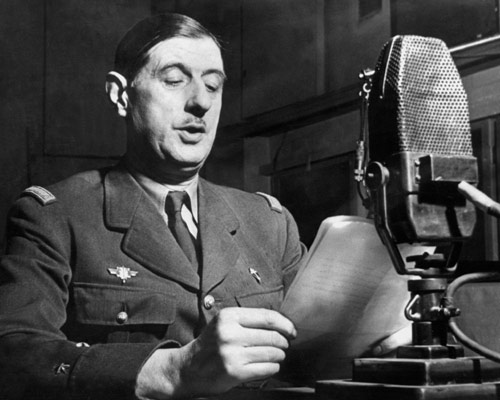
Charles de
Gaulle on BBC
radio during the war
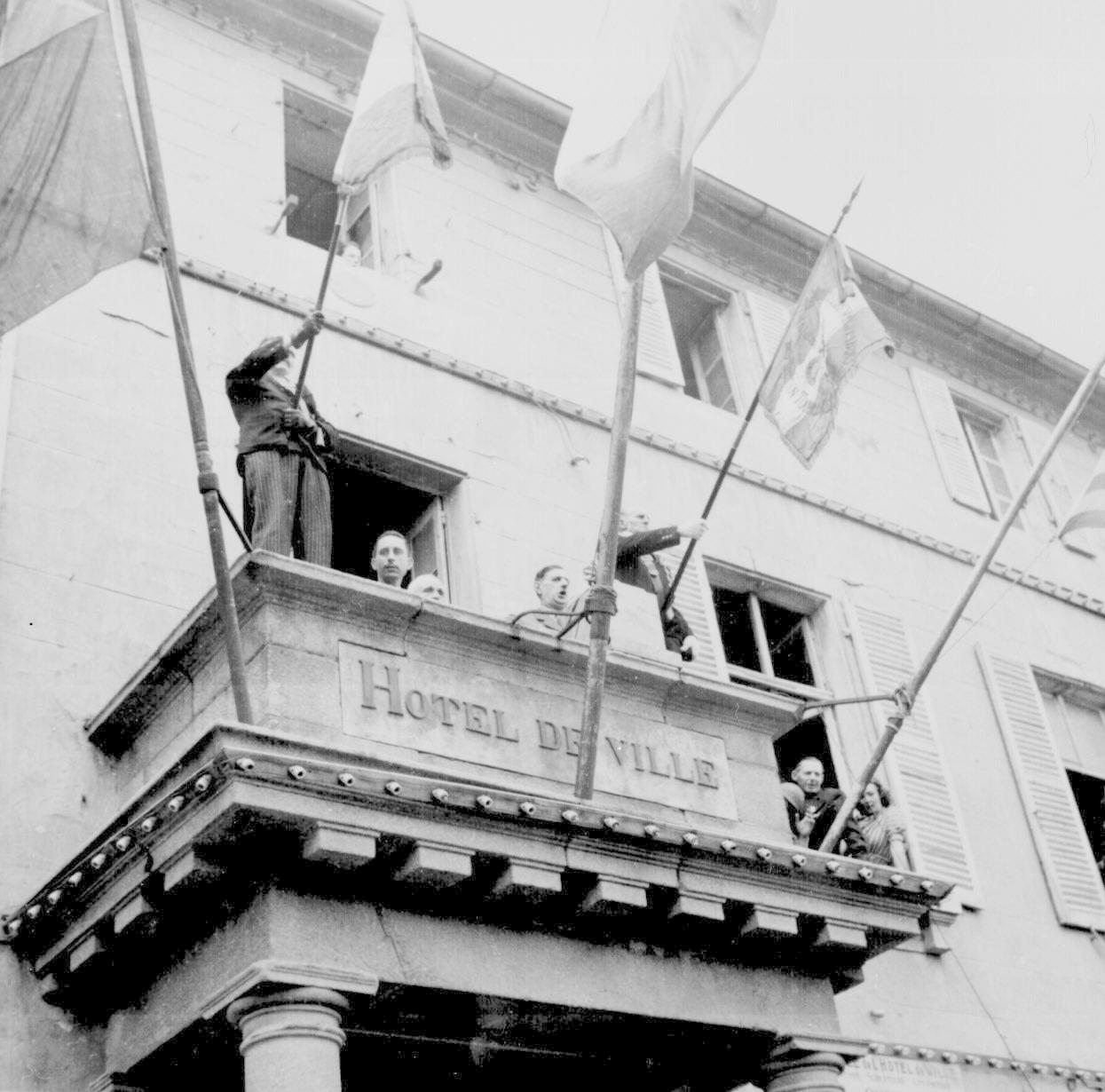
"General Charles
de Gaulle
speaks to the people of Cherbourg from the balcony
of the City
Hall during his visit to the
French port city on August 20." 1944.
National Archives
208-MFI-5H-1
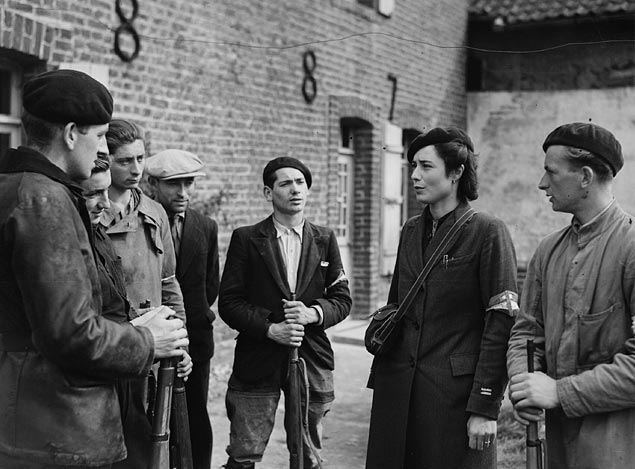
Members of the
Maquis
(French Resistance) in La Tresorerie -
Boulogne, France, 14
September
1944
Library and Archives
Canada
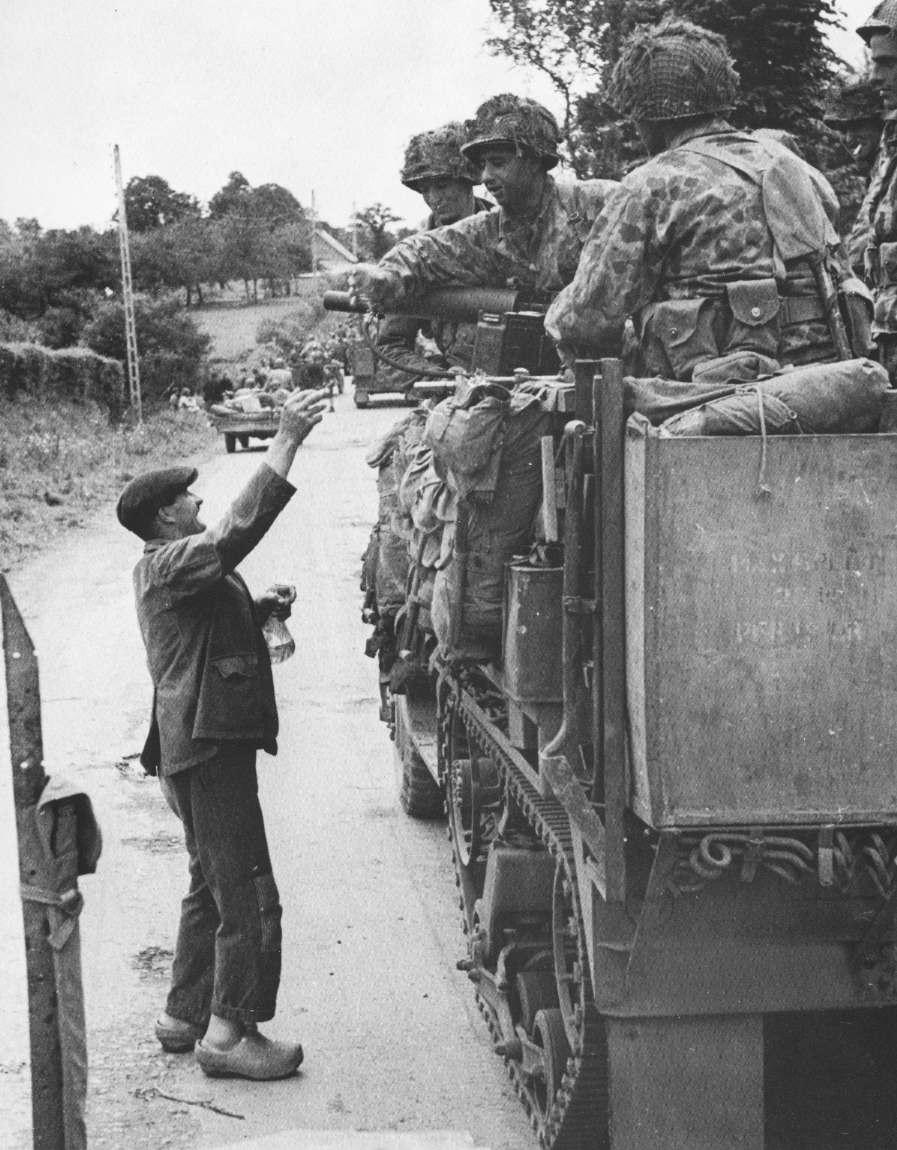
A Frenchman
offering a drink
to GIs on their way to Paris
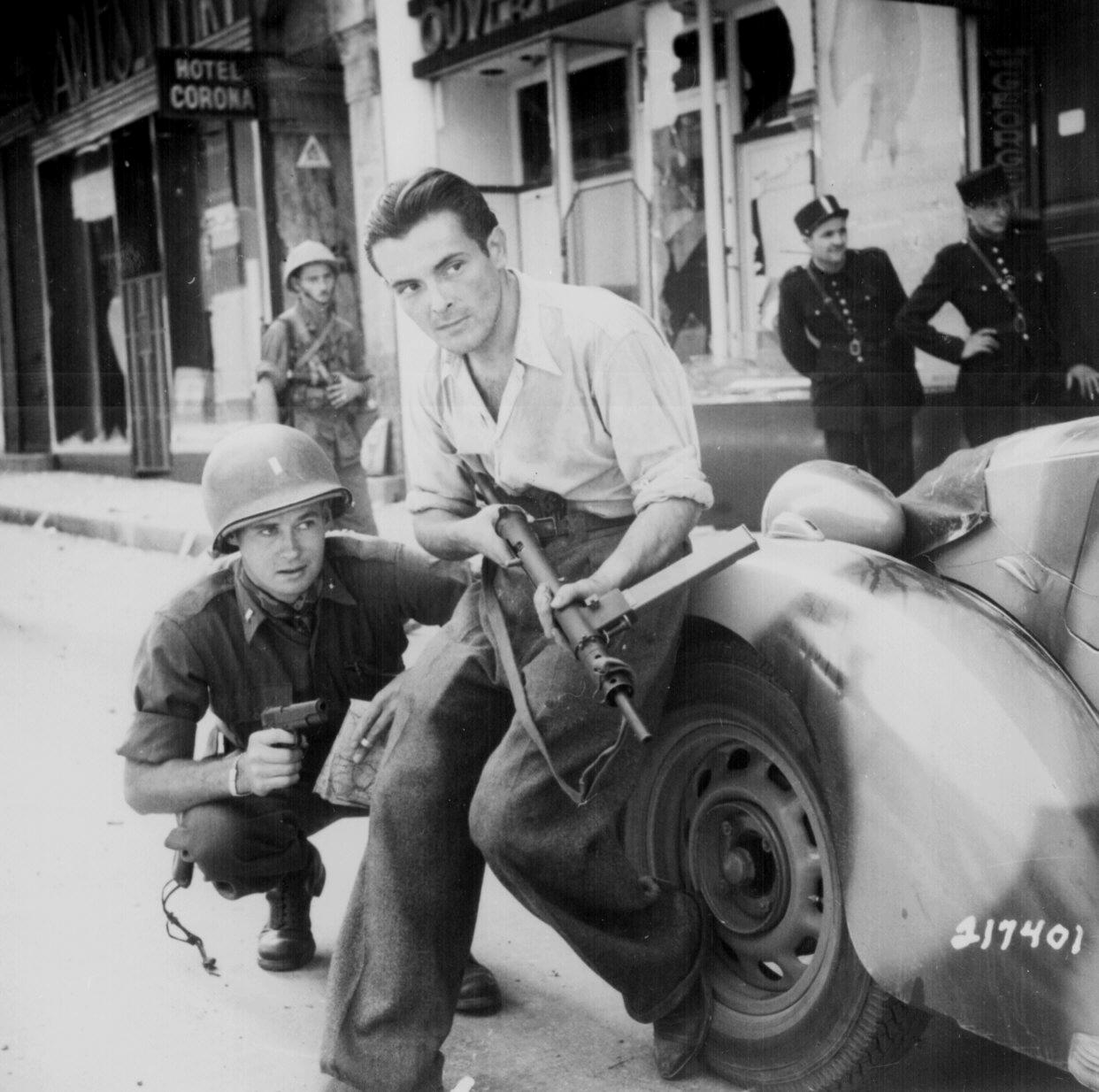
An American
officer and a
French partisan crouch behind an auto
during a street
fight
in a French city. 1944.
National Archives
111-SC-217401
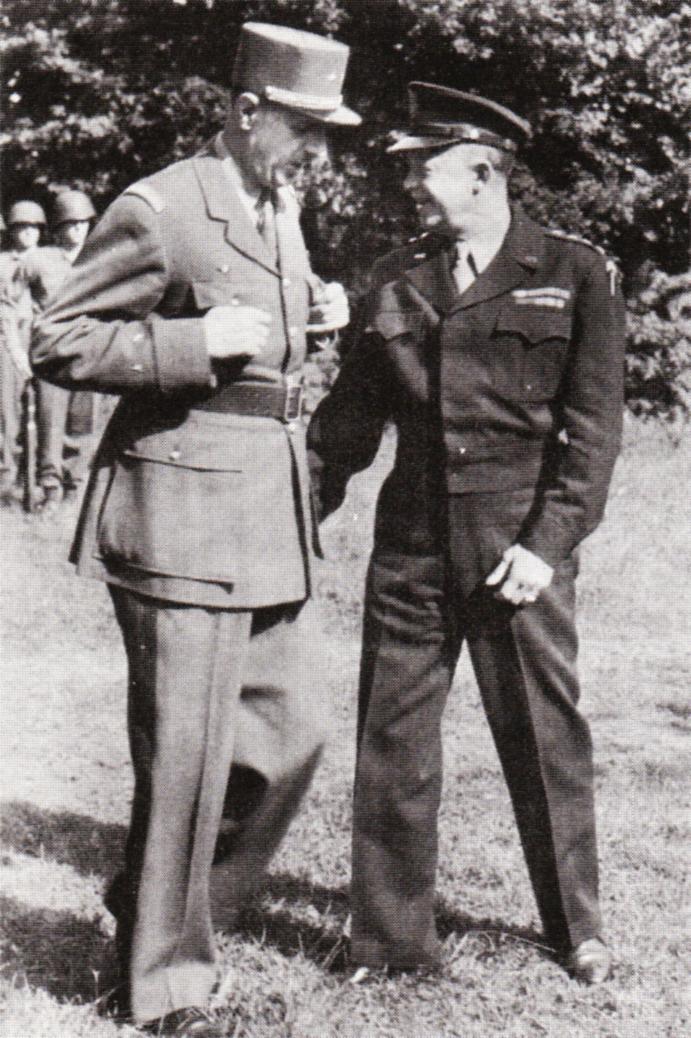
De Gaulle and
Eisenhower
conferring
National
Archives
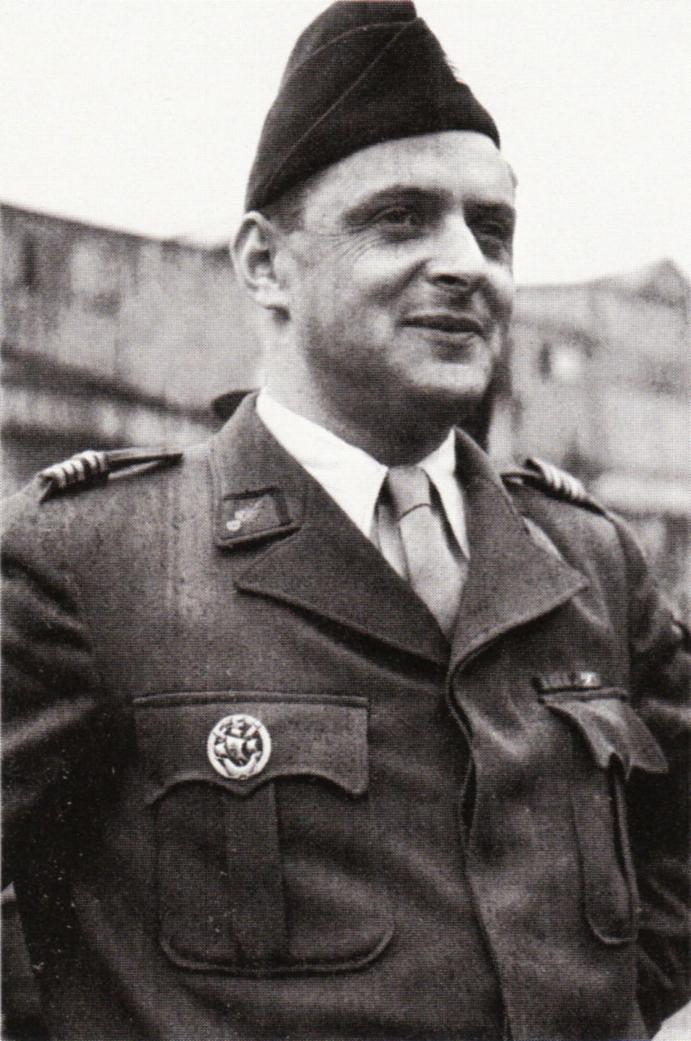
Henri Tanguy -
leader of
the Communist Partisans
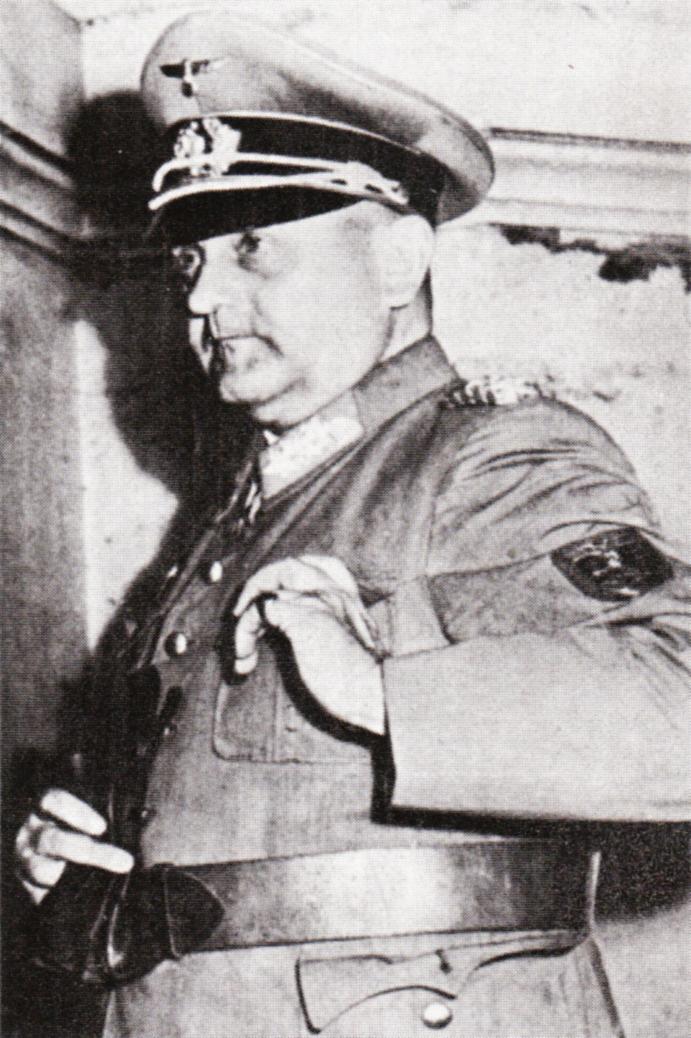
Major General
Dietrich von
Choltitz, German Commander in Paris
National
Archives
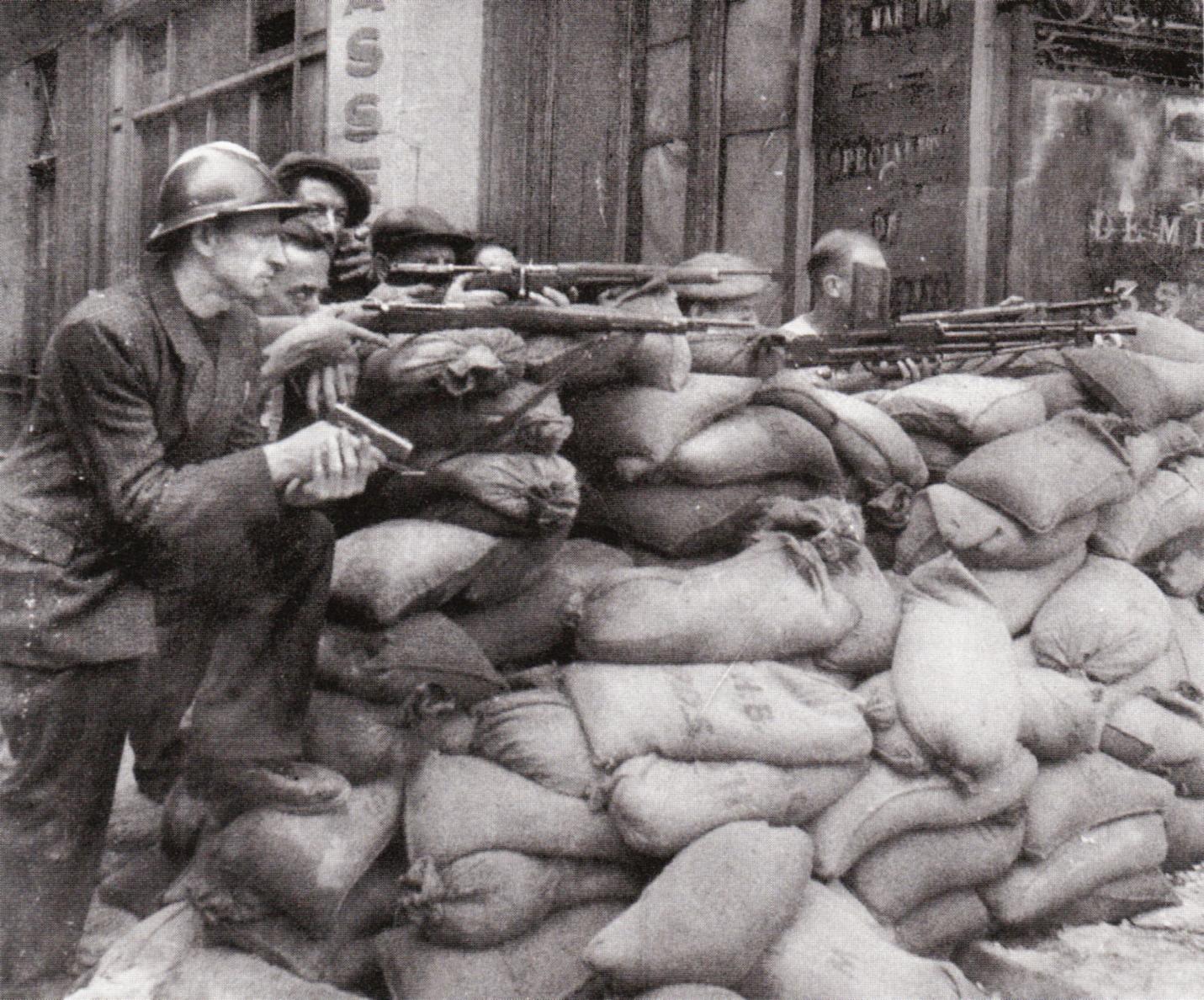
Free French Partisans
taking
a stand at one of the "barricades" in Paris
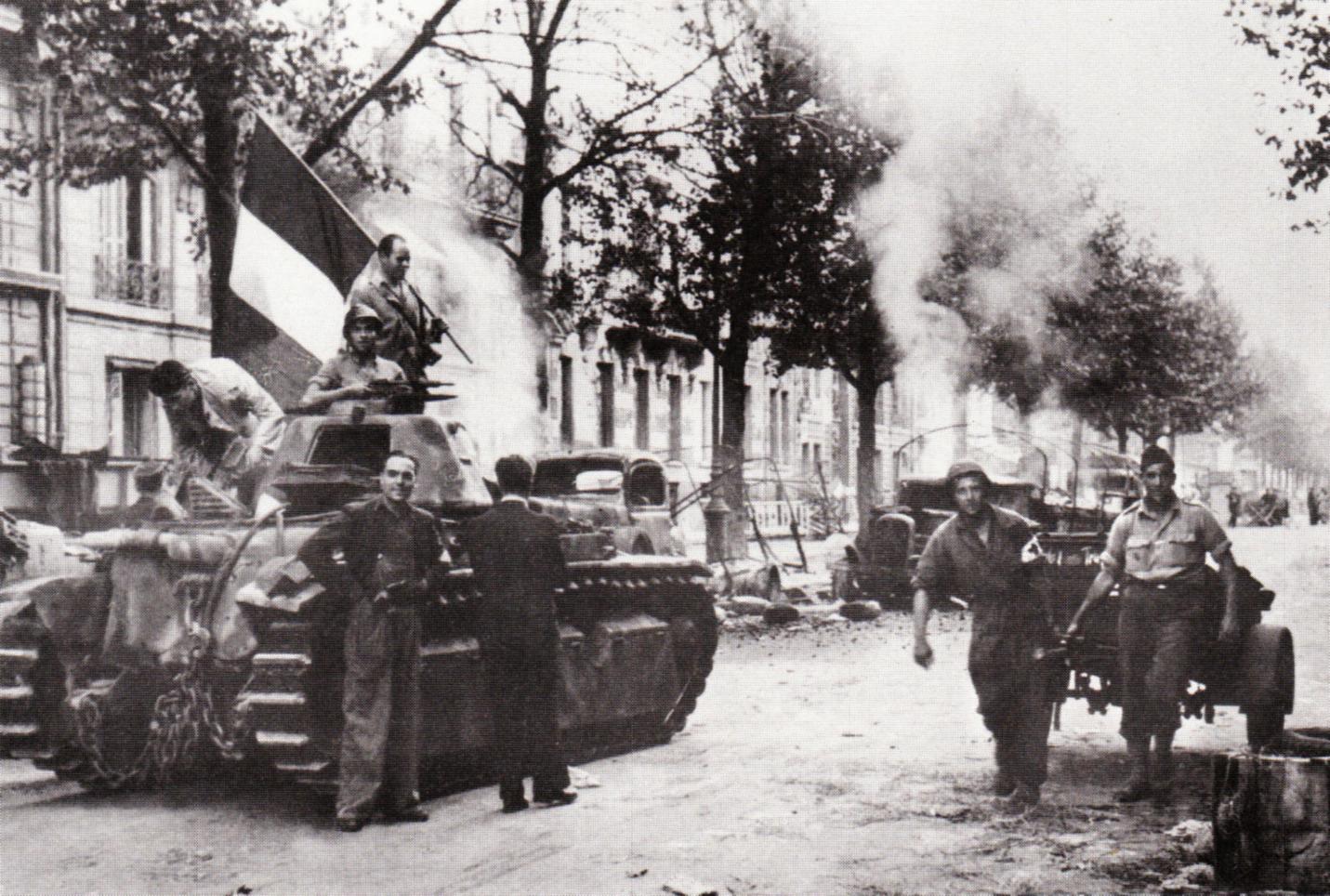
Waving the
French tri-colored
flag in victory atop a captured German tank
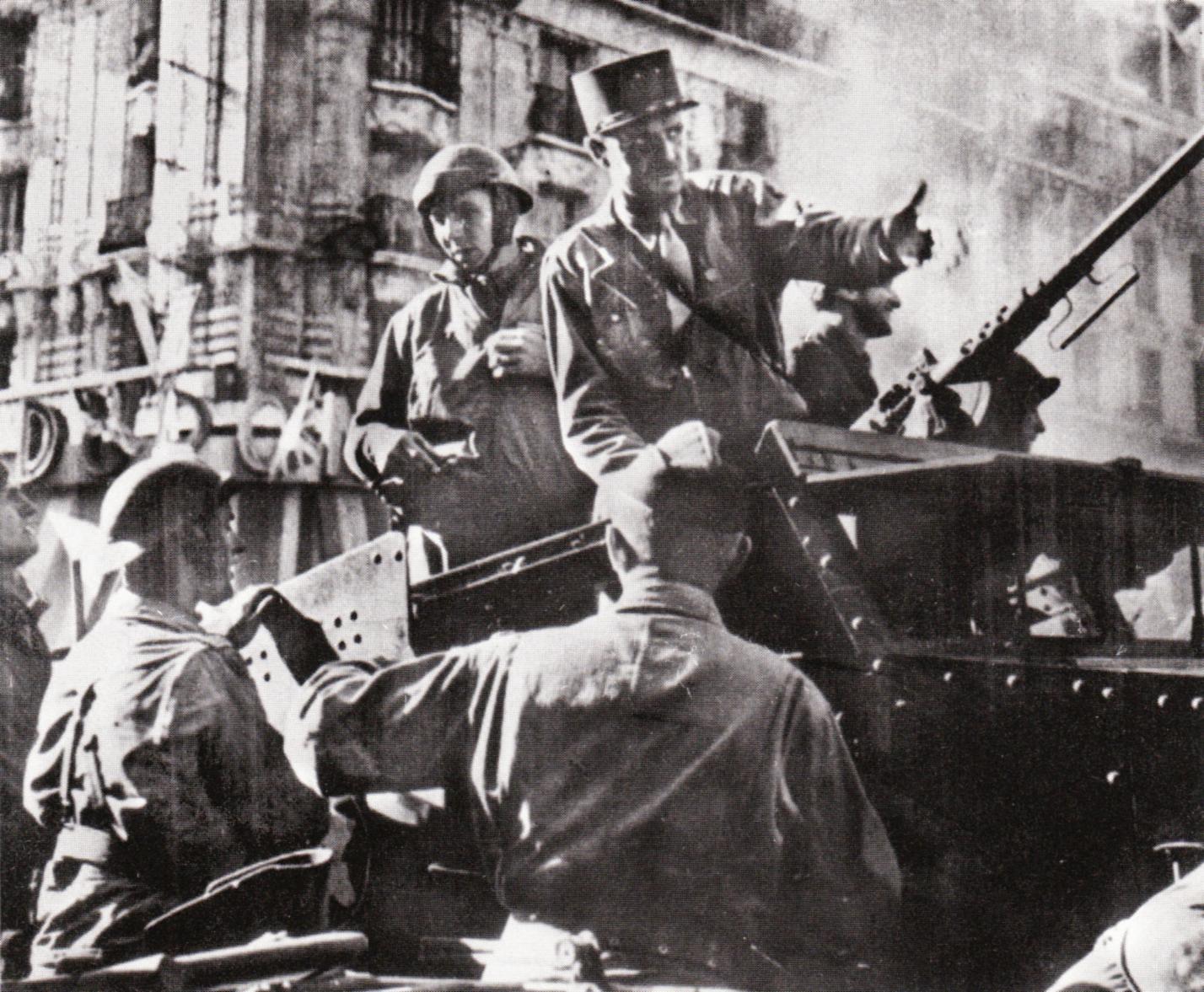
General Jacques
Phillippe
Leclerc directing French action in Paris from his half-track.
National
Archives
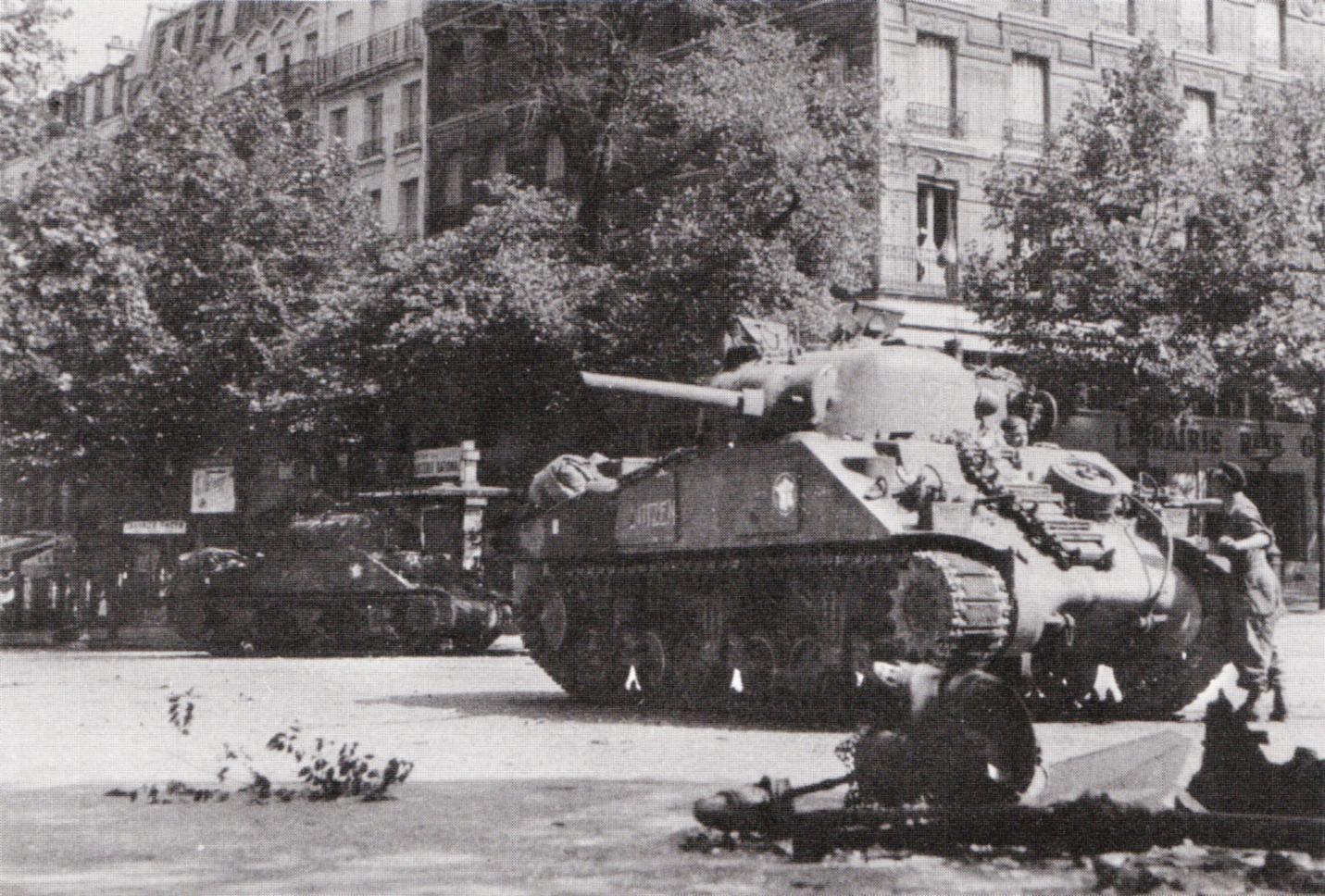
Tanks of Gen.
Leclerc's 2nd
Armored Division moving down the Boulevard St. Michel (August
25)
National
Archives
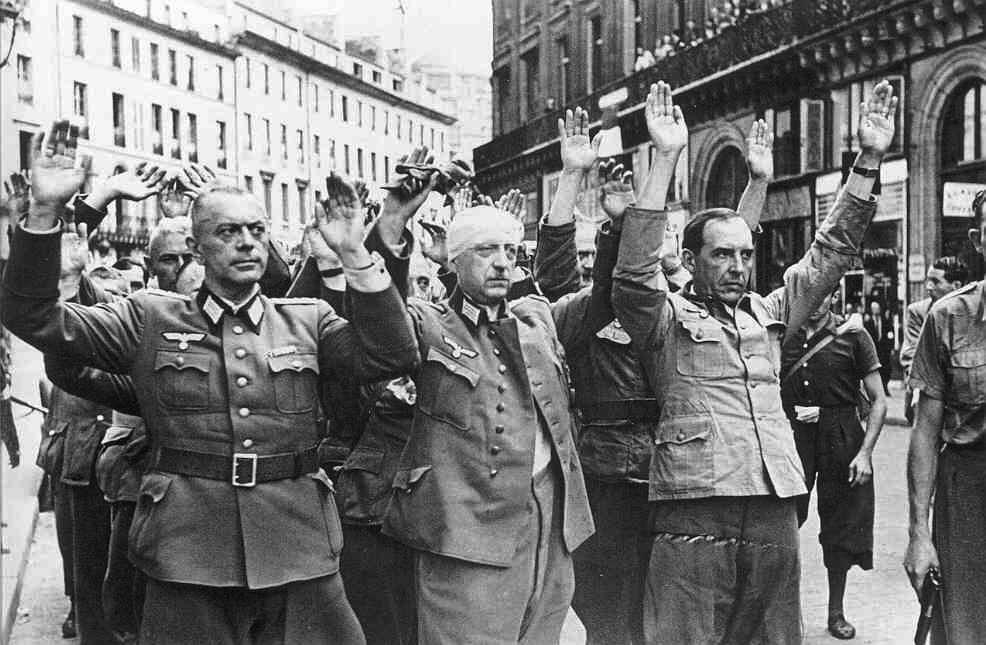
Germans
surrender in Paris – August 25, 1944
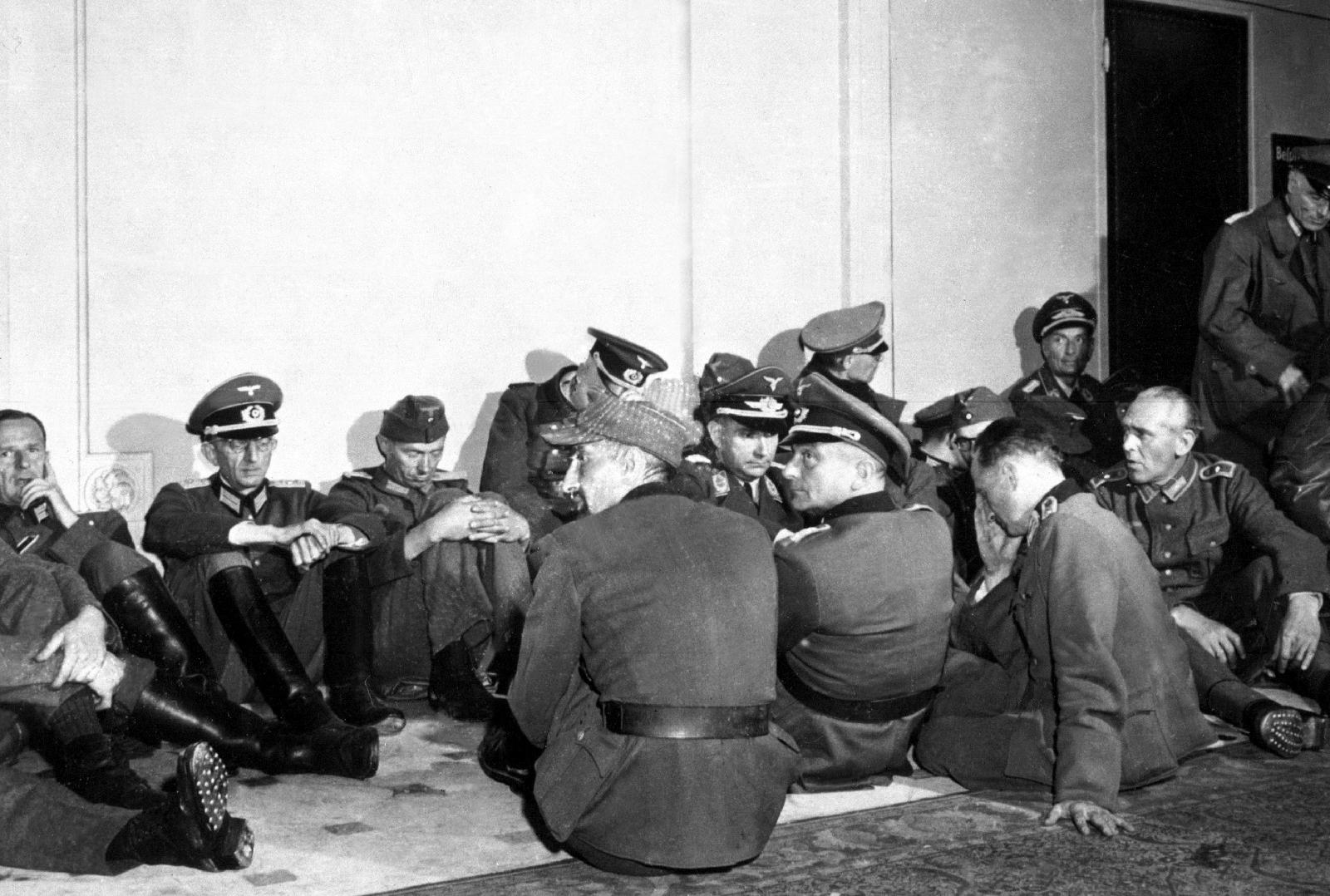
High ranking
German officers
seized by Free French troops which liberated their country's
capital are
lodged in the Hôtel Majestic, headquarters for the
Wehrmacht
in the days of the
Nazi occupation, Paris, France.
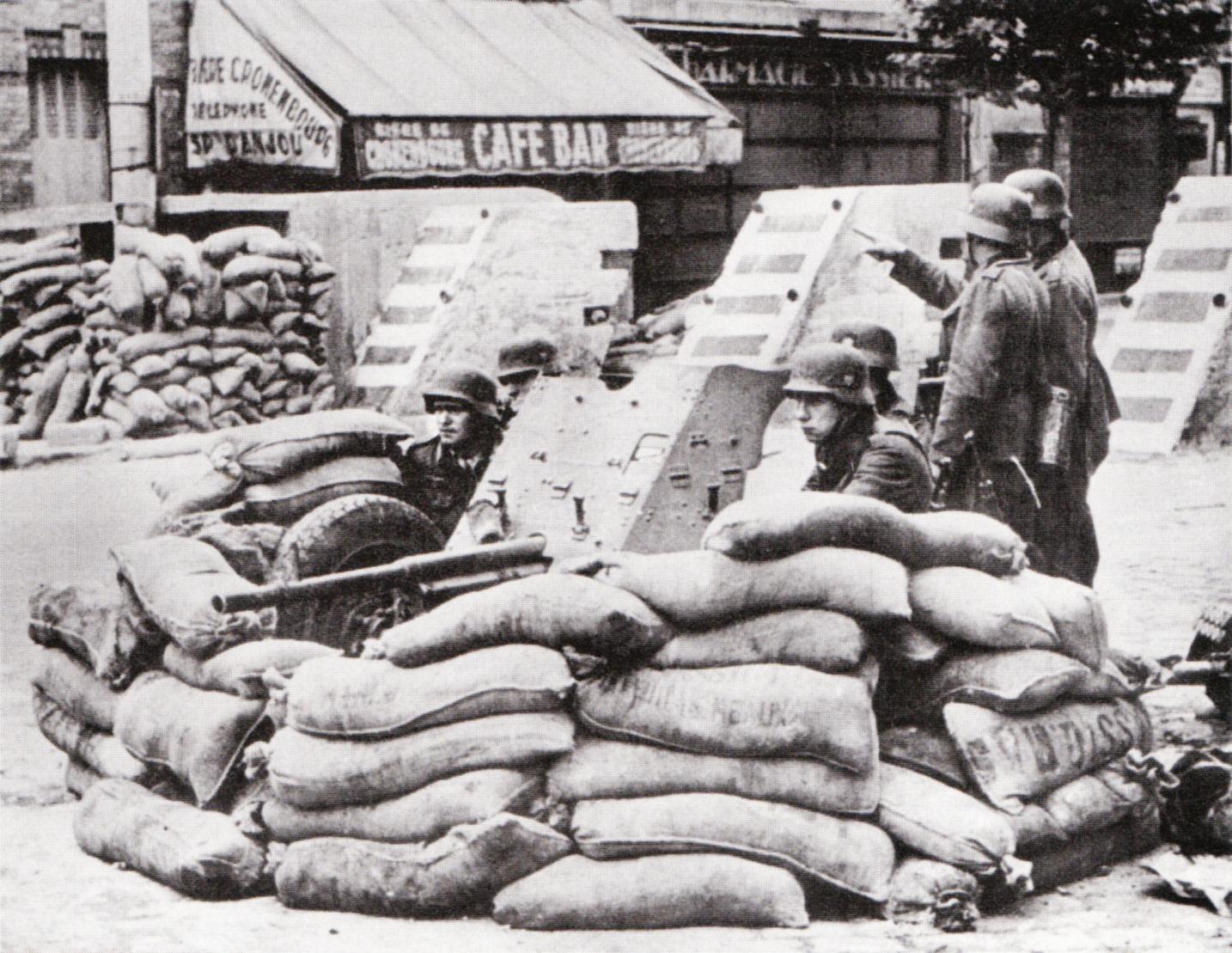
Small pockets of
German resistance
would hold out here and there
in the Paris suburbs for the next
week
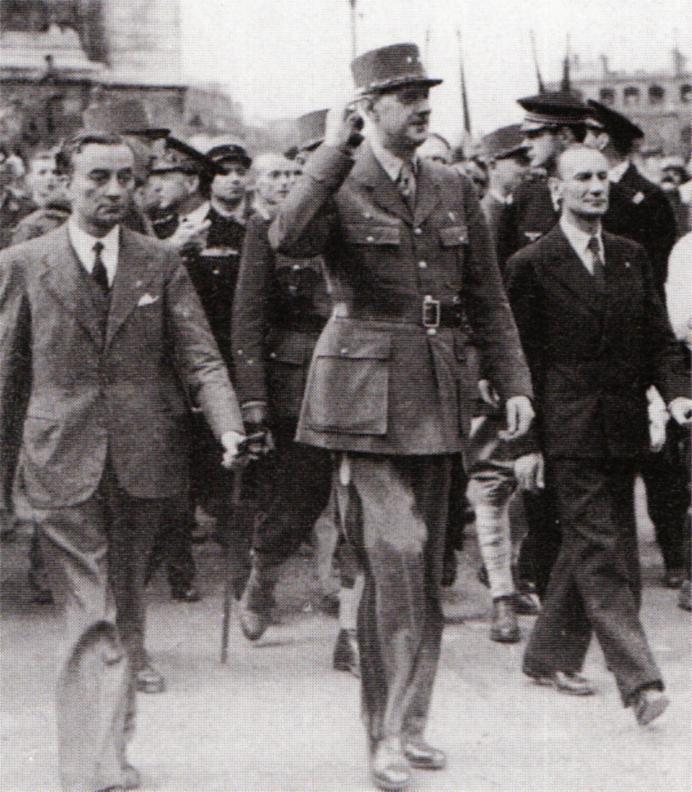
De Gaulle
leading the victory
march down the Champs Elysées – March 26
National
Archives
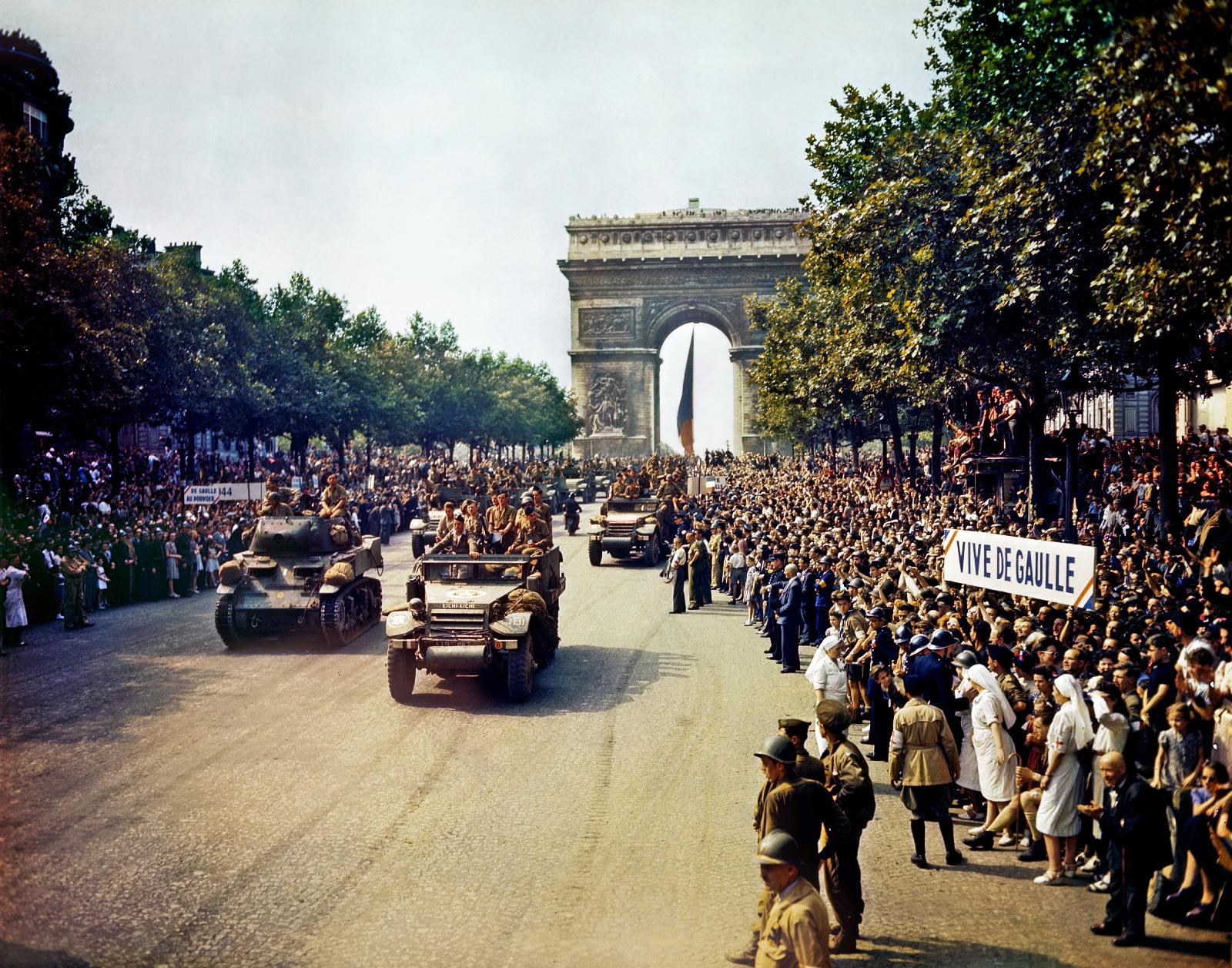
Free French
tanks and half-tracks
of General Leclerc's 2nd Armored Division pass through the
Arc de
Triomphe, down the Champs Elysées,
after Paris was liberated. August 26, 1944
Library of
Congress
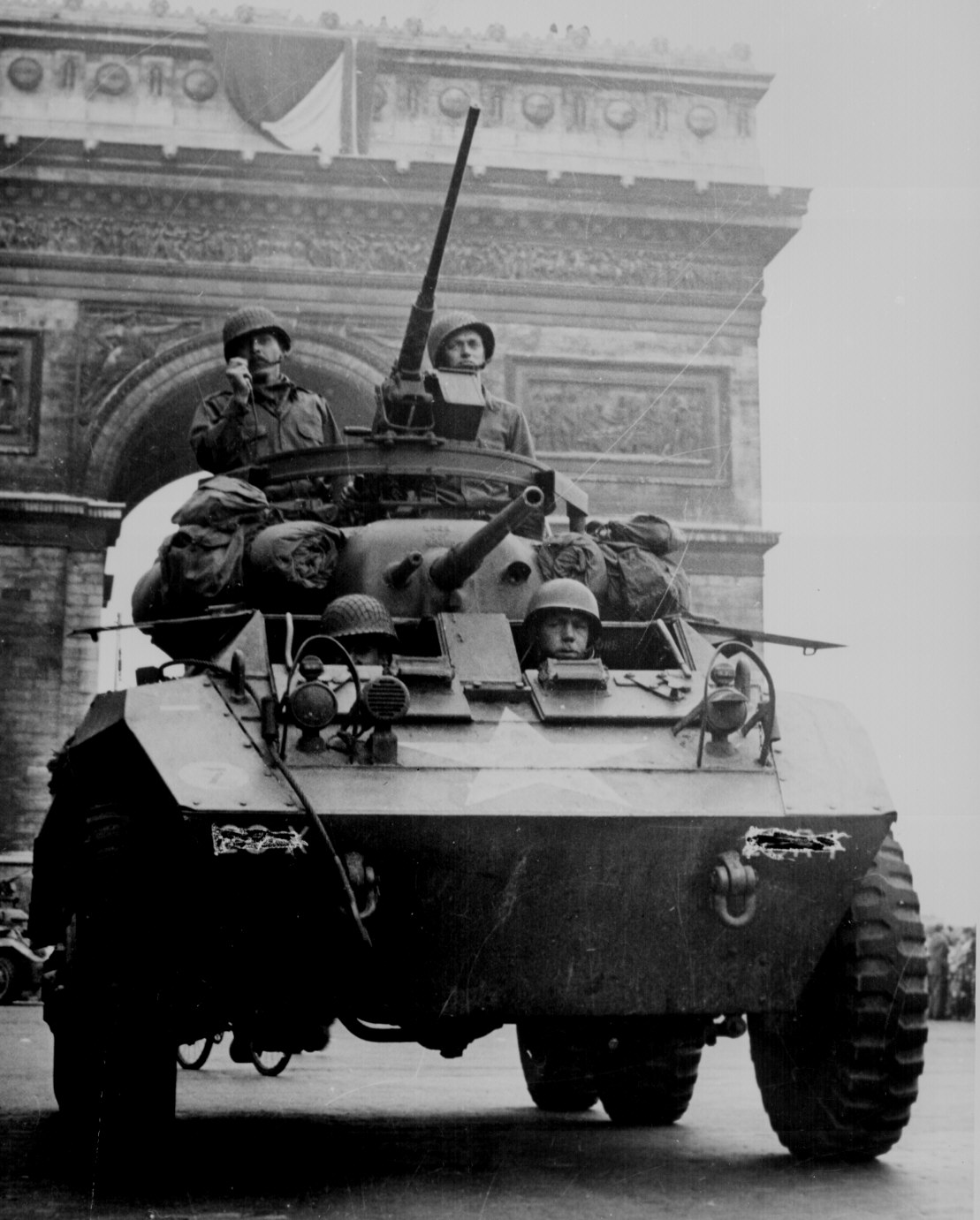
American troops in tank passing the
Arc de Triomphe after the liberation of Paris, August 1944.
National Archives
208-YE-68
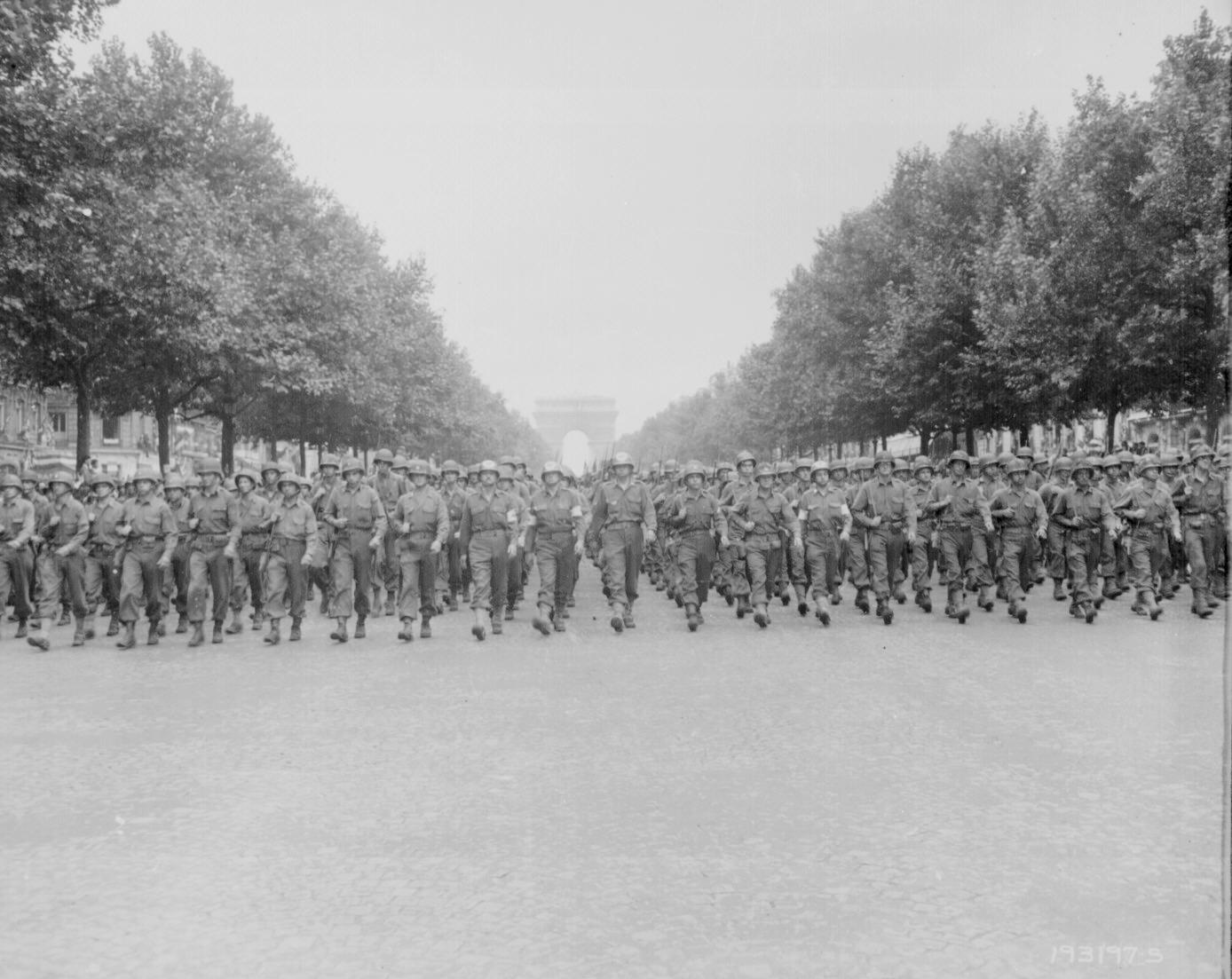
"American
troops of the 28th
Infantry Division march down the Champs Elysees, Paris,
in the 'Victory' Parade."
Poinsett, August 29, 1944.
National Archives
111-SC-193197
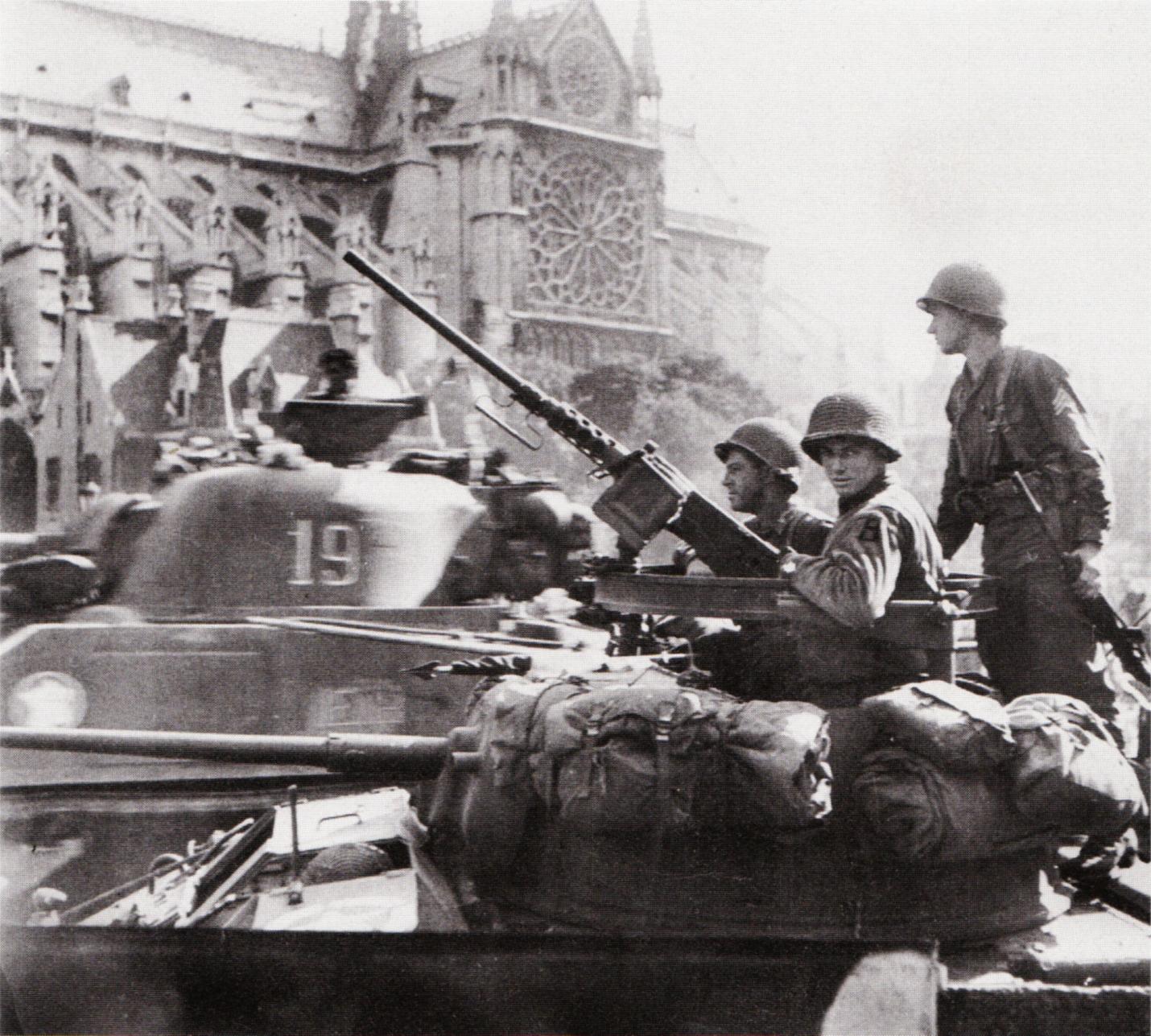
An American
tank crew in
front of the Notre Dame Cathedral
standing ready to defend Paris from German
holdouts
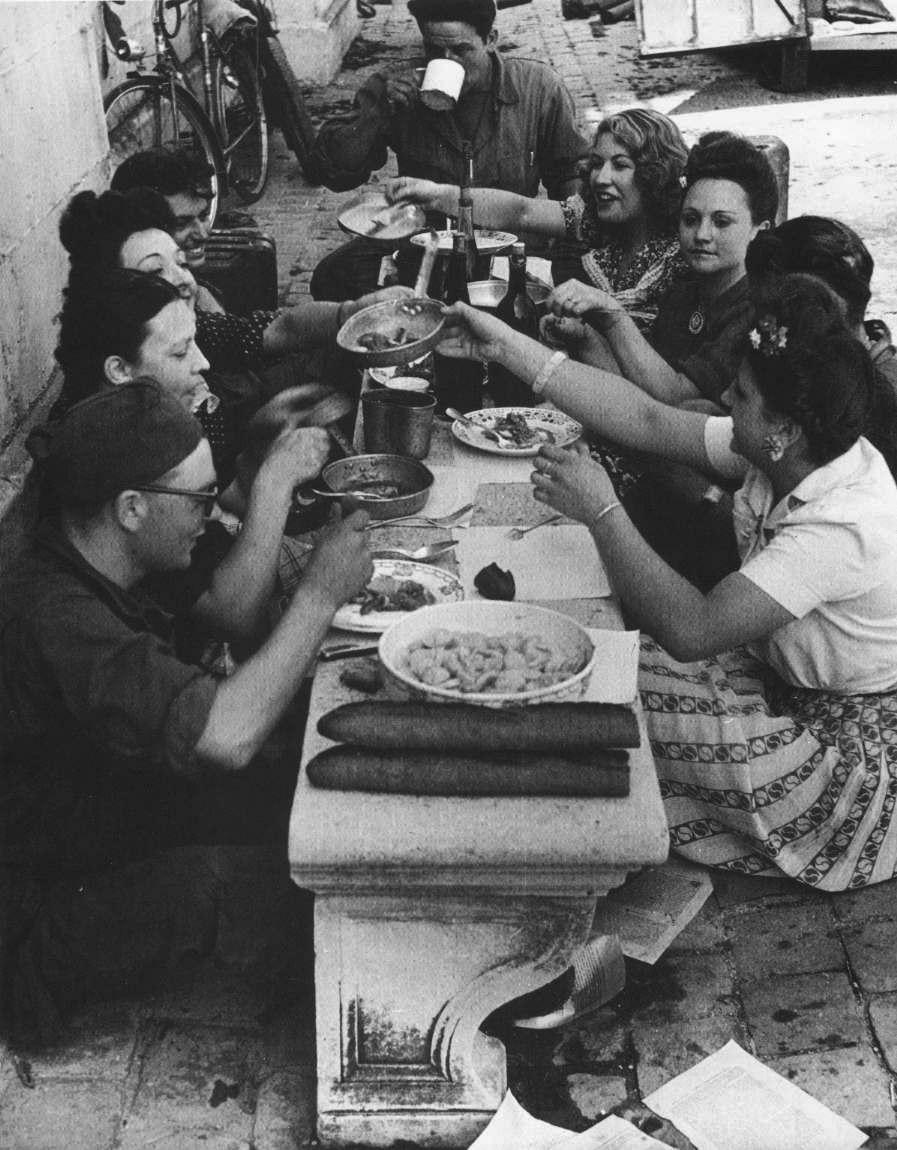
GIs sharing a
streetcorner
feast with the French in Paris
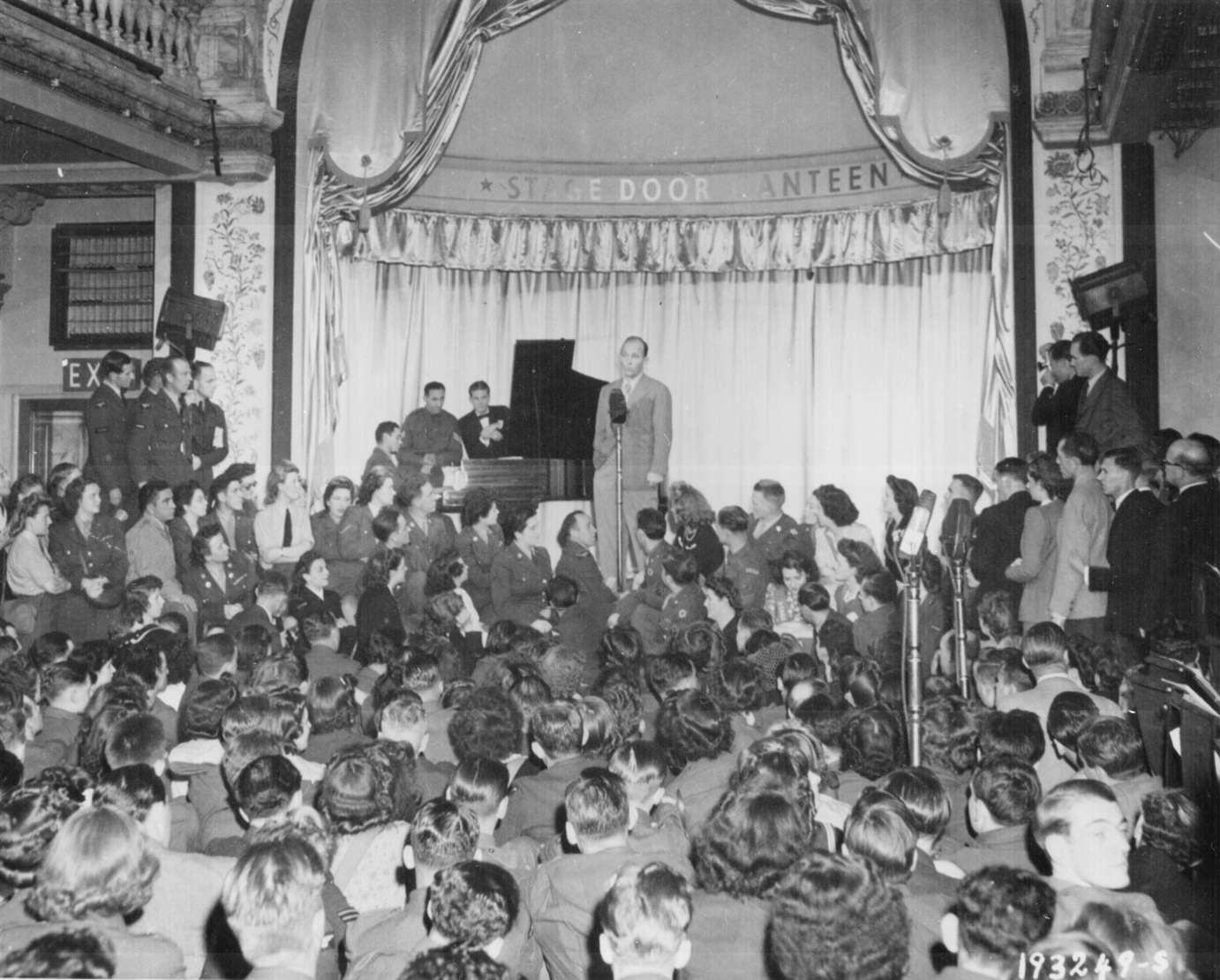
"Bing Crosby, stage, screen and radio
star, sings to Allied troops at the opening of the
London
stage door canteen in Piccadilly, London,
England." Pearson, August 31, 1944.
National Archives
111-SC-193249


|
THE SOVIET SUMMER OFFENSIVE ...
AND THE DESTRUCTION OF WARSAW
|
|
|
|
The Soviet summer offensive of 1944
By mid-1944 the Russians
were ready
for a major offensive against the Germans, one designed to drive them
from
the borders of the Soviet Union and the eastern part of Poland that the
Russians had once held under the Molotov-Ribbentrop Treaty with
Germany.
The Russians had been making constant progress against the Germans in
eastern and central Ukraine … and the Russian troops were in high
spirits.
In mid-July the offensive began on three separate fronts and quickly
achieved
its objectives. Indeed, by the end of August the Germans had lost
approximately everything they had gained since June of 1941 when they
had
undertaken the surprise invasion (Operation Barbarossa) of Soviet-held
territory in Poland and even the Soviet Union itself. By the end
of August the Russians had rolled all the way up to the Vistula River
in
central Poland. The Germans were in retreat everywhere in the East.
|
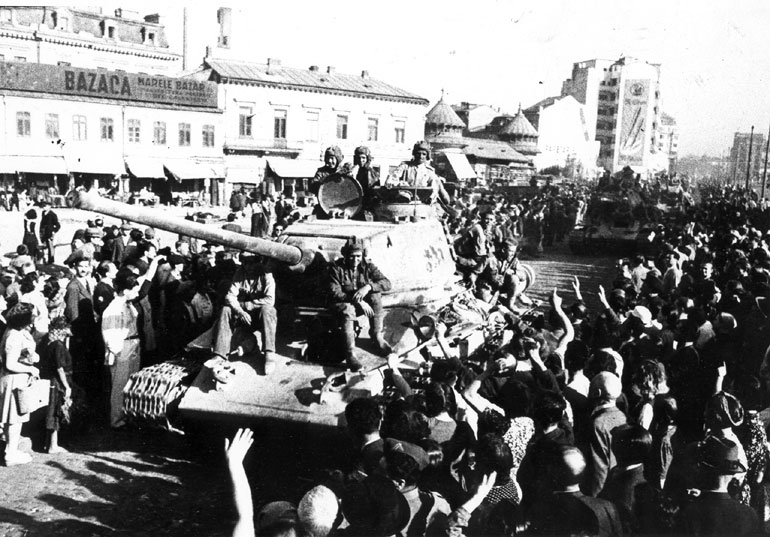
Russian troops being welcomed in the Romanian capital of Bucharest – August 1944
|
Stalin
did not send his troops through Poland to
liberate it
... but to enslave it!
The Warsaw Uprising (August-September 1944). Then
the Russians abruptly stopped their advance. This was because the Polish
Government-in-exile in London had just given the orders for the Polish
Resistance to rise up against its German occupiers – in an obvious
effort to find the Poles in control of the capital before the
distrusted Russians could make their entry into the city.
But Stalin
was going to have none of this. He had already created his own Polish
government-in-exile, a Communist group that he intended to place in power
over Poland – and to control fully. So he ordered his Russian troops to
halt and let the Germans do what he knew they by instinct would do to
the rebels: destroy them all ... and possibly even their beautiful and
ancient capital city of Warsaw.
Mass destruction. Stalin proved right in his estimation of
the Germans. The Germans were brutal. Some 150,000 to 200,000 Poles
were killed by the Germans. And Warsaw was nearly completely destroyed
– by careful design of the Germans themselves, who torched the
buildings that their bombs had not destroyed.
With the surrender of the Polish
resistance (October 2, 1944), the surviving civilian population was
removed from the city by the Germans and sent to a transit camp for
scrutiny, with nearly 100,000 sent to labor camps and some 60,000 sent
to concentration (or "death") camps.3
During
this time, Russian action in the region had halted completely ... and
was resumed
under Stalin's orders only when the Polish resistance movement was
crushed by the Germans ... and Warsaw destroyed. Then and only then
was
Stalin willing to have the Russians resume their
offensive against the Germans … "liberating" (taking control of) a
broken
city which the Russians then intended to govern.
3After the war Stalin
had these same returning Polish prisoners arrested (sent off to Soviet
concentration camps in Siberia or even executed directly) on various
charges (including even Fascism!), fearing such former Polish activists
would become potential rebels against his own rule in Poland (through
compliant Polish Communists).
|
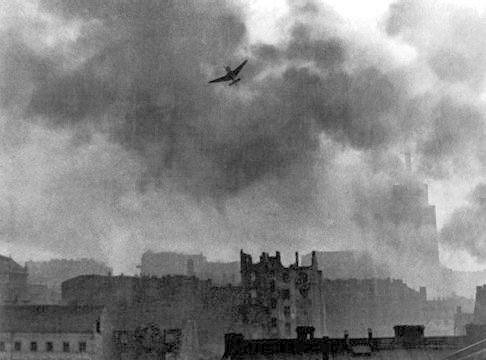
A German Stuka Ju-87 bombing Warsaw's Old Town – August 1944
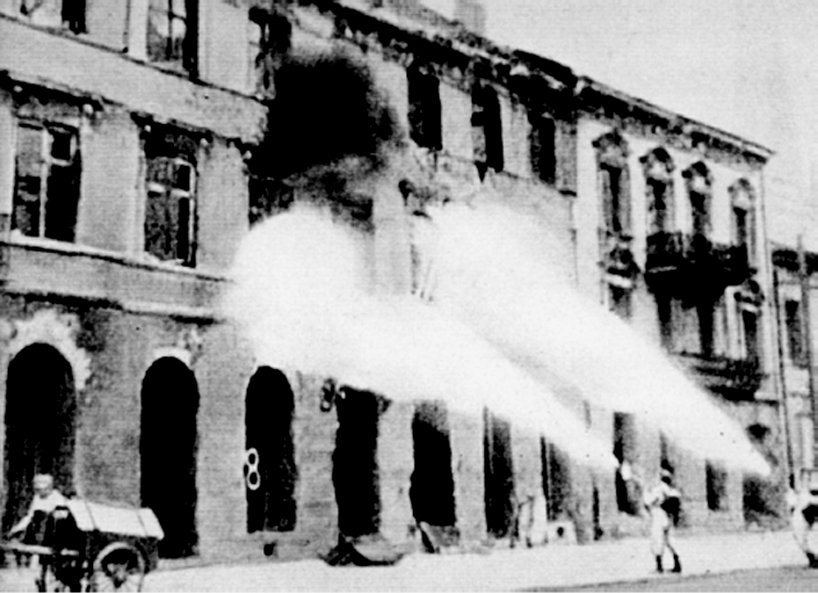
German soldiers of the
Brennkommando torching Warsaw buildings
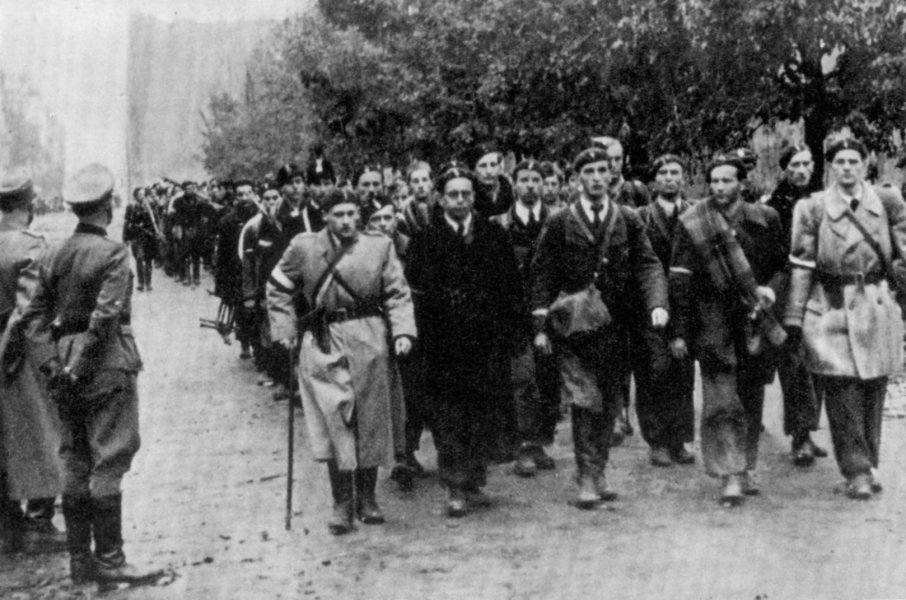
The Polish Uprising ceases with the surrender of the Polish resistance – October 2, 1944.
Then – and only then – Stalin ordered his troops to resume their attacks on the Germans!
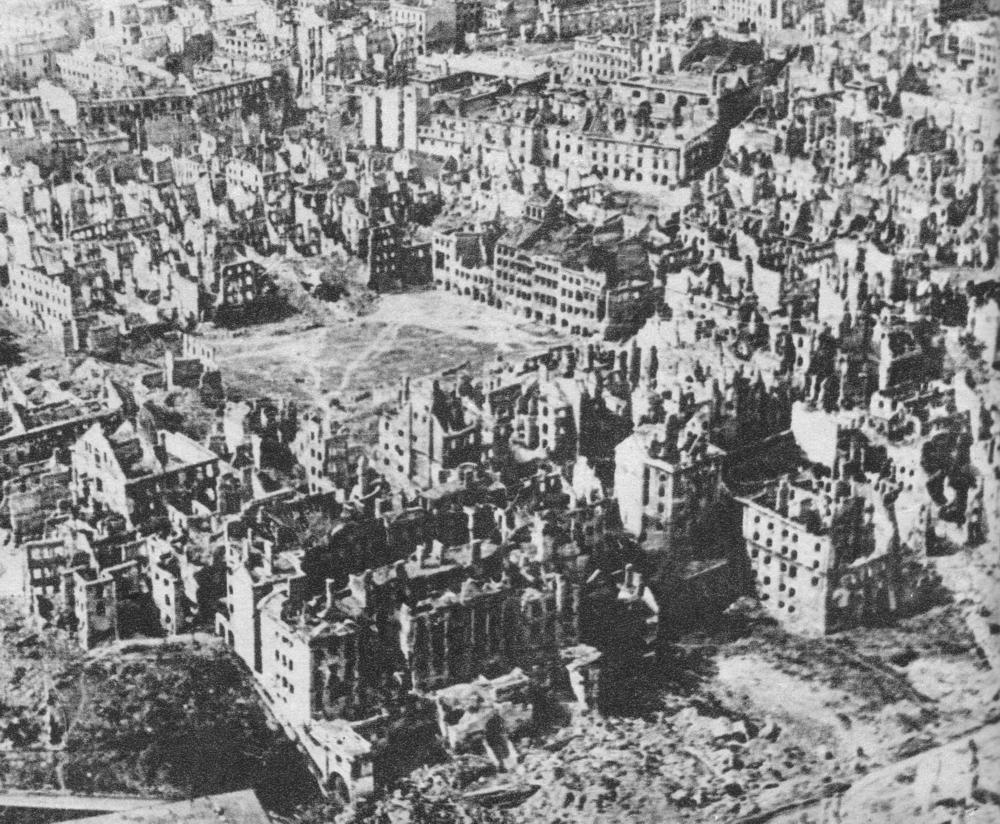
A greatly devastated Warsaw


|
THE GERMANS HOLD
THE LINE IN THE NETHERLANDS .... AND UNDERTAKE A COUNTERATTACK IN
BELGIUM
|

|
|

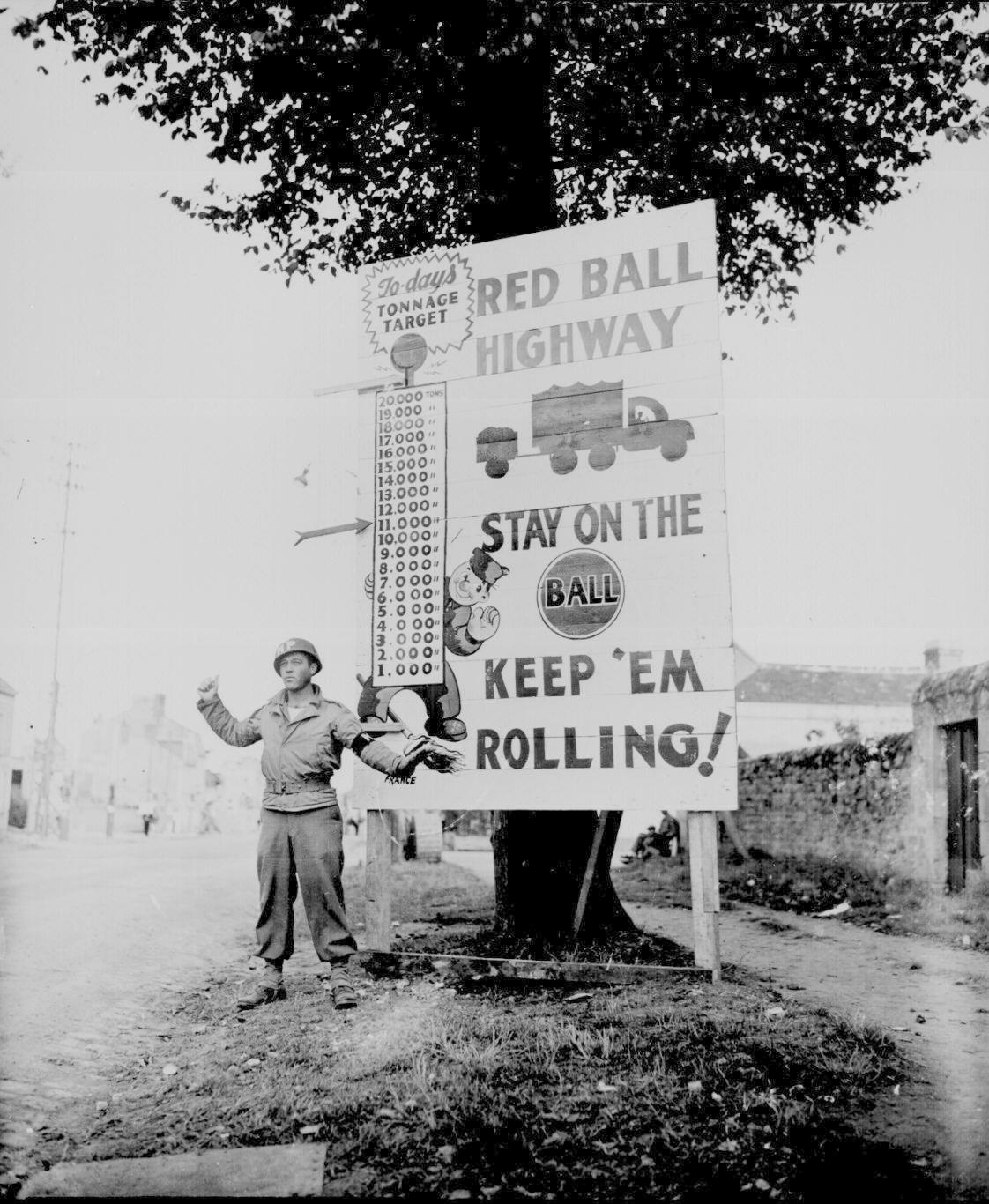
"Corporal Charles H. Johnson of the
783rd Military Police Battalion, waves on a 'Red Ball
Express' motor convoy rushing priority
materiel to the forward areas, near Alençon, France."
Bowen, September 5, 1944.
National Archives
111-SC-195512
|
The failed Operation Market Garden in the Netherlands (September-November 1944)
British General Montgomery, who commanded the northern flank of the Allied Army in the West, was given the lead4
in implementing a concentrated assault on the German defenses in the
north of Holland – the purpose being to gain a crossing of the Rhine
River in the more lightly defended Netherlands. Montgomery's claim was
that this would allow the Allies to swing around from the North,
encircle the heart of industrial Germany and gain quick access to
Berlin, possibly bringing the war to an end before Christmas.
Although numerous paratroopers were
dropped behind German lines to take control (protection) of the vitally
needed bridges, bringing up ground troops to help secure this northern
passage proved to be far more difficult than Montgomery had
anticipated. Troop movement had to take place along narrow roads
elevated above the often-swampy surrounding land and through Dutch
towns, where the population poured out onto the streets to celebrate
their freedom with their Allied liberators, often bringing troop
movement to a near halt. Thus the element of surprise was completely
lost. The Germans were quick to understand the Allied program and move
their troops not only into strong defensive positions, but capture most
of the paratroopers at these vital bridges. The whole thing turned into
a monumental disaster
4This
would infuriate American general Patton, whose tank corps was making
good headway against the Germans as it advanced toward Germany itself.
For this meant not only diverting important supplies (especially fuel
for his tanks) to his nemesis Montgomery but also the loss to Patton of
the glory that both men sought on the battlefield!
|
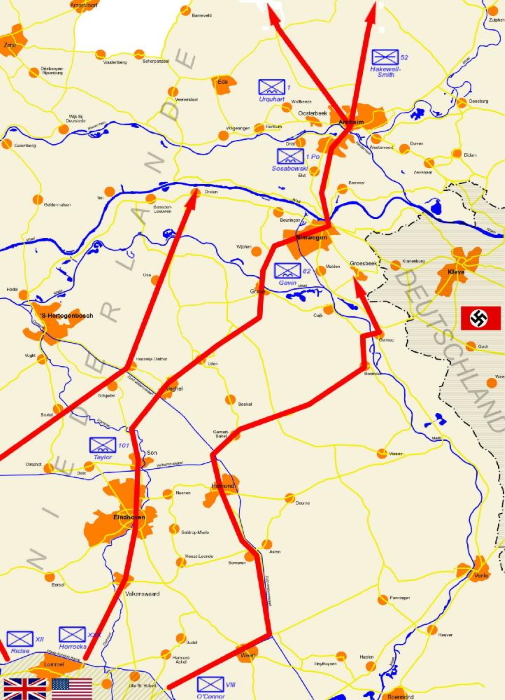
The original plan
for Operation
Market Garden – September 17-25 1944
Wikipedia -
"Operation
Market Garden"
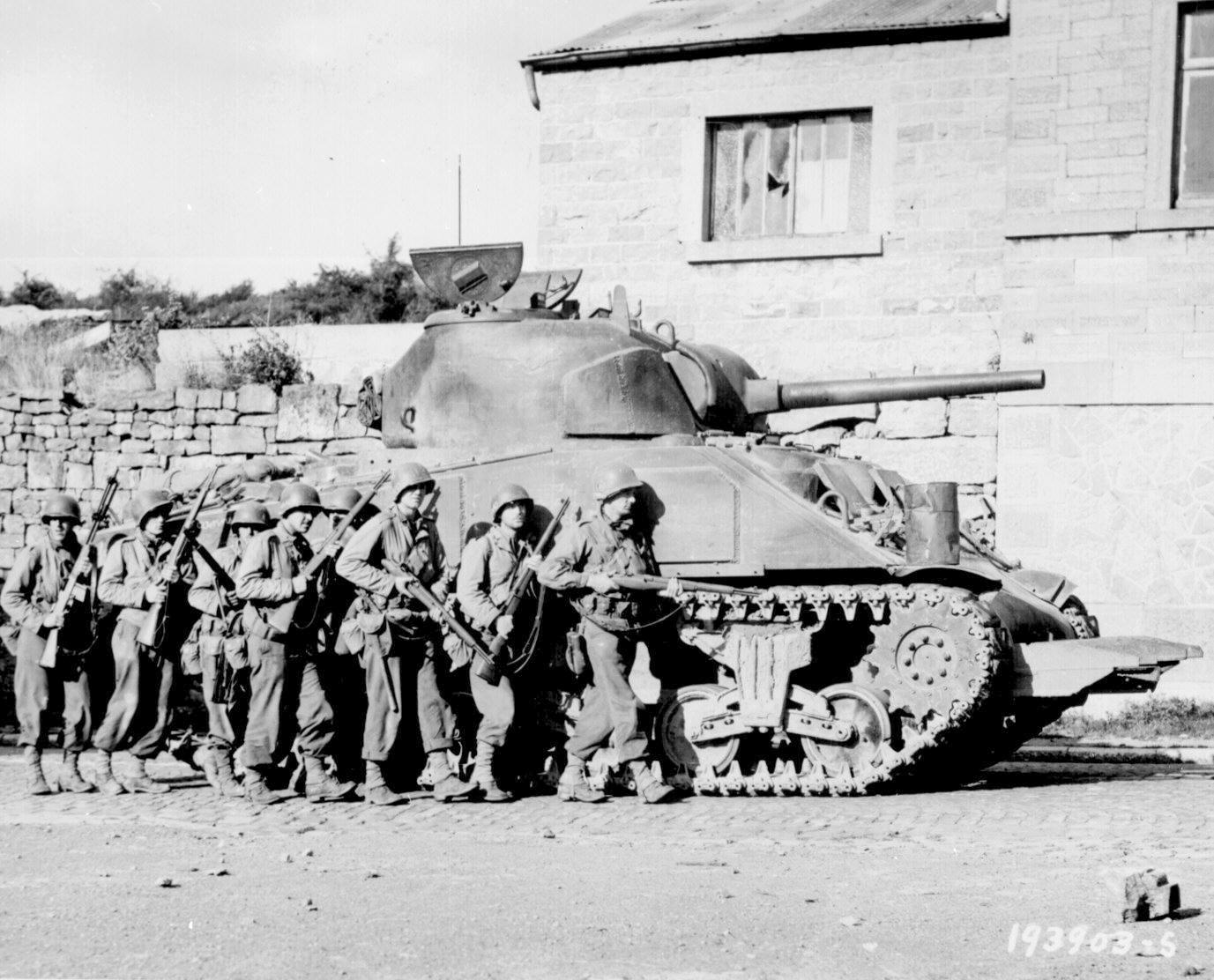
Yanks of 60th
Infantry Regiment
advance into a Belgian town under the protection of a heavy
tank.
September 9,
1944.
National Archives
111-SC-193903
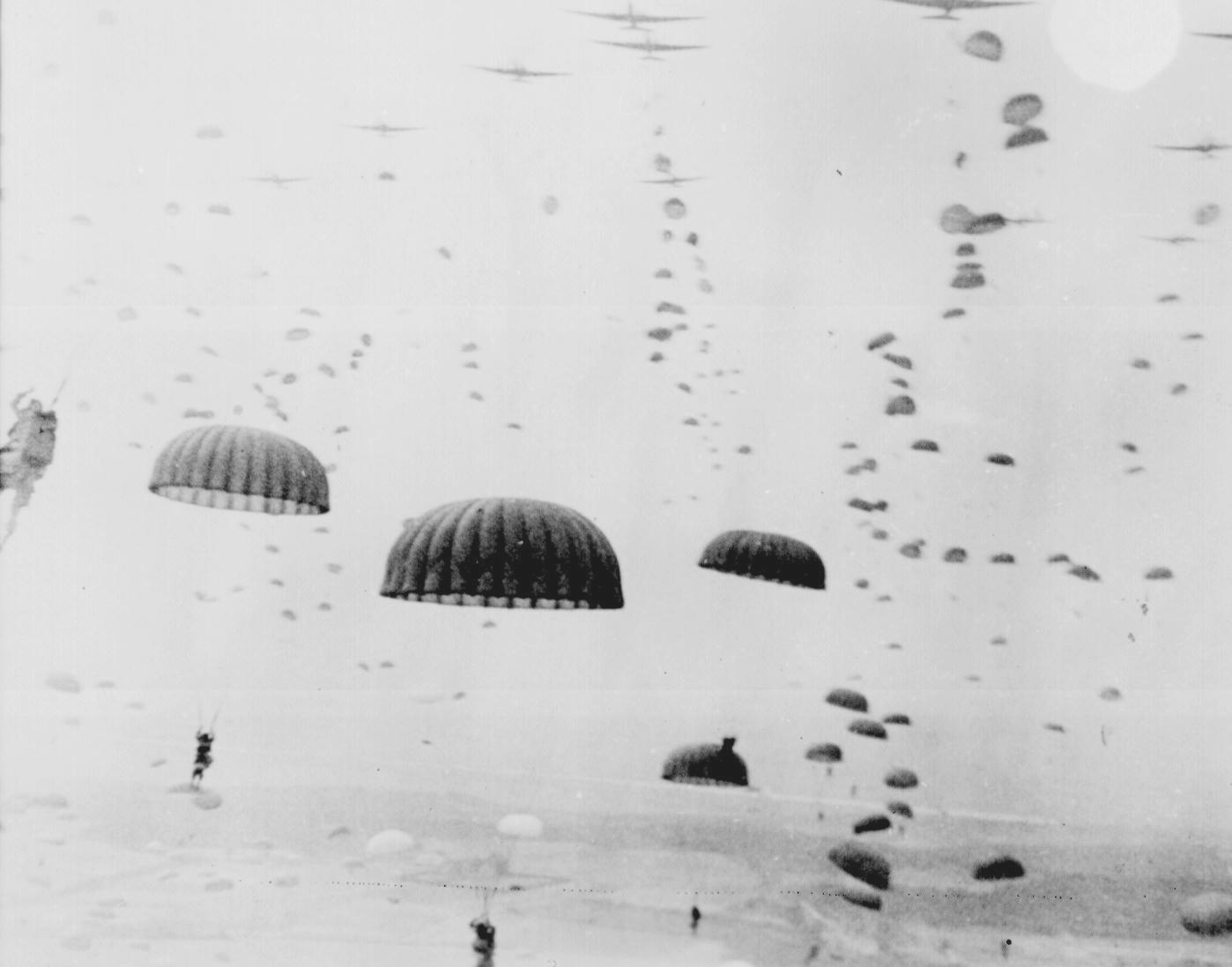
Parachutes open
overhead
as waves of paratroops land in Holland during operations
by the 1st Allied Airborne
Army. September 1944.
National Archives
111-SC-354702
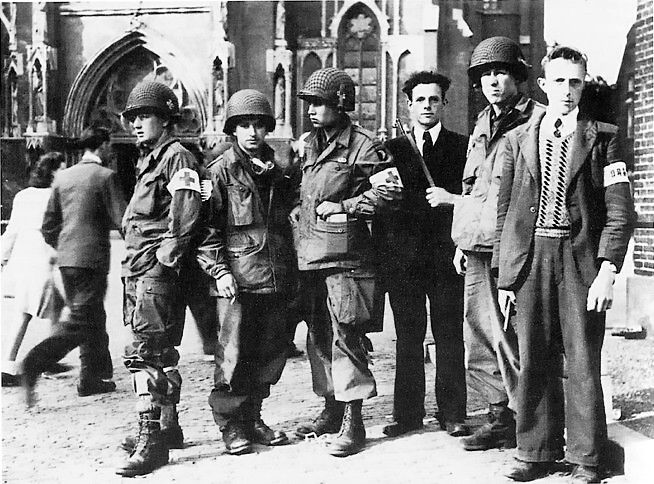
The 101st
Airborne with members
of the Dutch Resistance in front of the Eindhoven
cathedral.
CIA
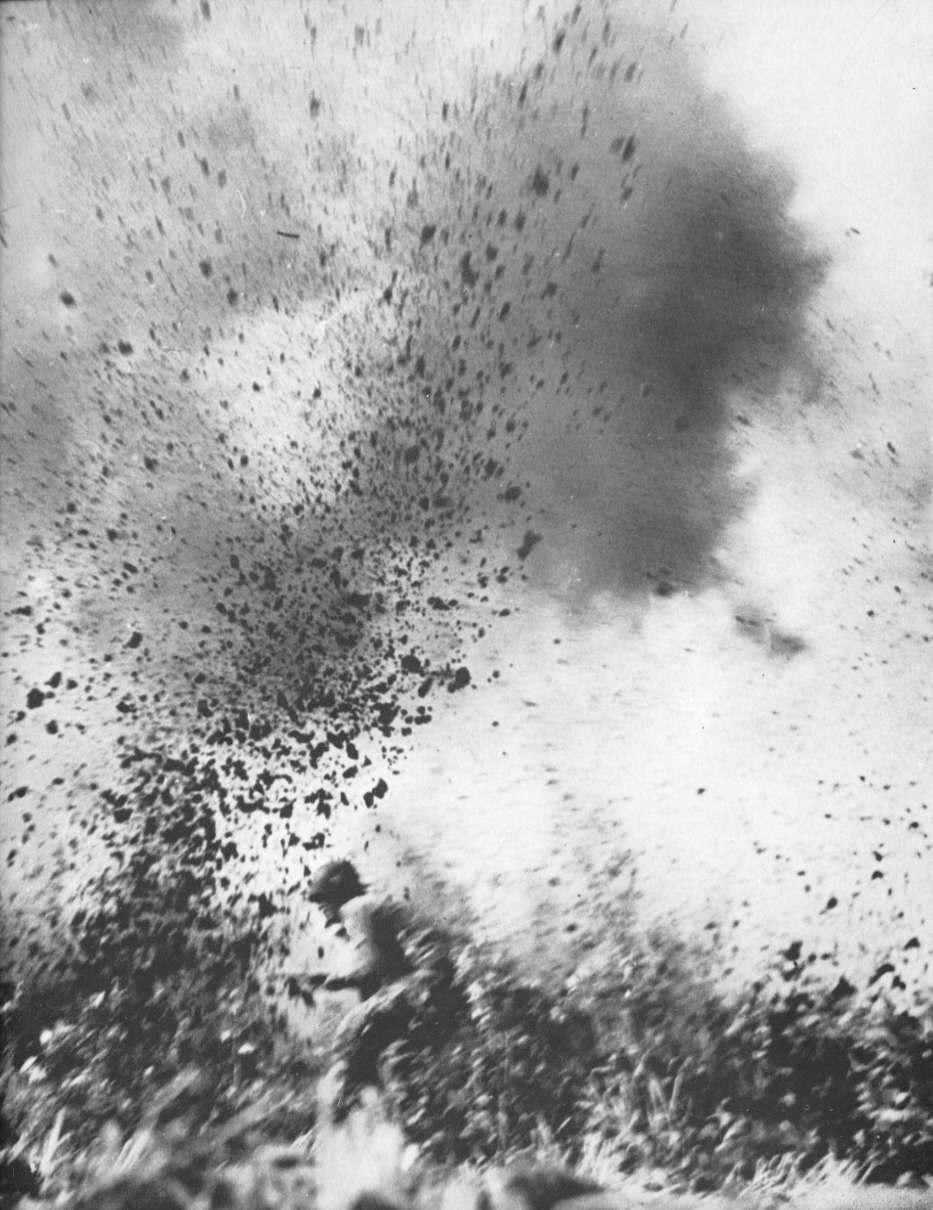
A paratrooper in Holland
under fire
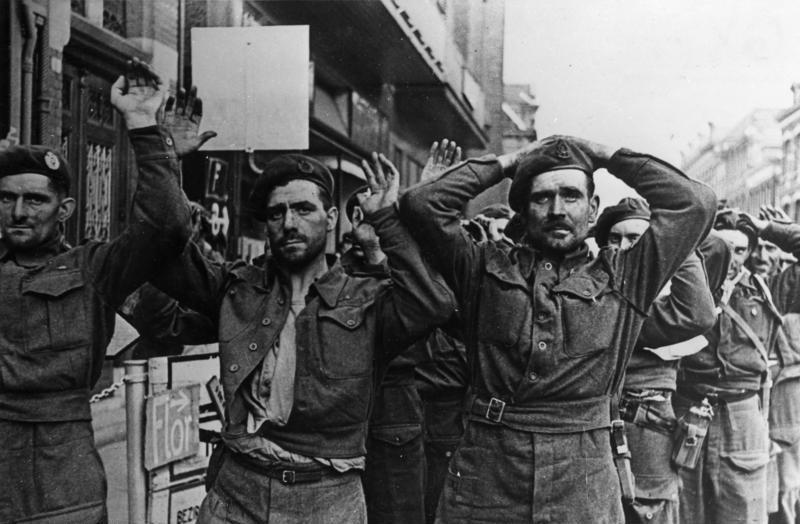
British prisoners
taken at
Arnhem by the Germans
Deutsches Bundesarchiv
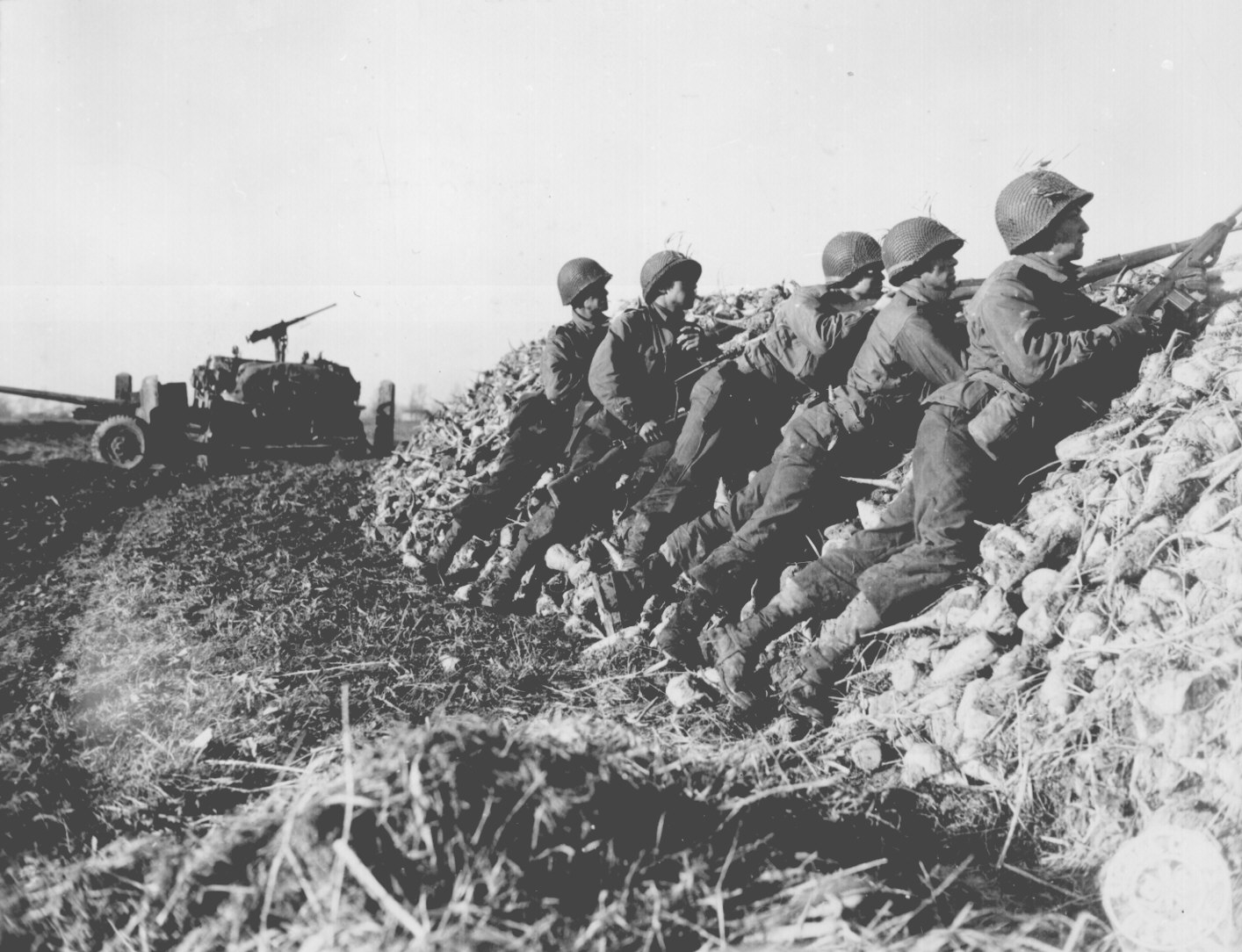
"A U.S. Infantry
anti-tank
crew fires on Nazis who machine- gunned their vehicle,
somewhere in Holland." W.
F. Stickle, November 4, 1944.
National Archives
111-SC-197367
Meanwhile, elsewhere the
advance against the Germans continues
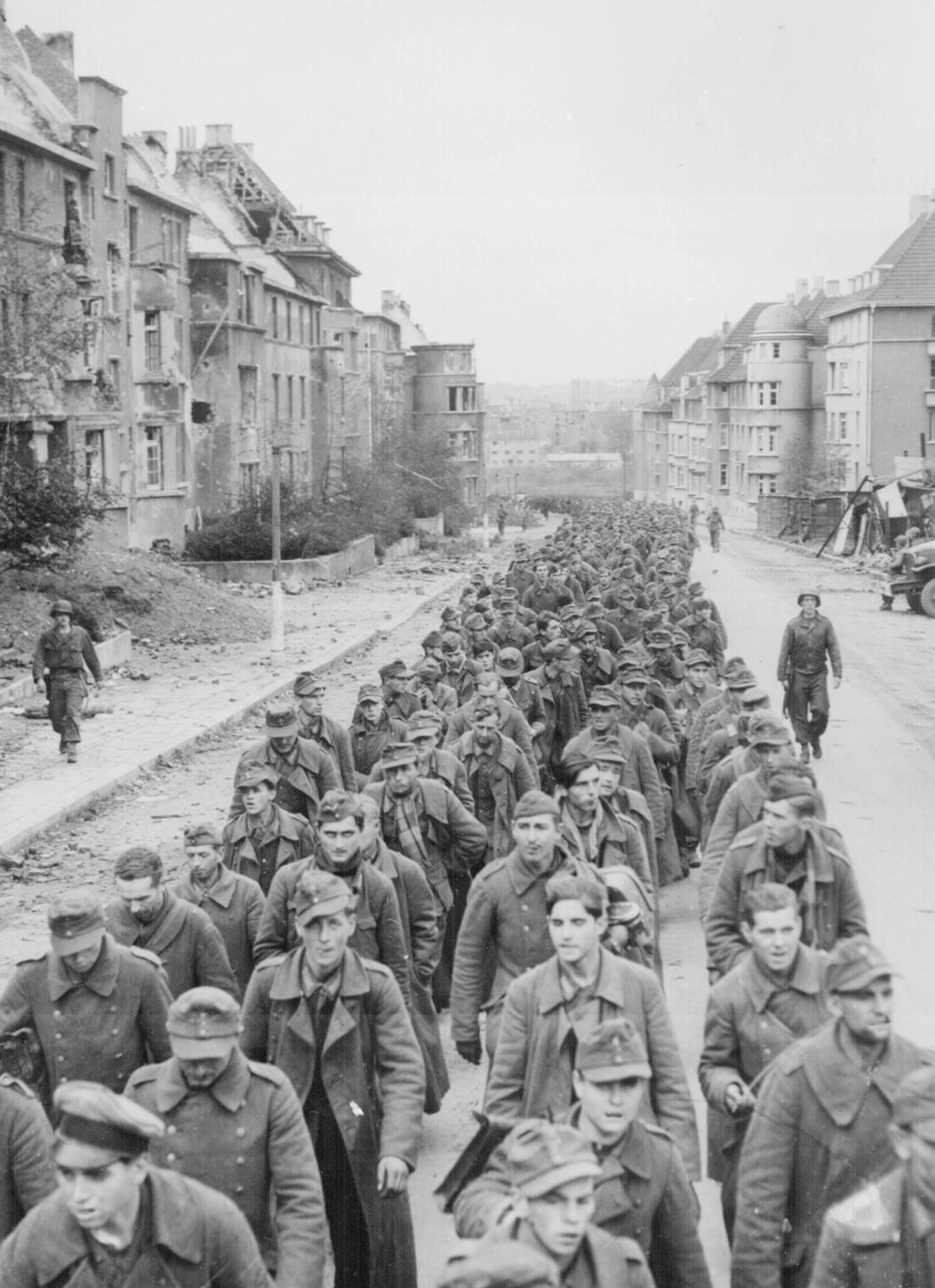
"The endless
procession of German prisoners captured with the fall of Aachen
marching through the ruined city streets
to captivity." Germany, October 1944.
National Archives
260-MGG-1061-1
Meanwhile ... back in the States, Roosevelt
is elected to a fourth term of office as US President
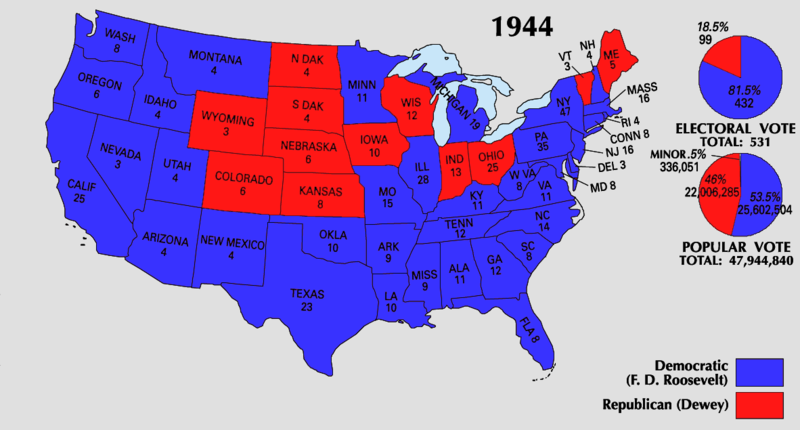
The presidential
election
of November 1944
Department of the
Interior
|
The Battle of the Bulge (December 1944)
In the middle of December 1944, the Germans
totally surprised the Allies with a well-prepared attack on the densely
wooded section of the Ardennes Forest in Belgium, catching the Allies
off guard and thus thrusting deep into Allied lines, thus creating a
deep bulge in the Allied line of advance. The "Battle of the Bulge" was
thus underway. The German goal was to reach the key port of Antwerp,
shut down the Allies' vital operations there, and seize Allied supply
bases (supplies greatly needed by an impoverished German army) along
the way.
Hitler's generals tried to reason with
Hitler concerning all of the dangers involved in such a move. But
Hitler's mental state at this point was such that he thought himself
totally brilliant as a military strategist and ignored the warnings.
In the end, his advisors proved right. It
turned out to be a grand disaster for the Germans. Americans refused to
give up the key crossroads town of Bastogne, and when the clouds lifted
on Christmas Eve, Allied planes were able to conduct ruinous attacks on
the German positions. The Germans were thus forced to retreat back into
Germany, now as broken in the West as they were in the East.
|
|
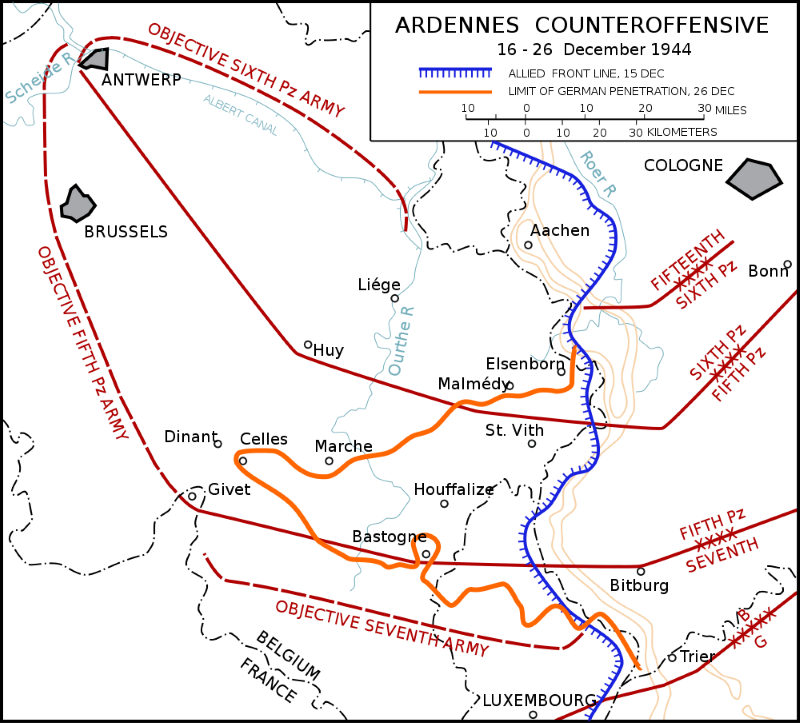
|
The German offensive, 16-26
December 1944
The U.S. Army in World
War II – The Ardennes: The Battle of the Bulge.
American soldiers were caught
completely by surprise
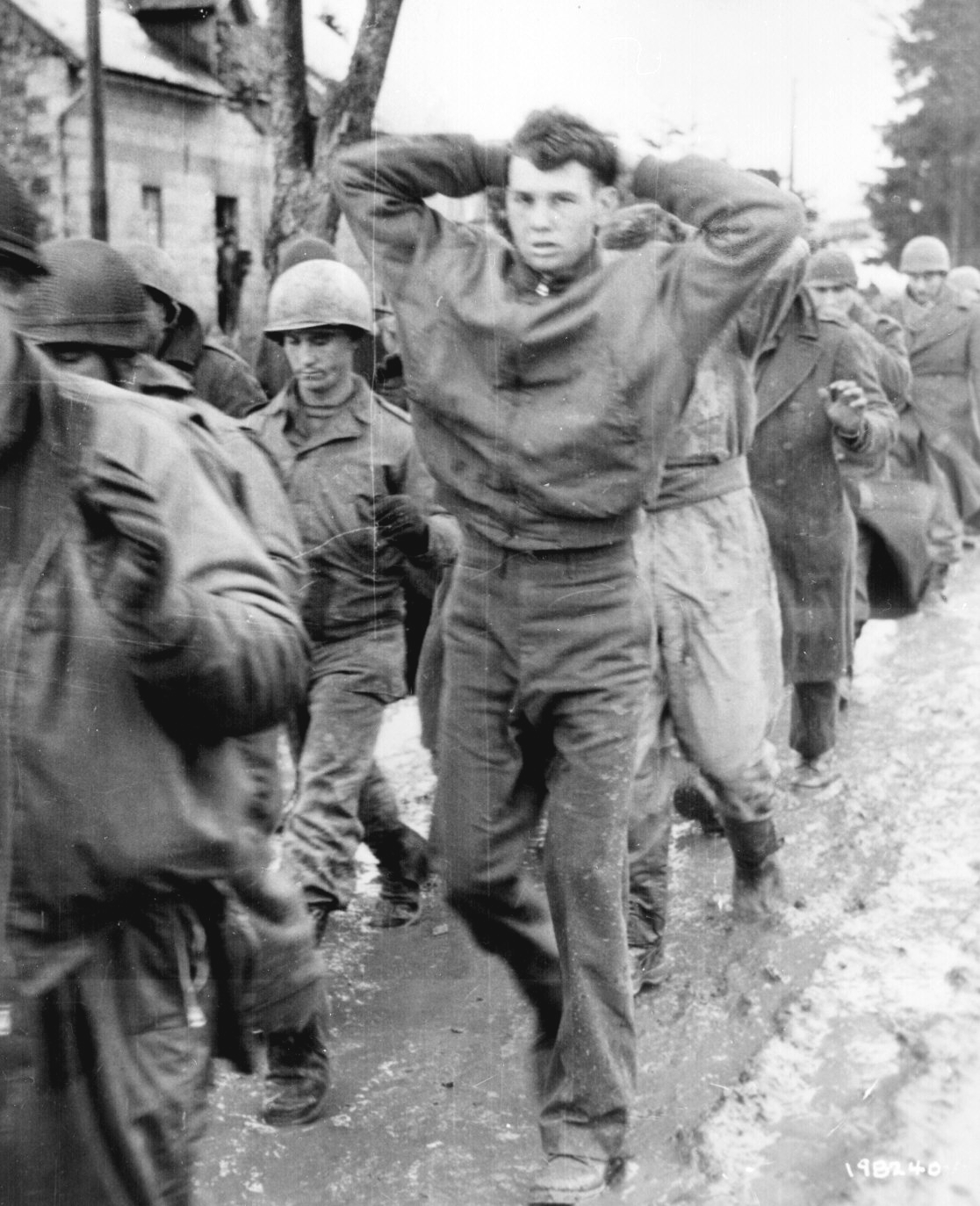
"A lanky GI, with hands clasped behind
his head, leads a file of American prisoners
marching
along a road somewhere on the western
front. Germans captured these
American soldiers
during the surprise enemy drive into
Allied positions."
Captured German photograph, December 1944.
National Archives
111-SC-198240
Some of the Germans were
now playing by new rules of war
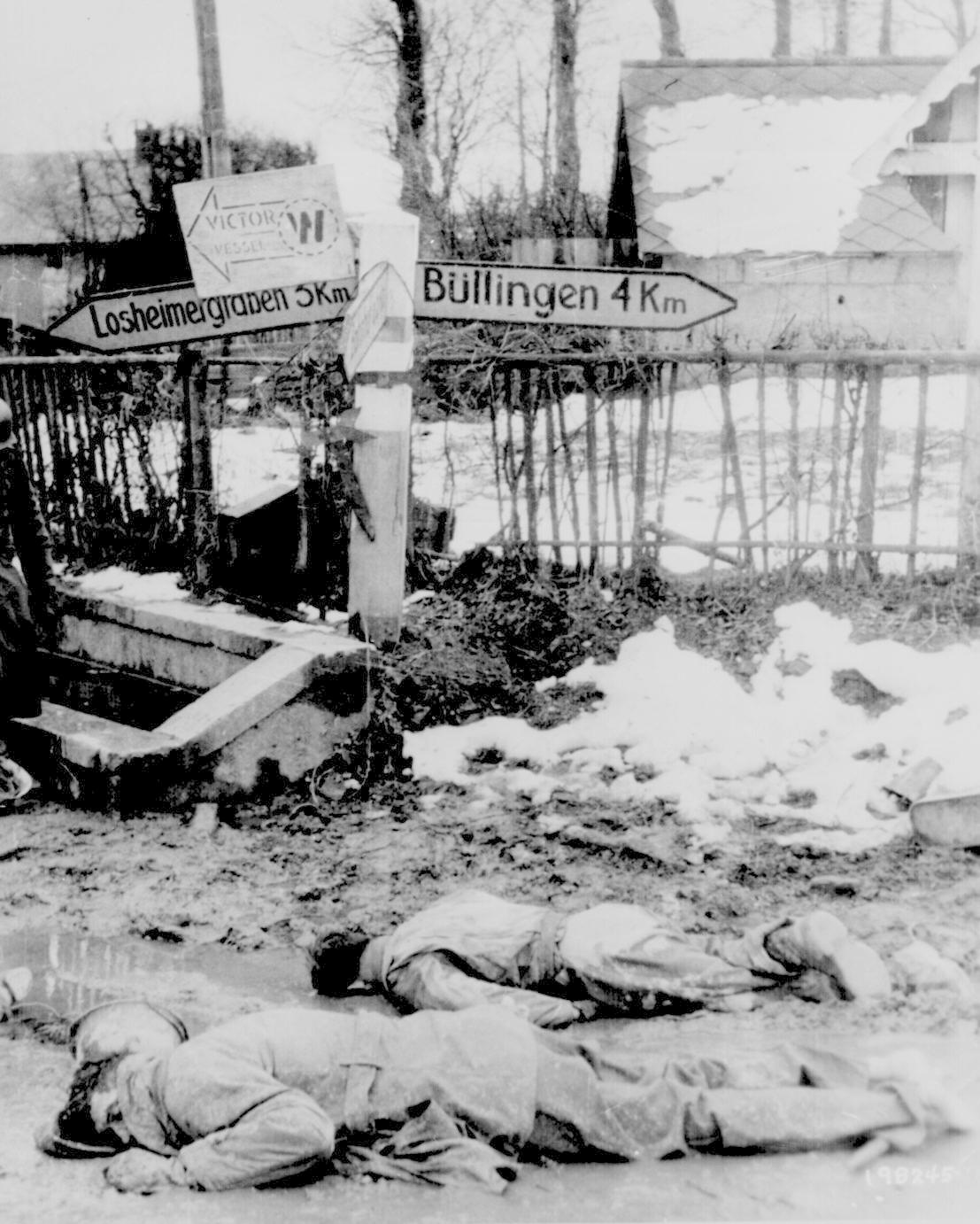
"American soldiers, stripped of all
equipment, lie dead, face down in the slush of a crossroads
somewhere on the western front." Captured
German photograph. Belgium, ca. December 1944.
National Archives
111-SC-198245
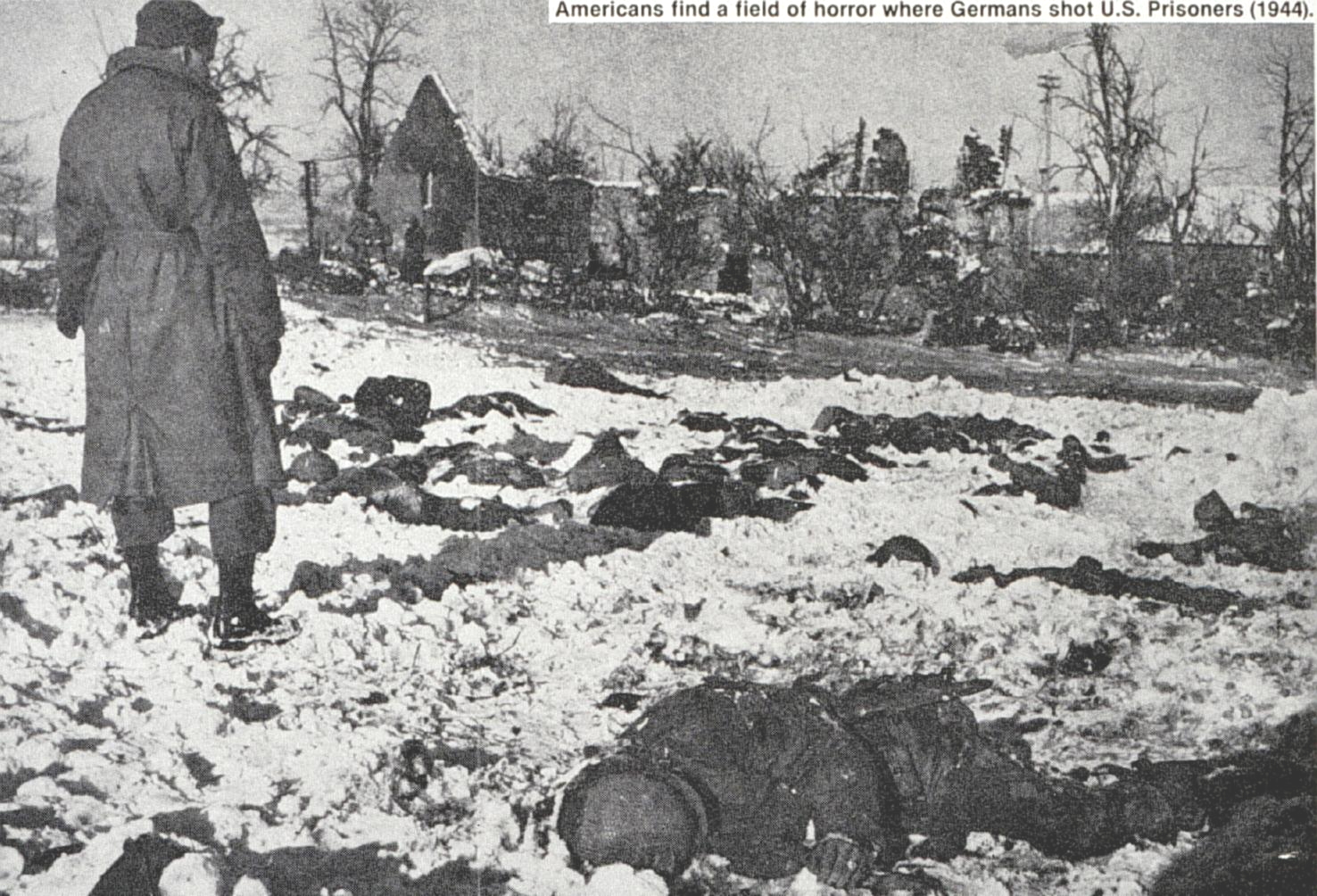
Malmedy
massacre – 84 American
soldiers were killed after their capture by SS troops.
NOAA's Historic Coast &
Geodetic Survey (C&GS) Collection
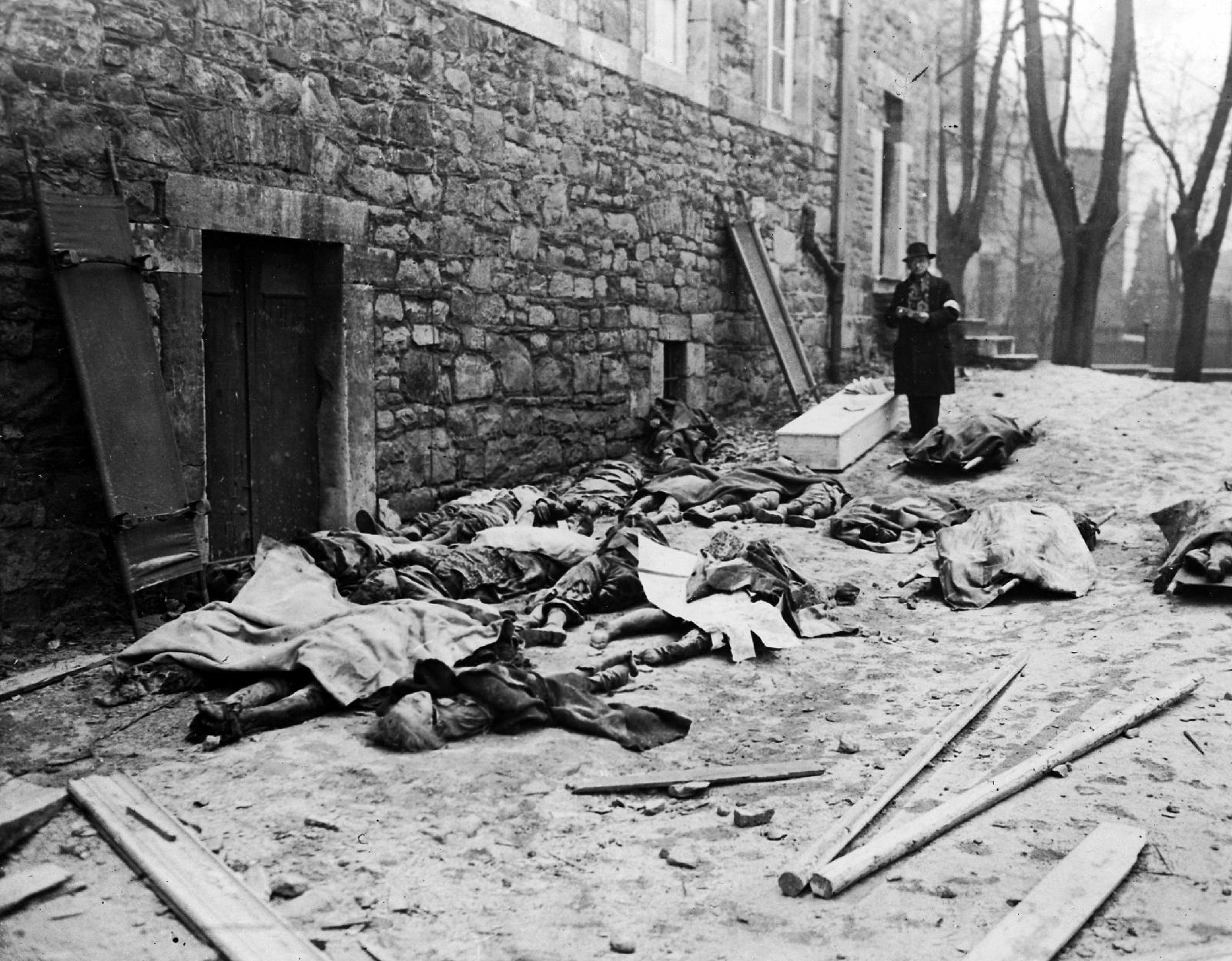
The bodies of
Belgian men,
women, and children, killed by the German military during
their counter-offensive
into Luxembourg and Belgium, await identification before burial.
National
Archives
But the American line holds
- notably at the town of Bastogne
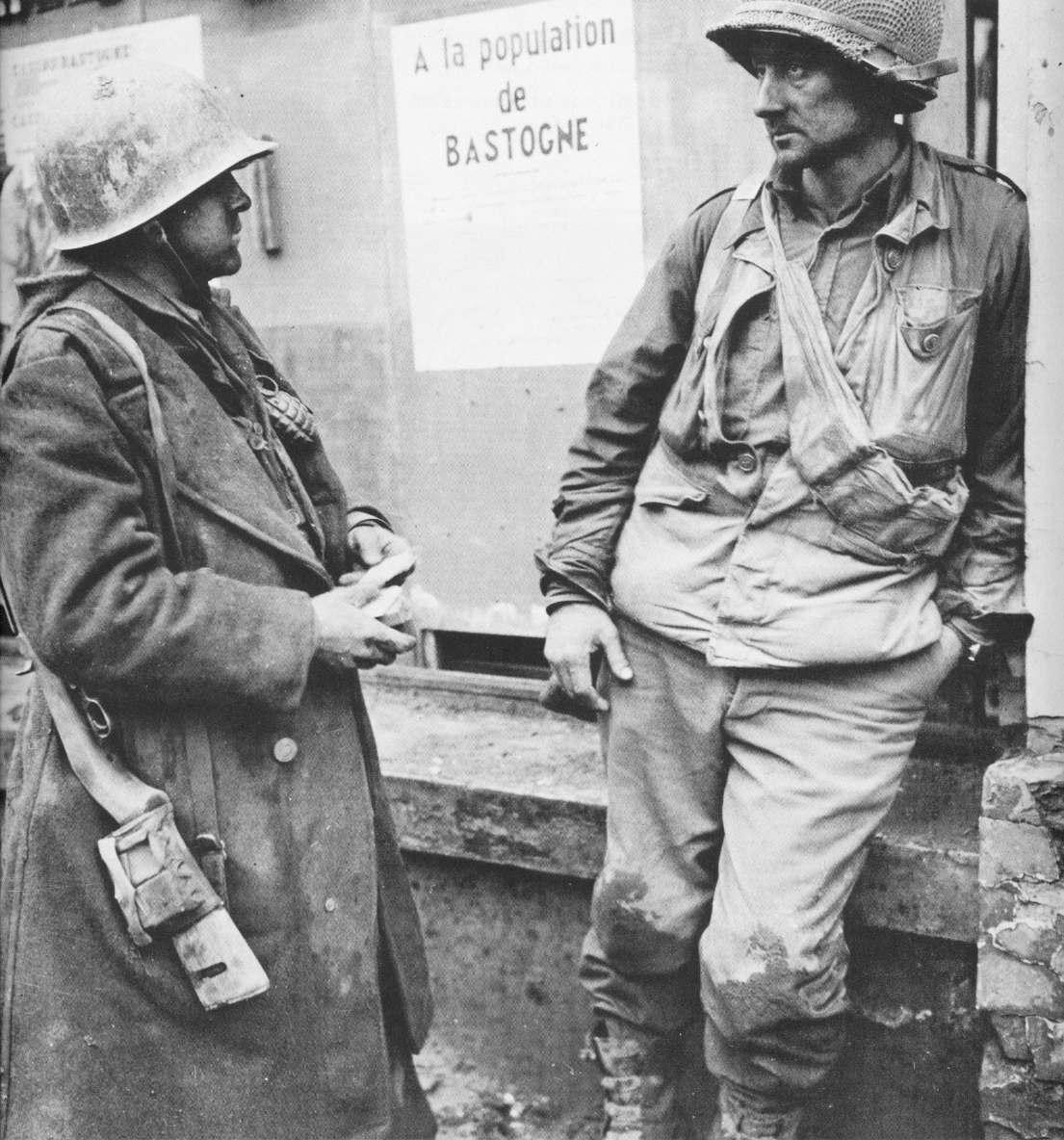
Wearied GIs
trapped inside
the Belgian town of Bastogne during the Battle of the Bulge
United States
Army
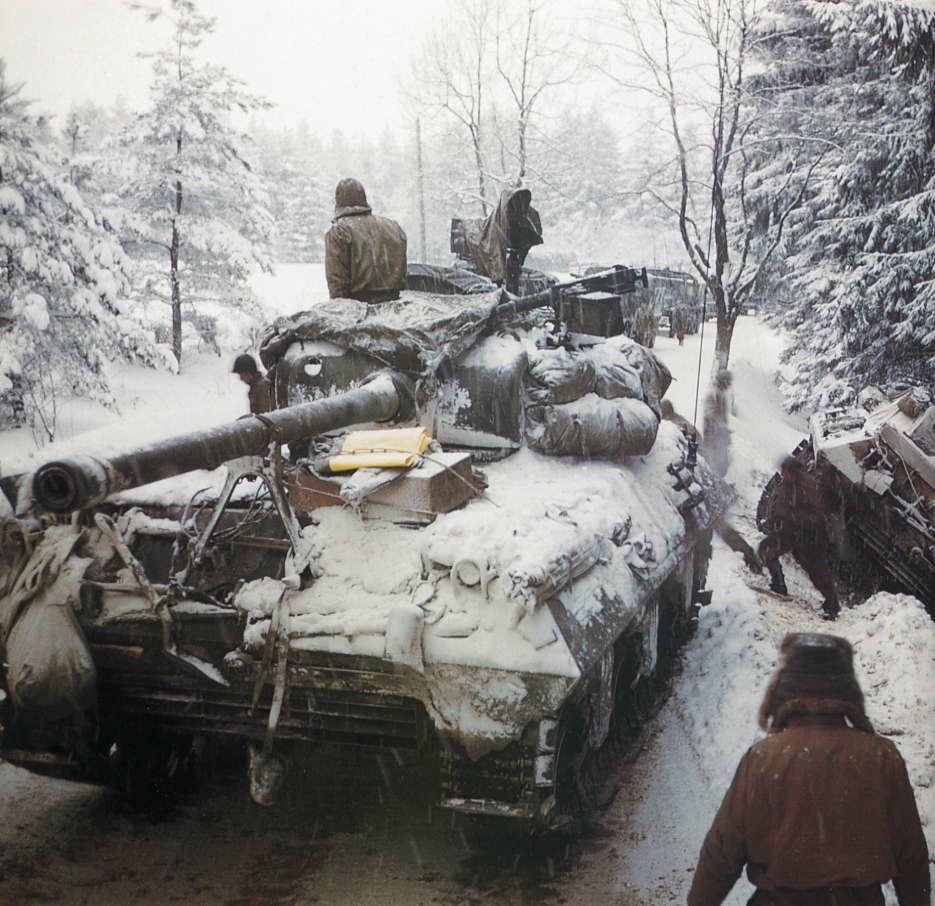
U.S.
tanks moving cautiously
through the Ardennes – December 1944
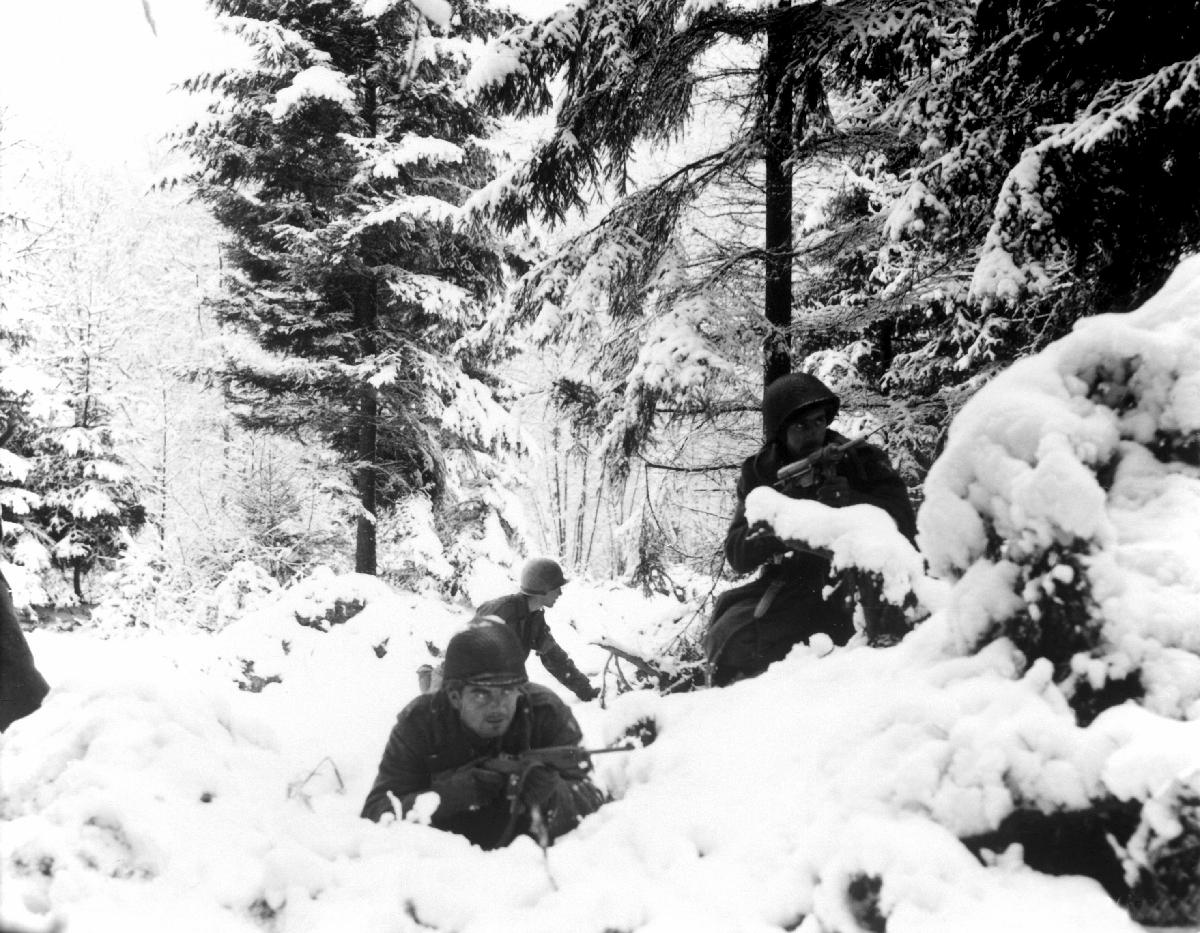
American
soldiers taking
up defensive positions in the Ardennes during the Battle of the
Bulge
National Archives
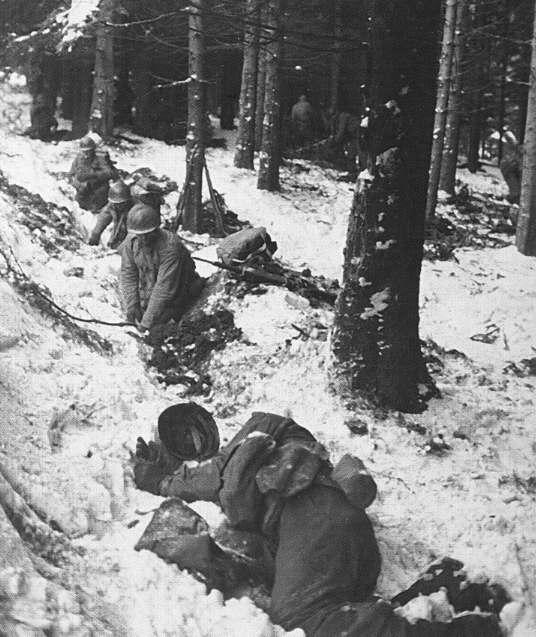
U.S.
troops pinned
down in the Ardennes by German troops - December
1944
U.S. Army
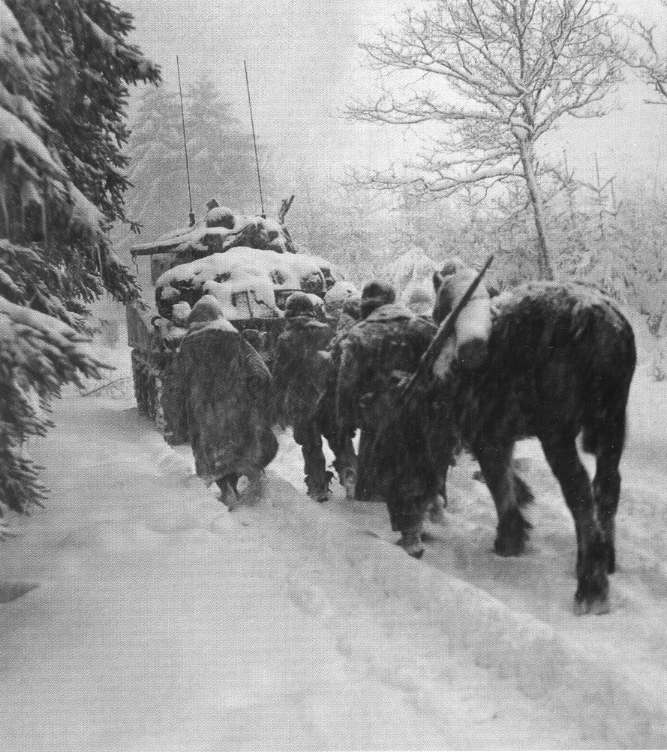
U.S. 82nd
Airborne
helping to relieve US troops caught in the Battle of the Bulge – December
1944
U.S.
Army
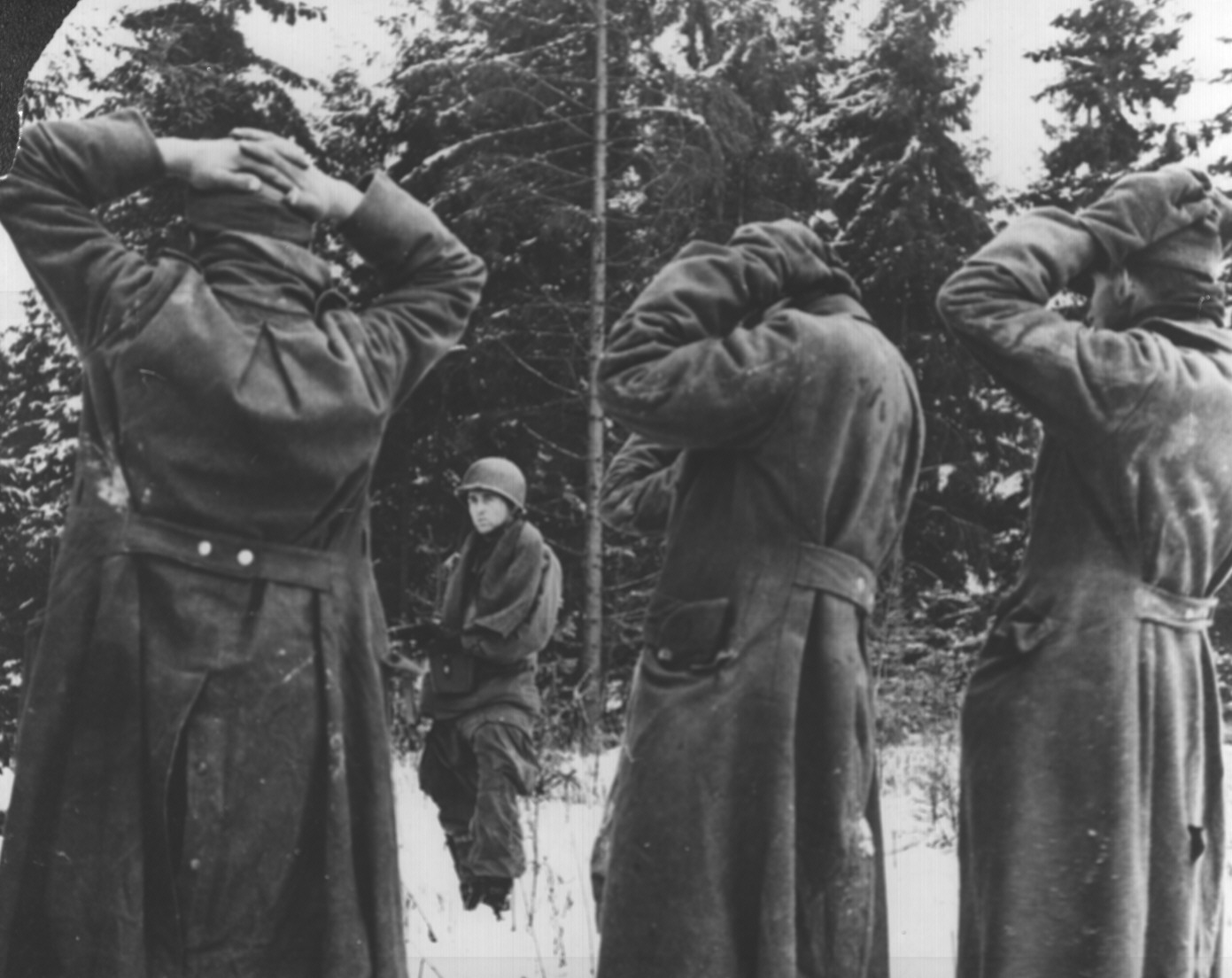
"We were getting our second wind now
and started flattening out that bulge. We took
50,000 prisoners in December
alone." American soldier with captured Germans. ca. 1944.
National Archives
208-YE-105
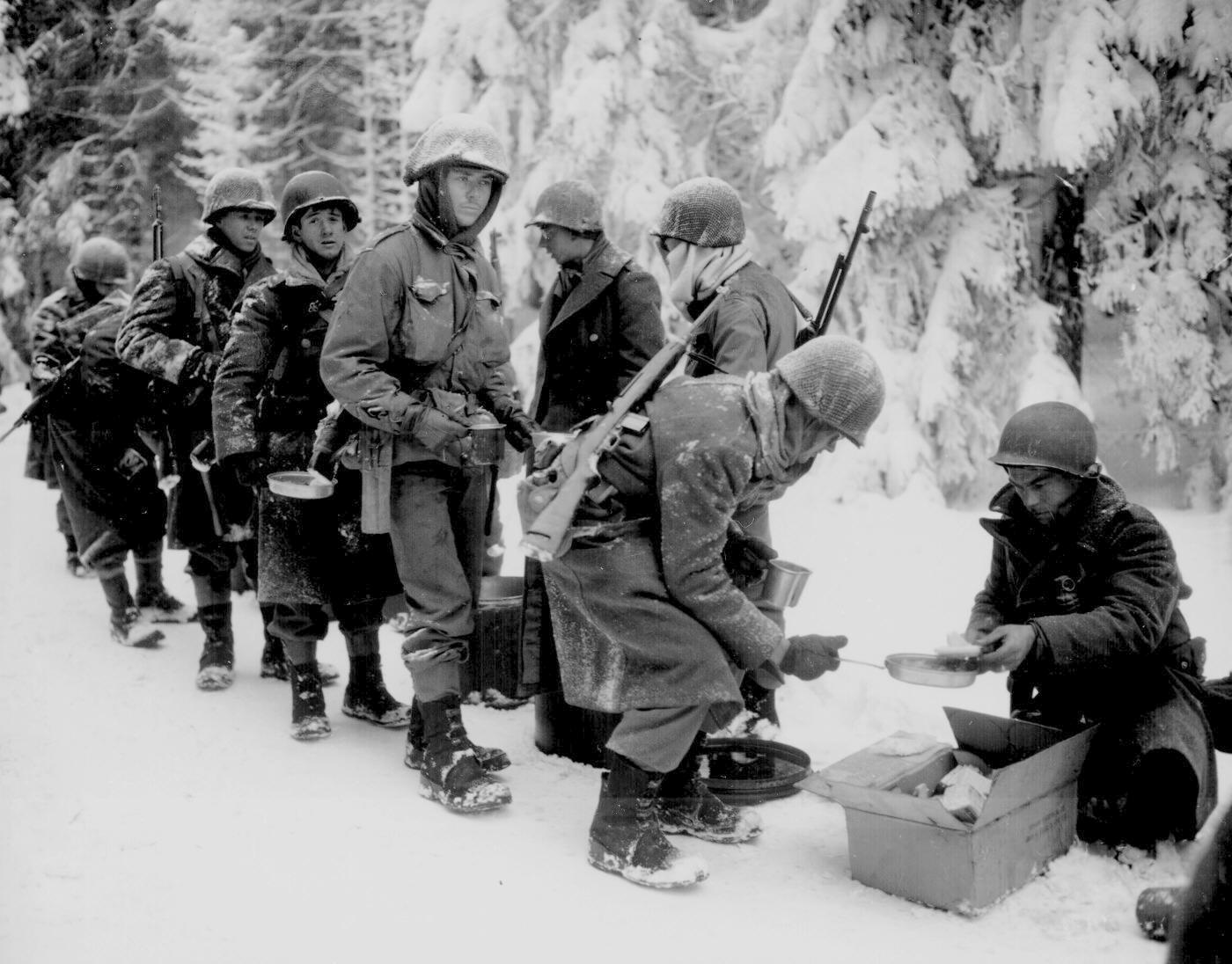
"Chow is
served to American Infantrymen
on their way to La Roche, Belgium.
347th Infantry Regiment." Newhouse,
January 13, 1945.
National Archives
111-SC-

 Opening up the Western Front against Hitler
Opening up the Western Front against Hitler Stopping the Germans on the Eastern Front
Stopping the Germans on the Eastern Front The slow Allied advance in Italy
The slow Allied advance in Italy The liberation of
France
The liberation of
France The Soviet summer offensive ... and the destruction of Warsaw
The Soviet summer offensive ... and the destruction of Warsaw The Germans hold the line in the
Netherlands ... and attack in Belgium
The Germans hold the line in the
Netherlands ... and attack in Belgium The Western Allies push into a fast-collapsing Germany
The Western Allies push into a fast-collapsing Germany









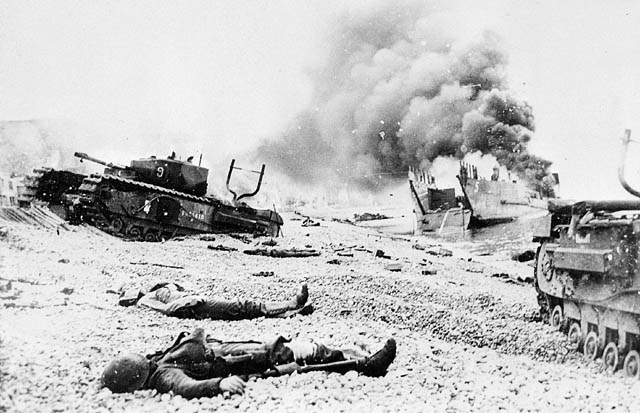
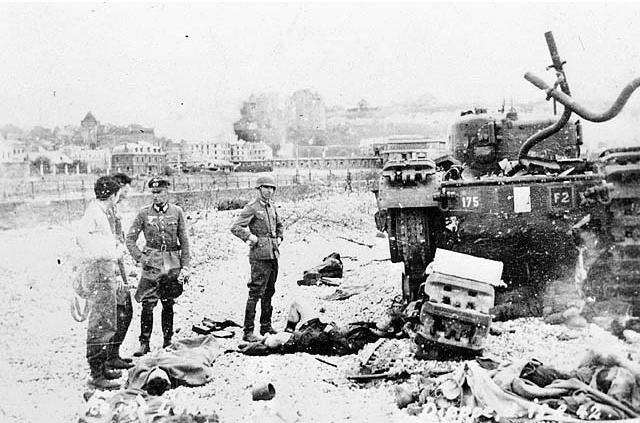
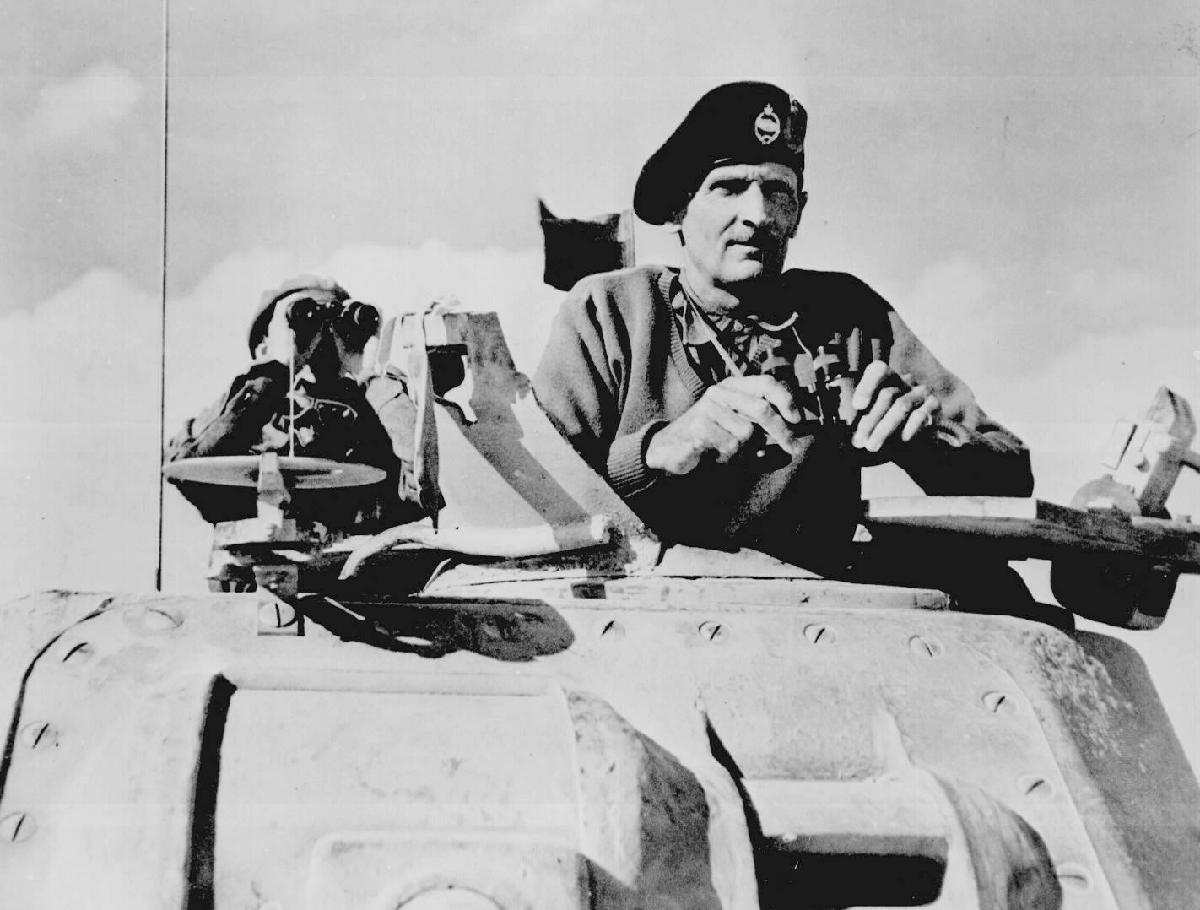
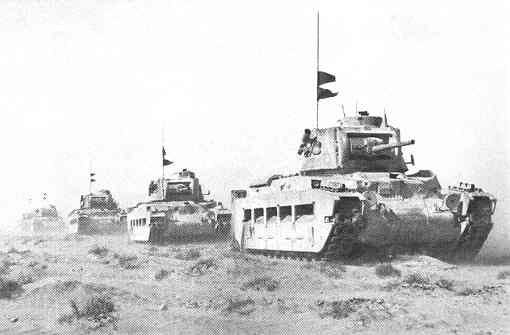
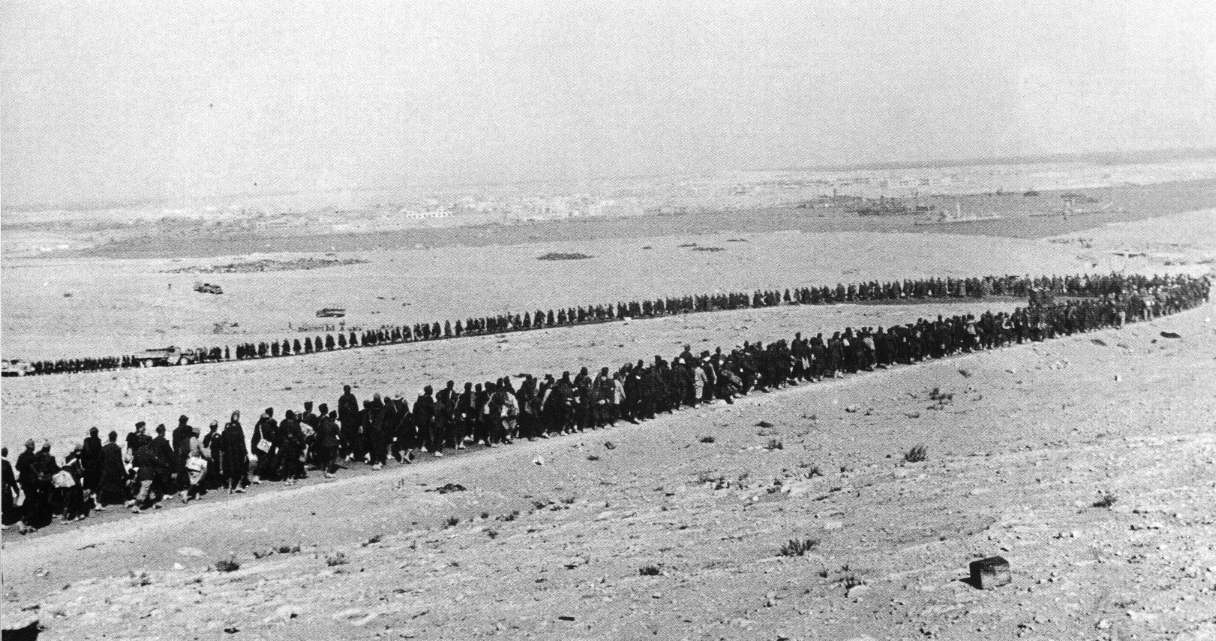
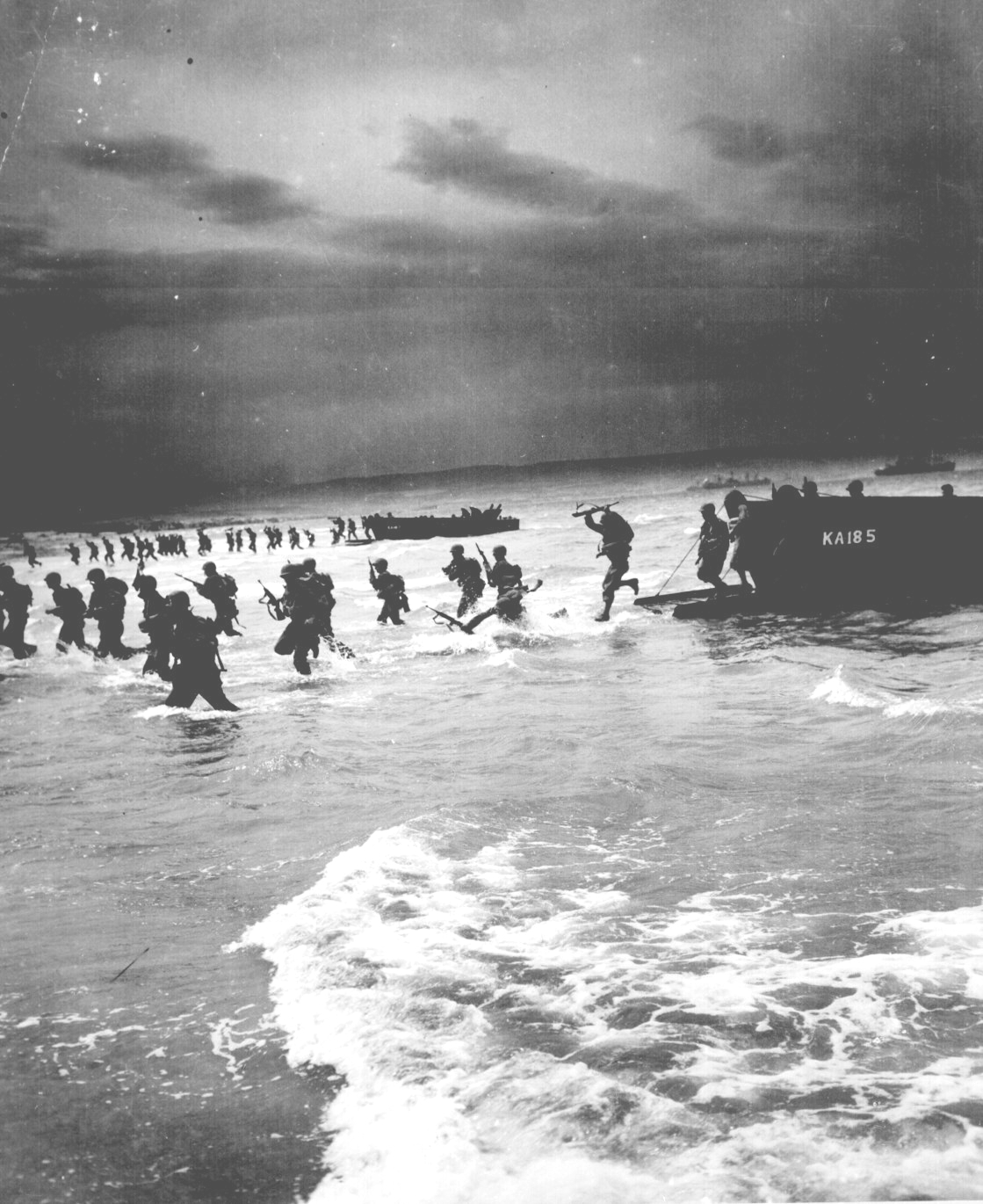
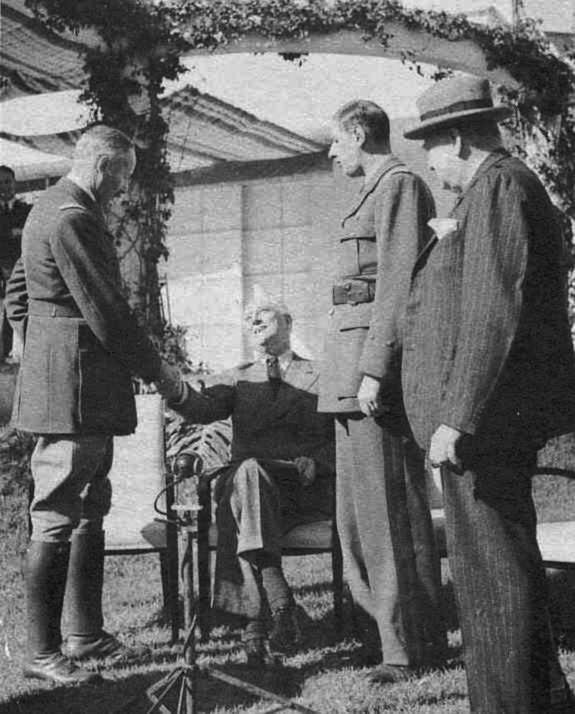
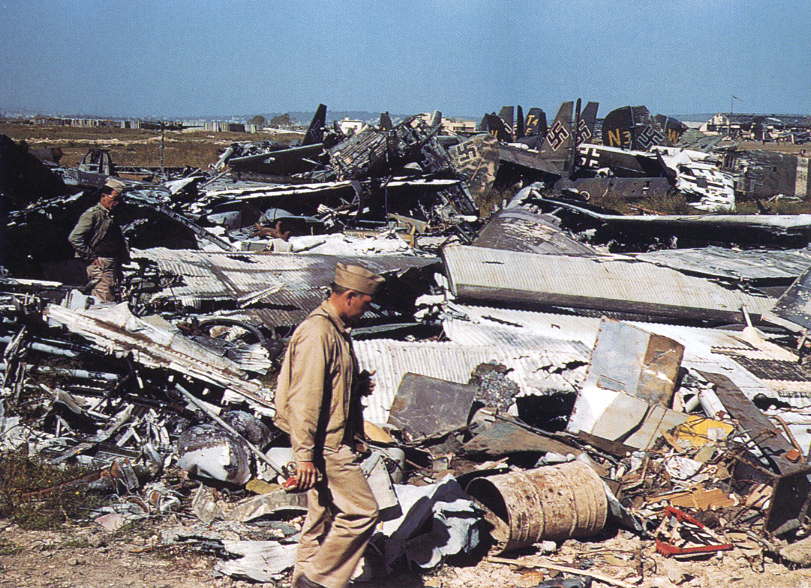
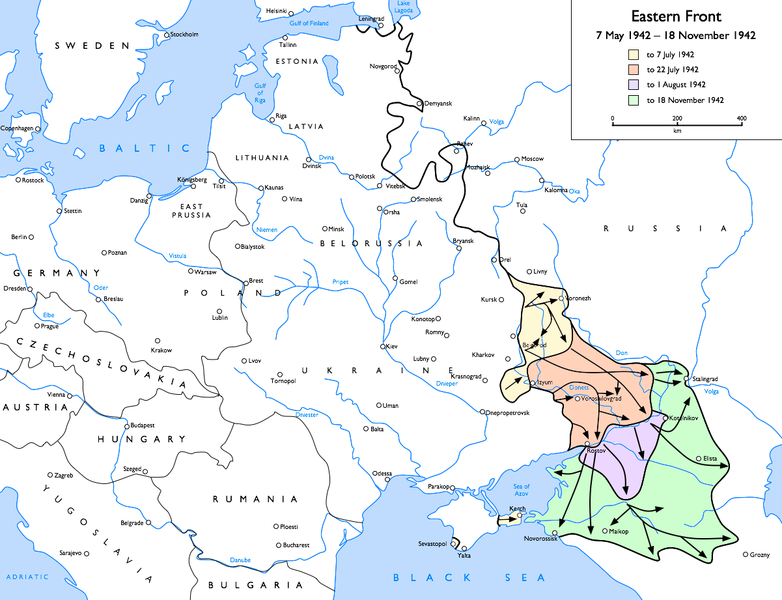
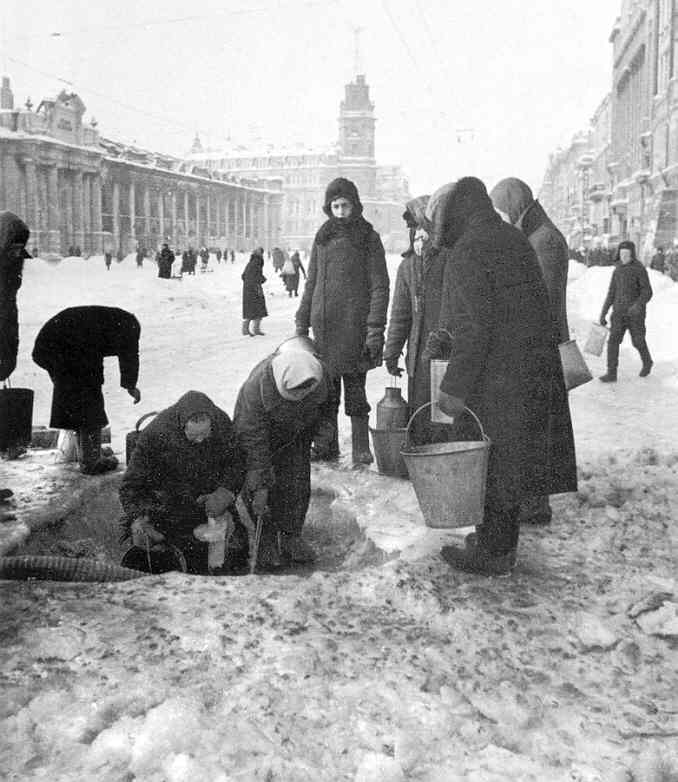
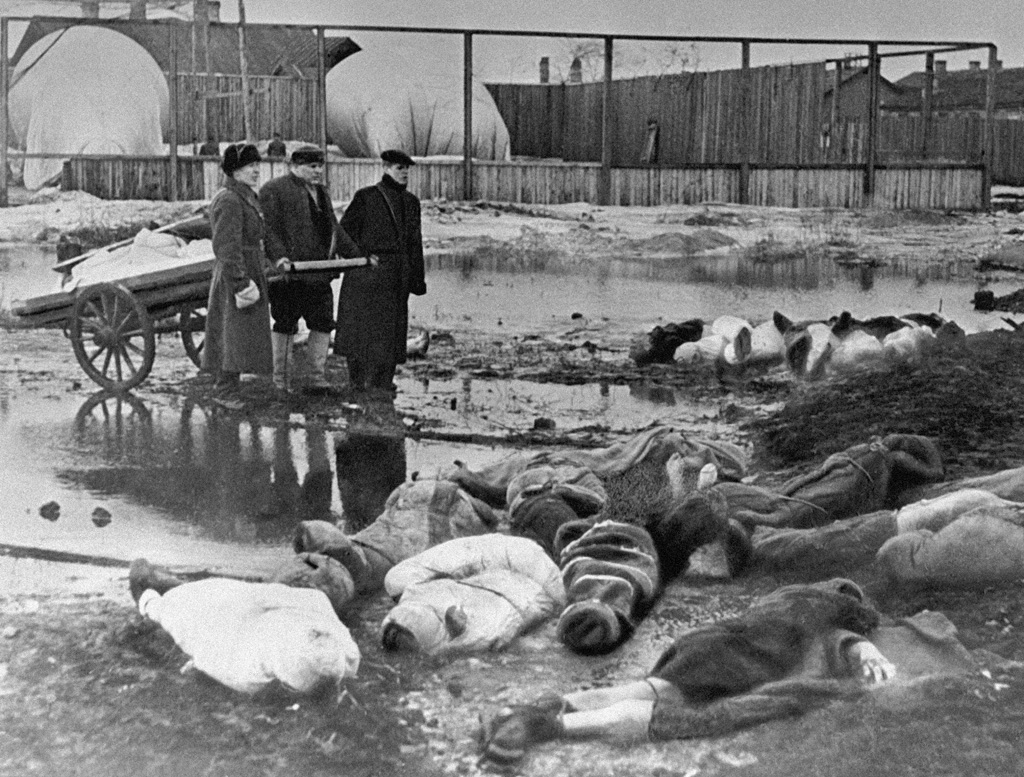
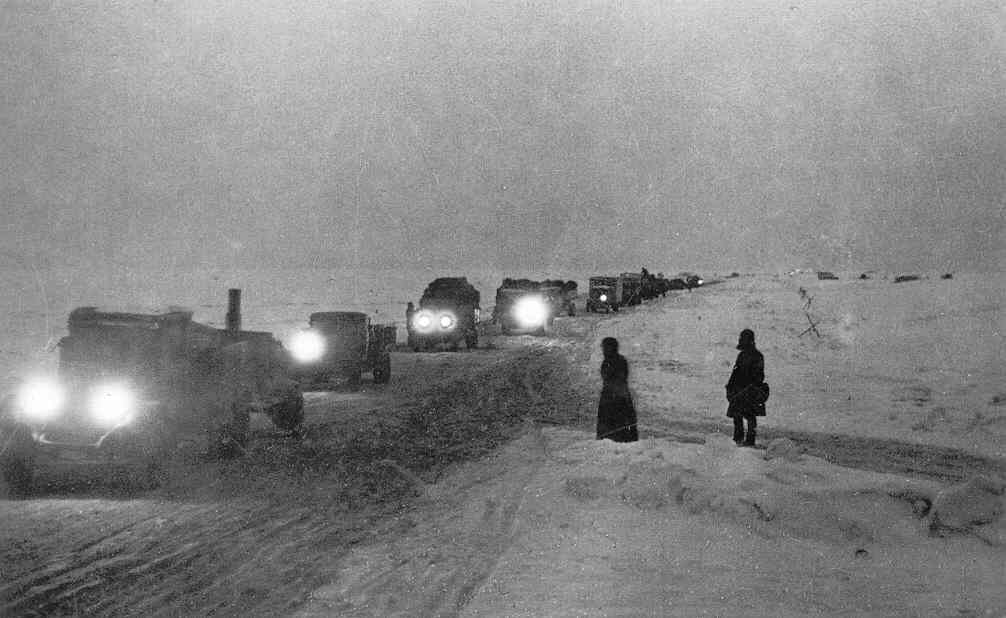

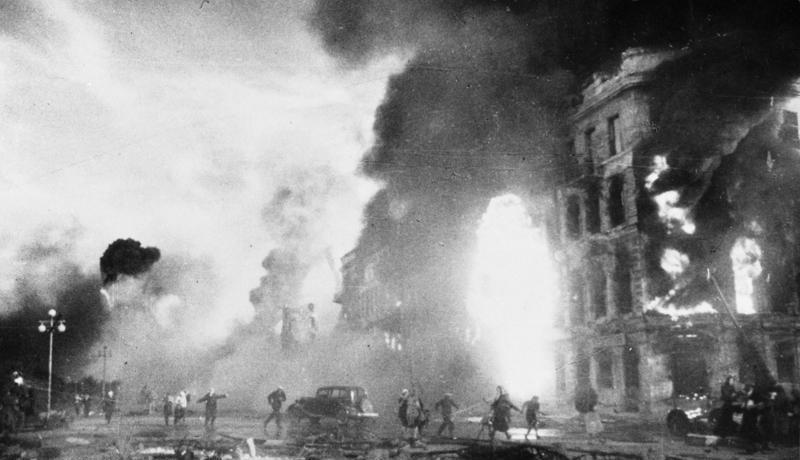
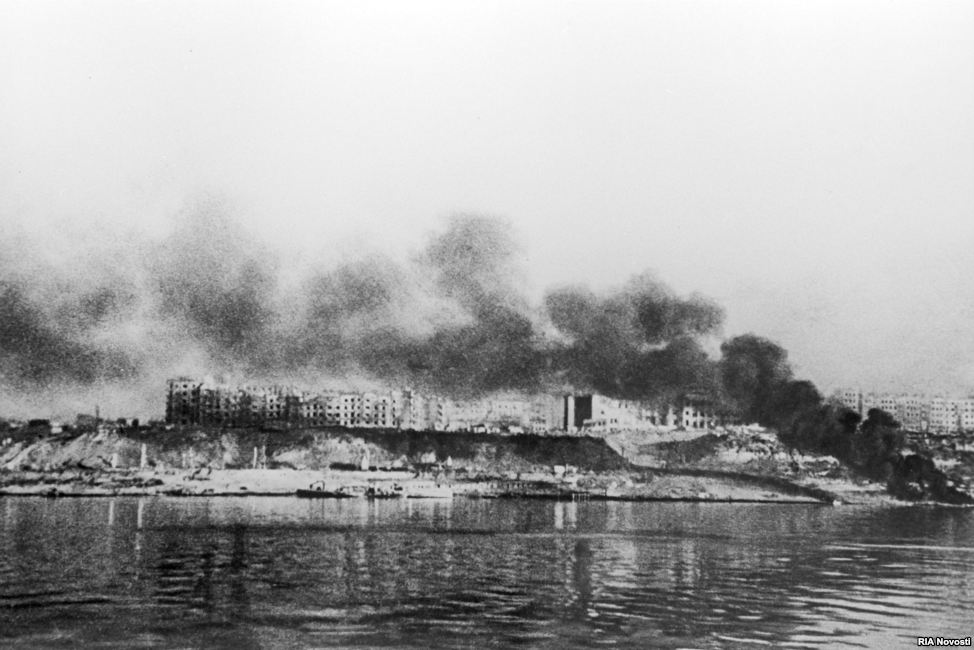
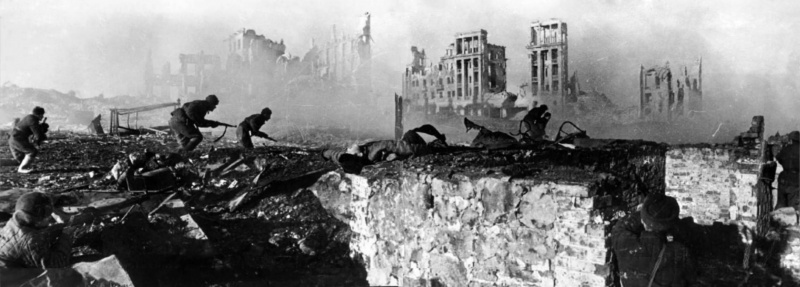
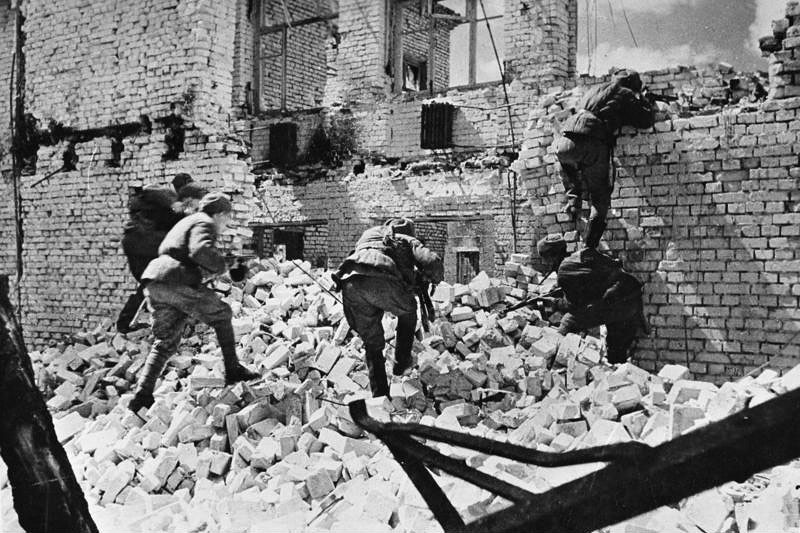
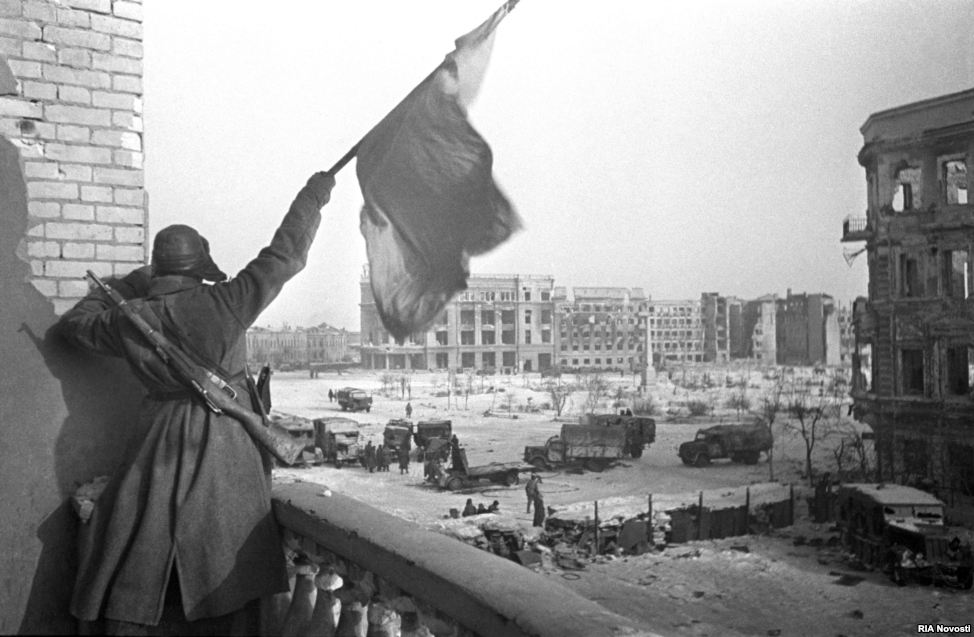
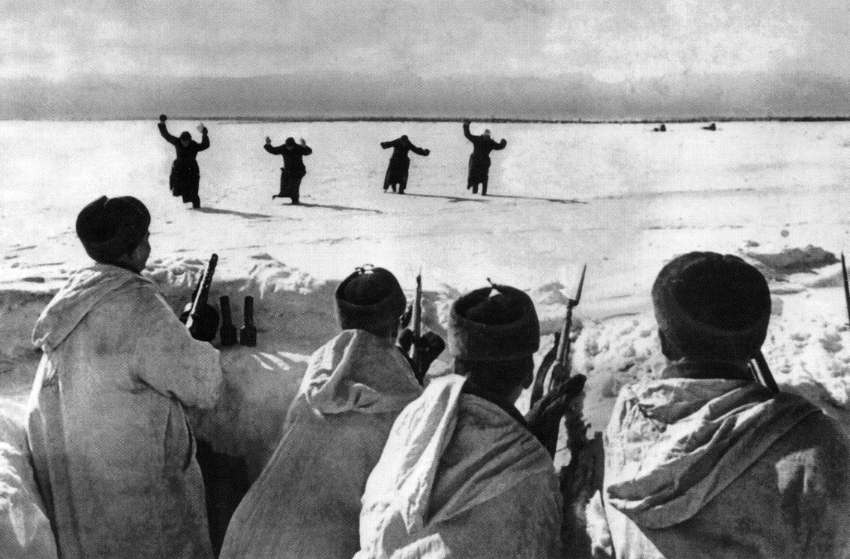
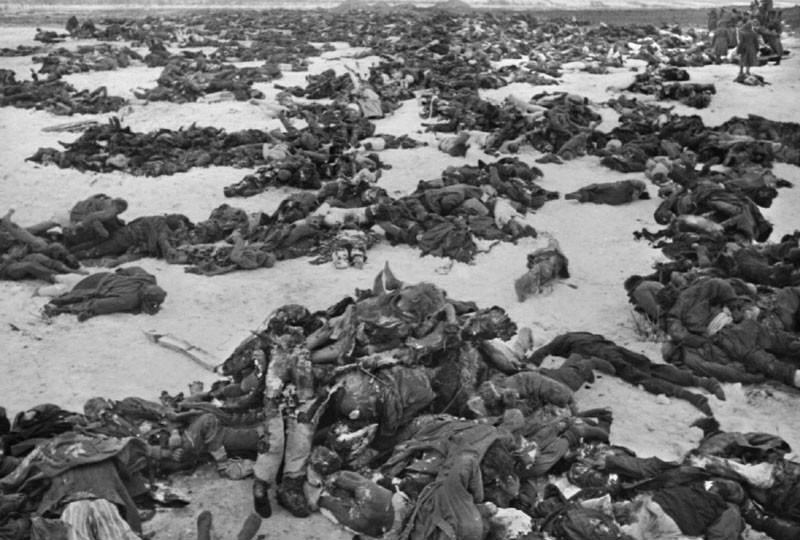
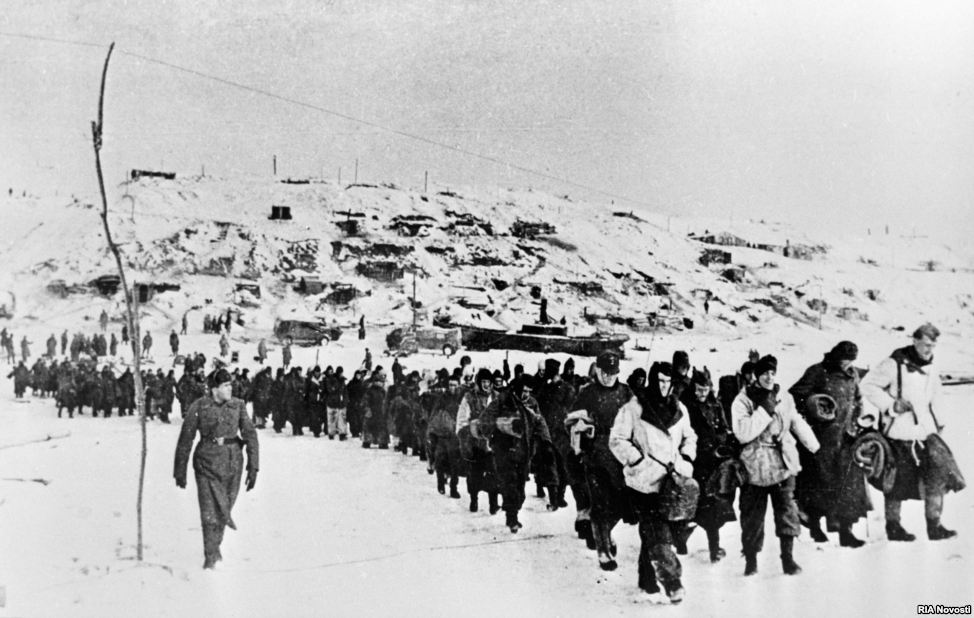
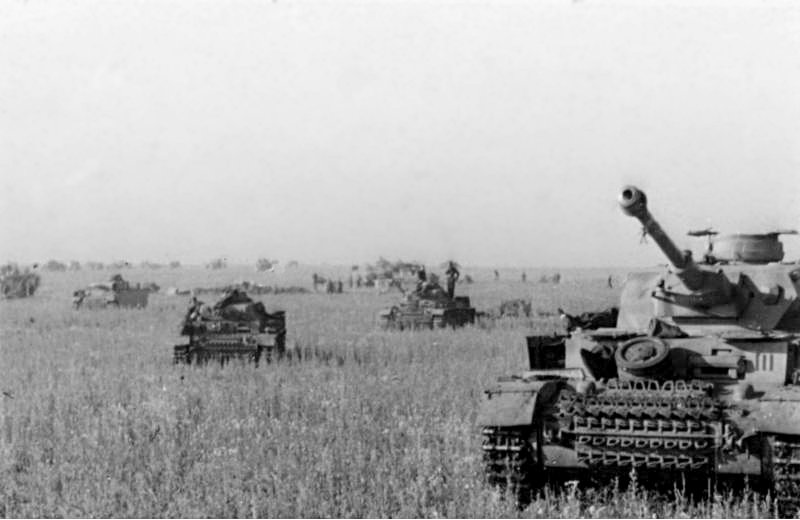
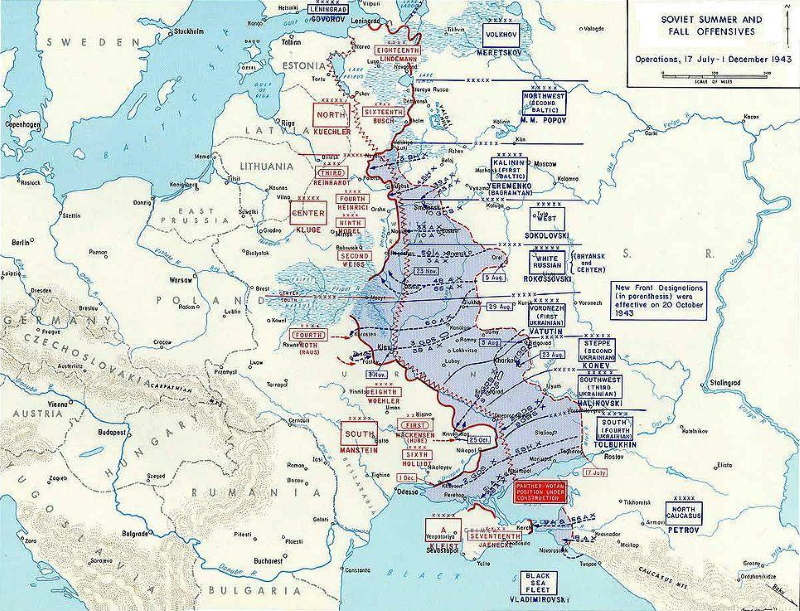
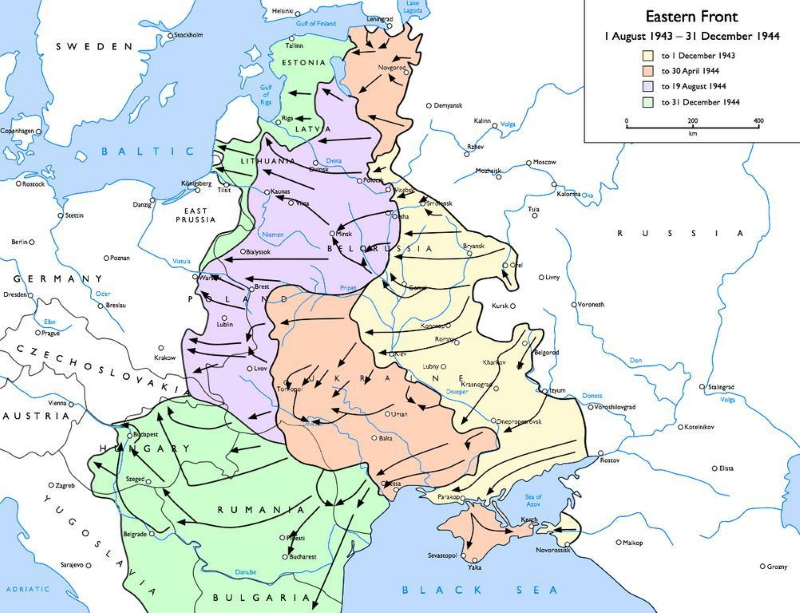
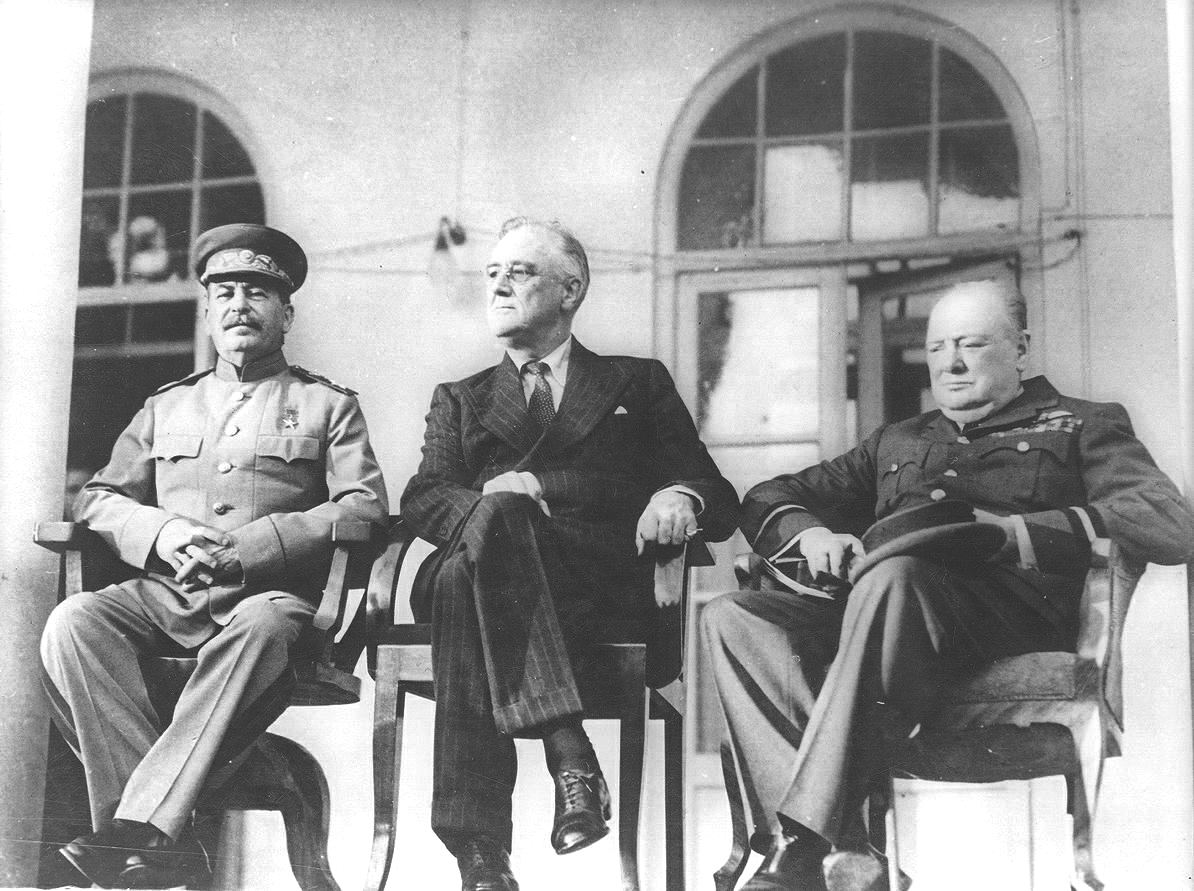
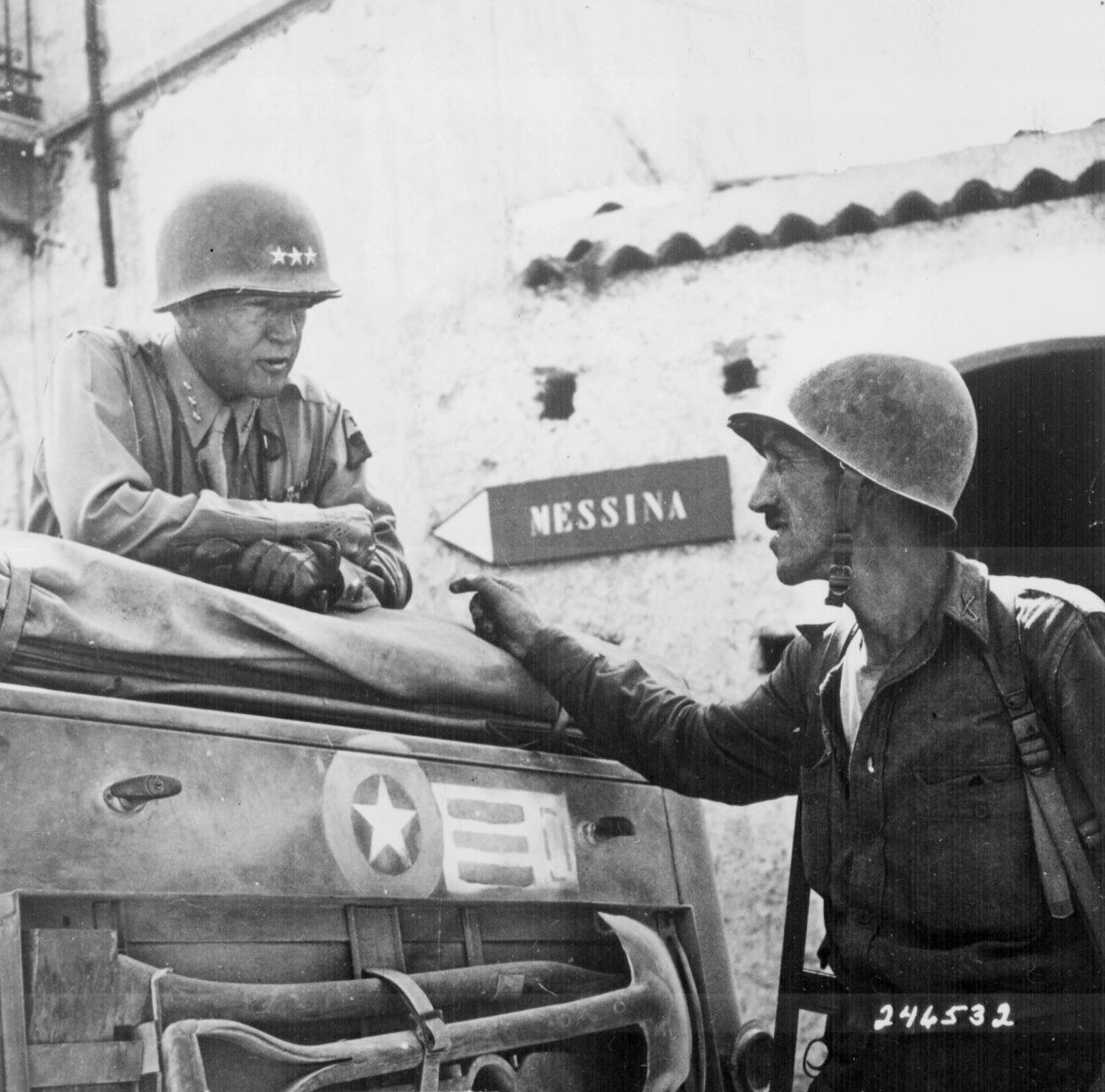
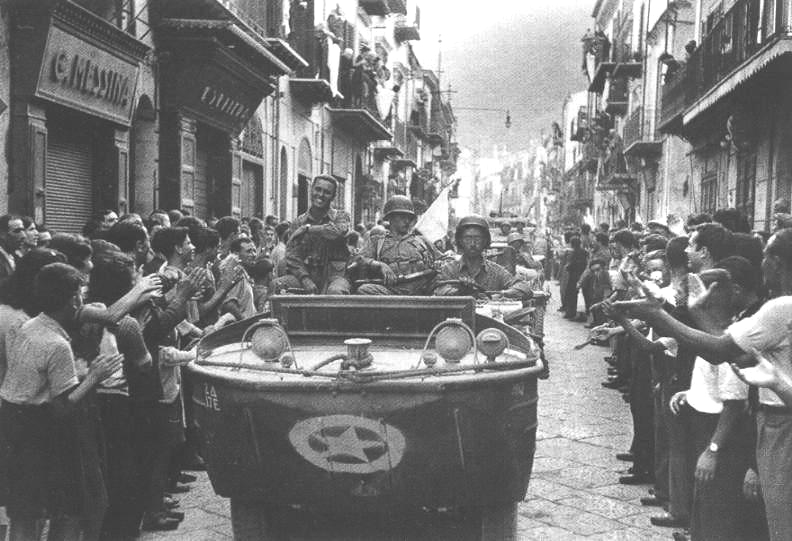
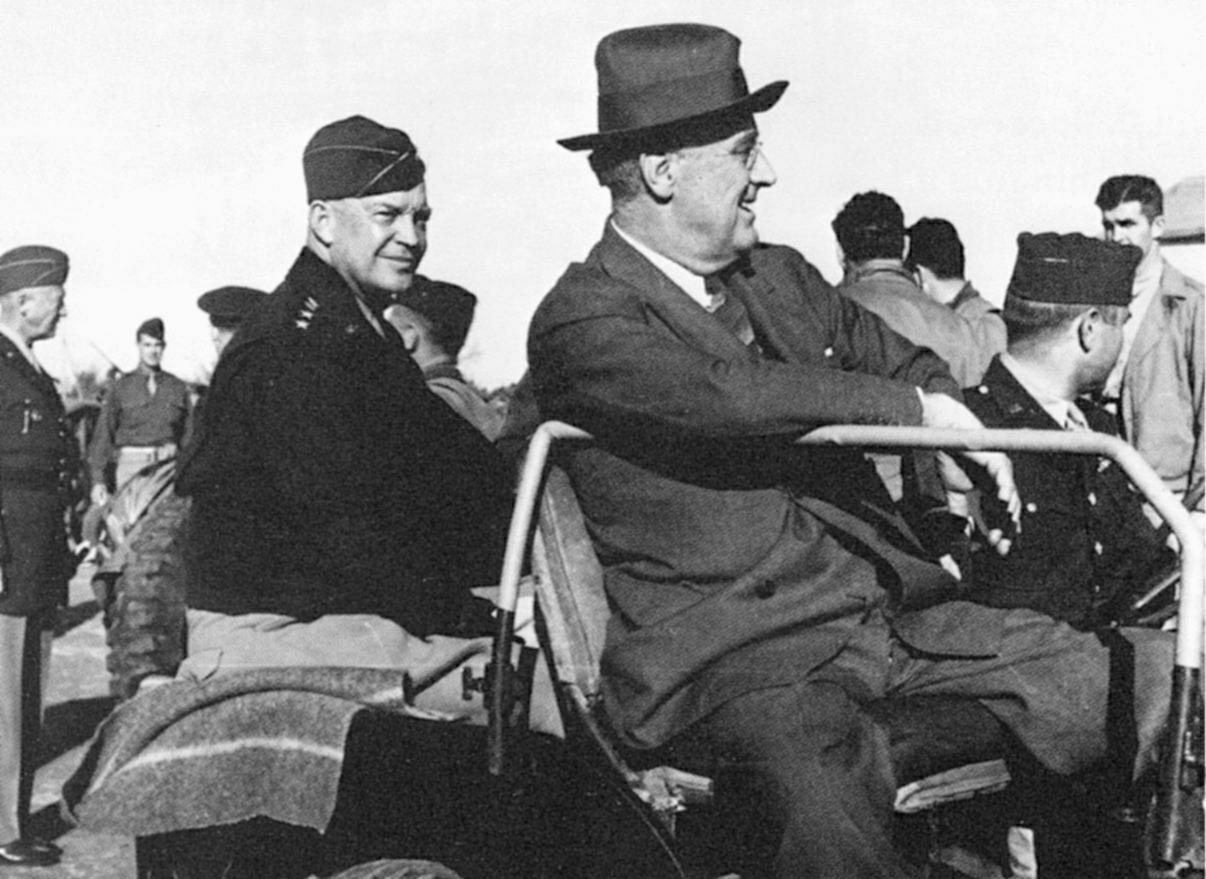
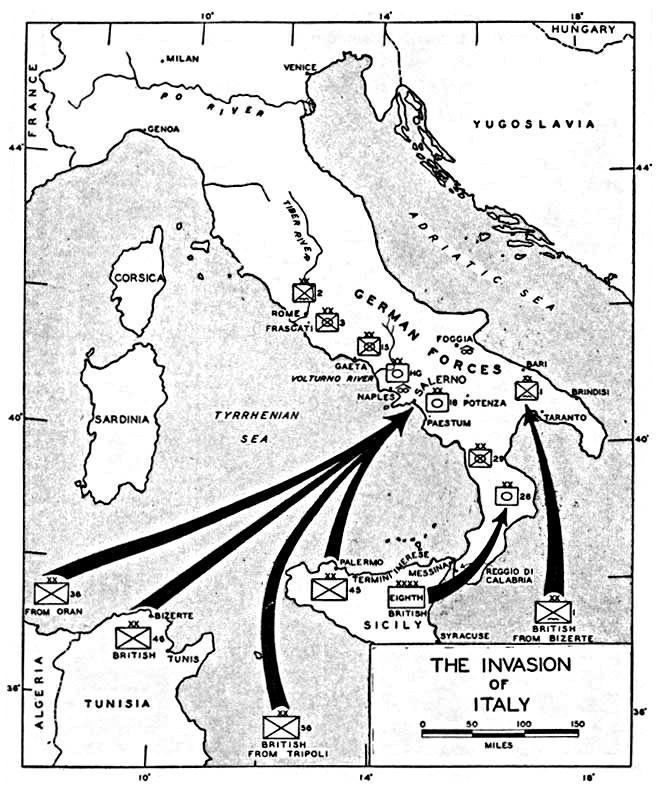
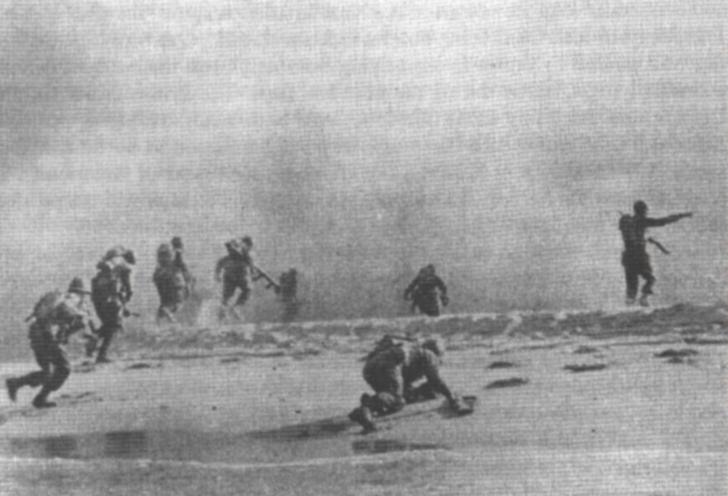
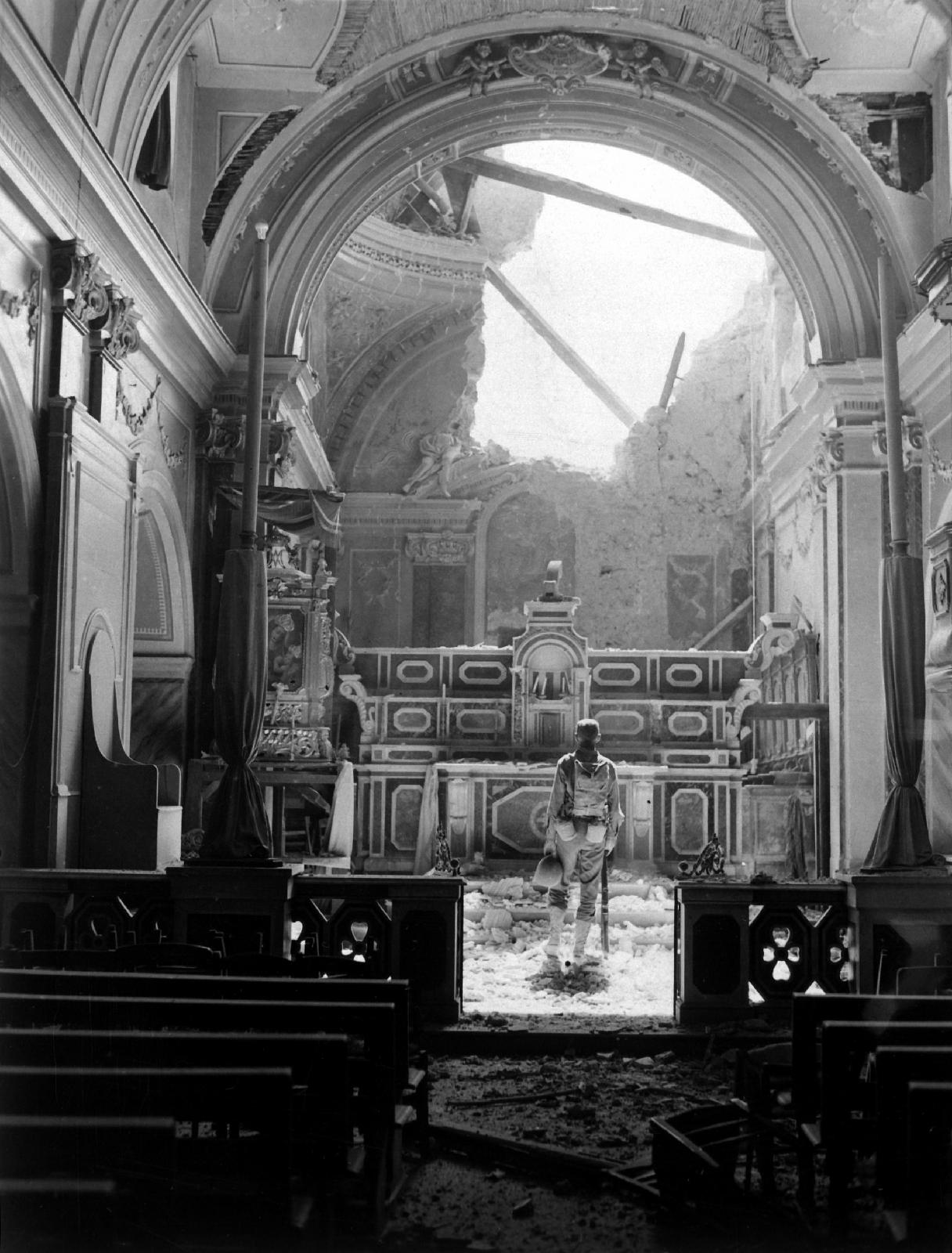
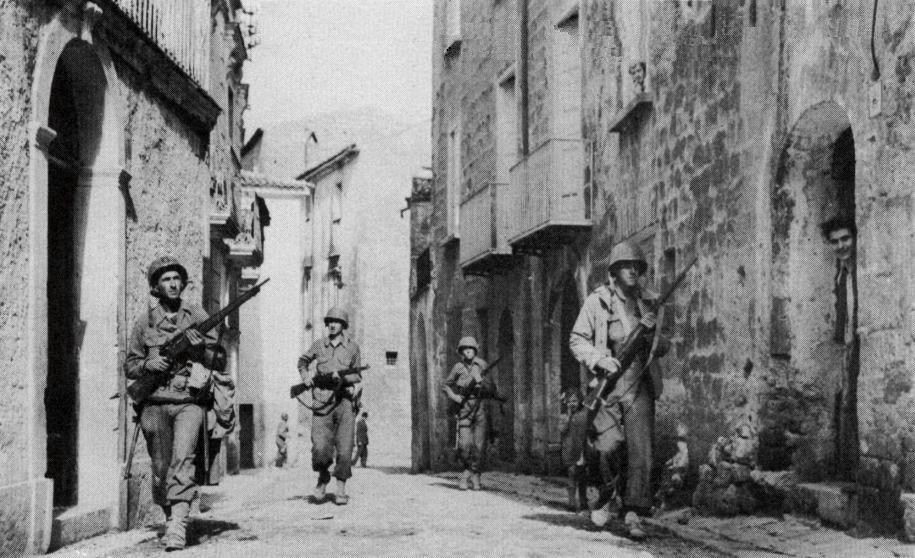
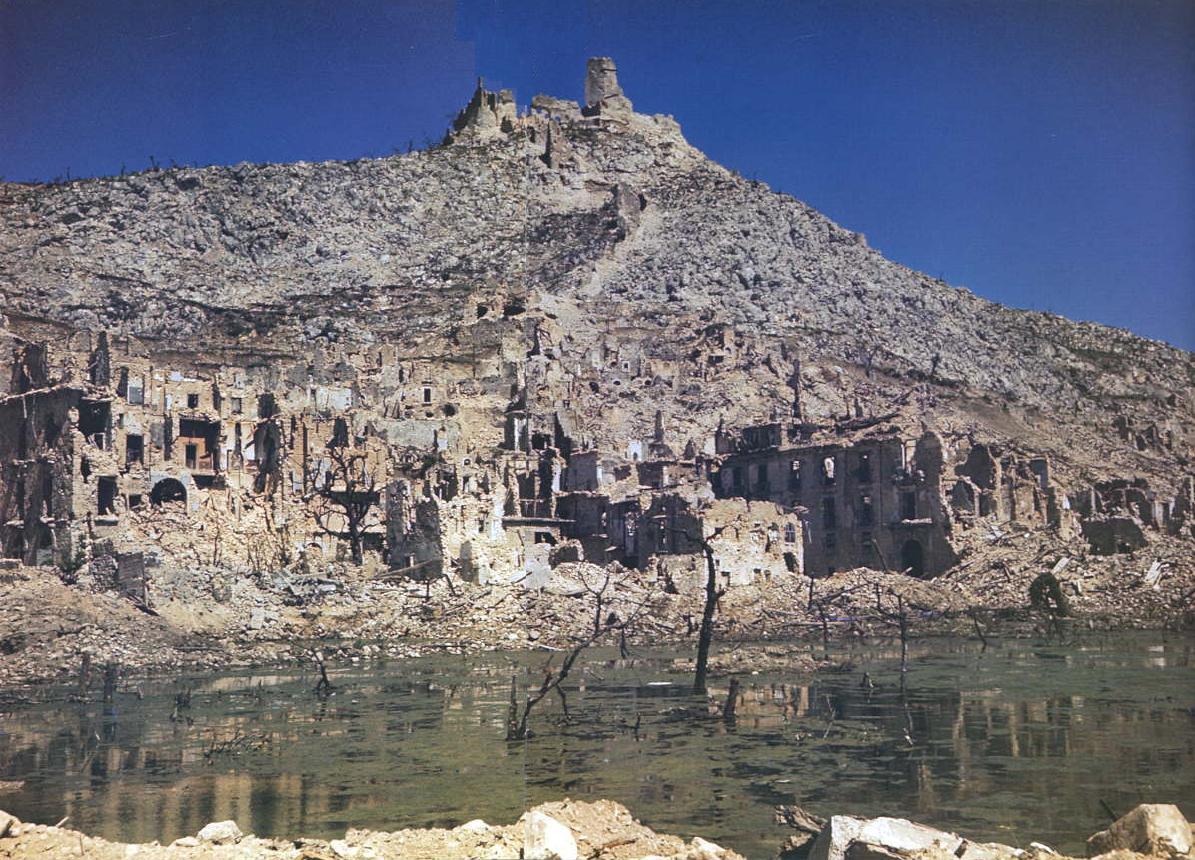
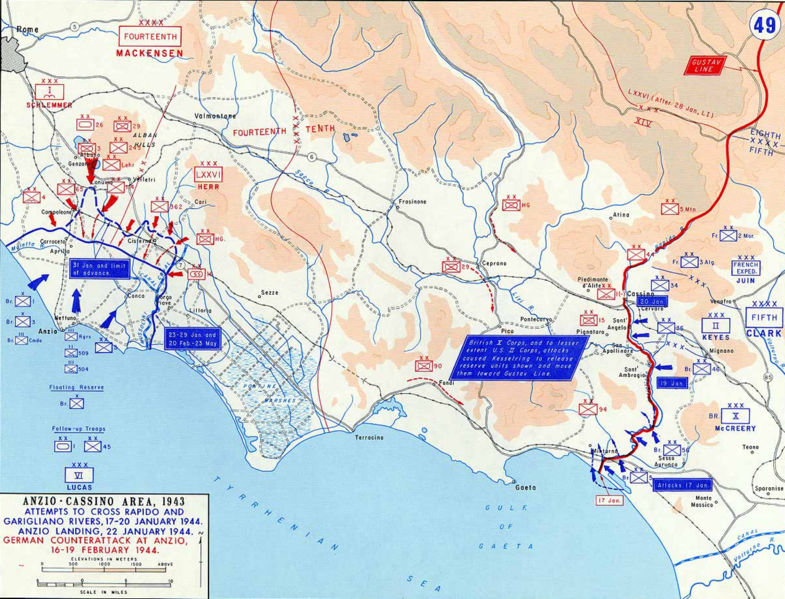
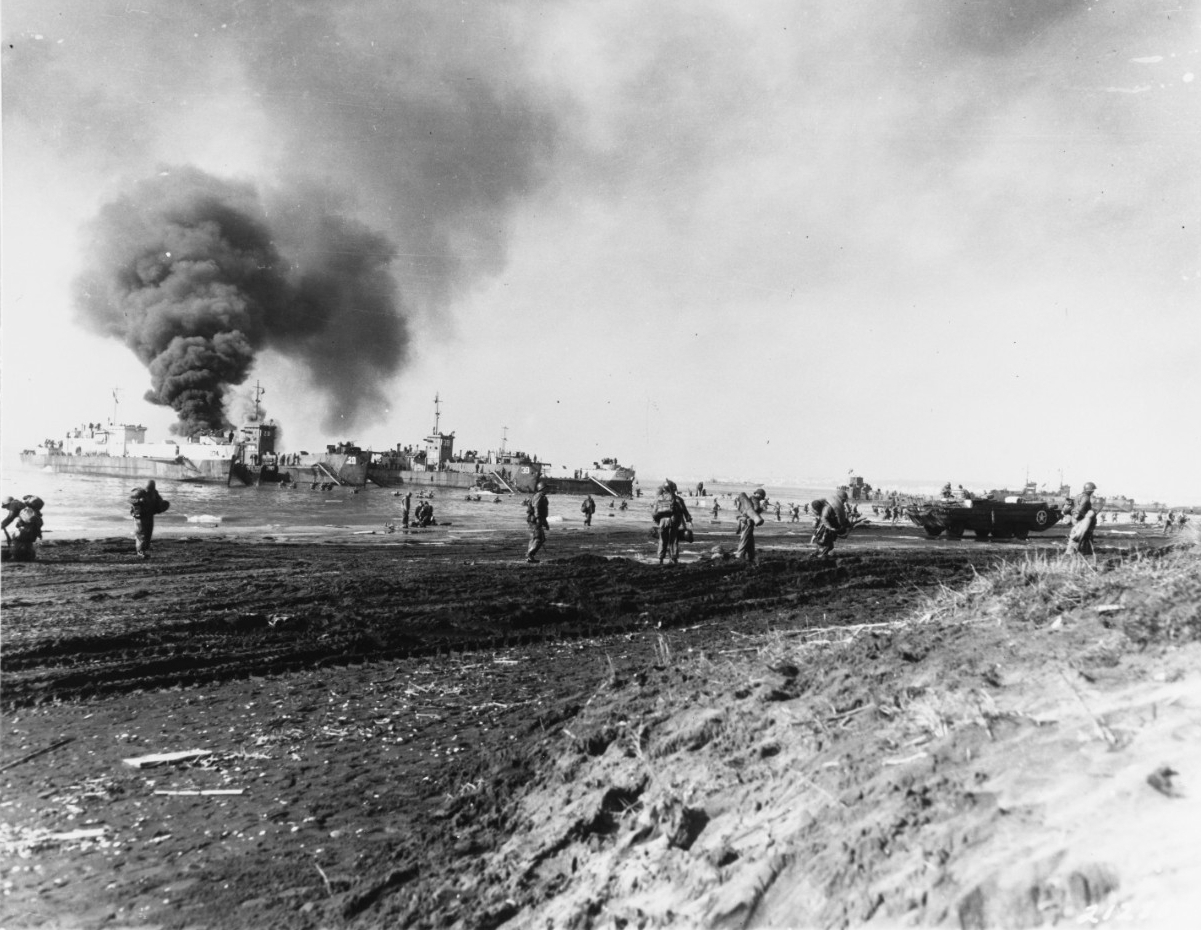
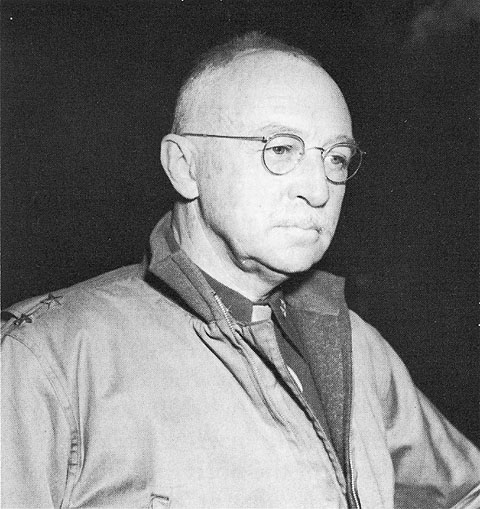
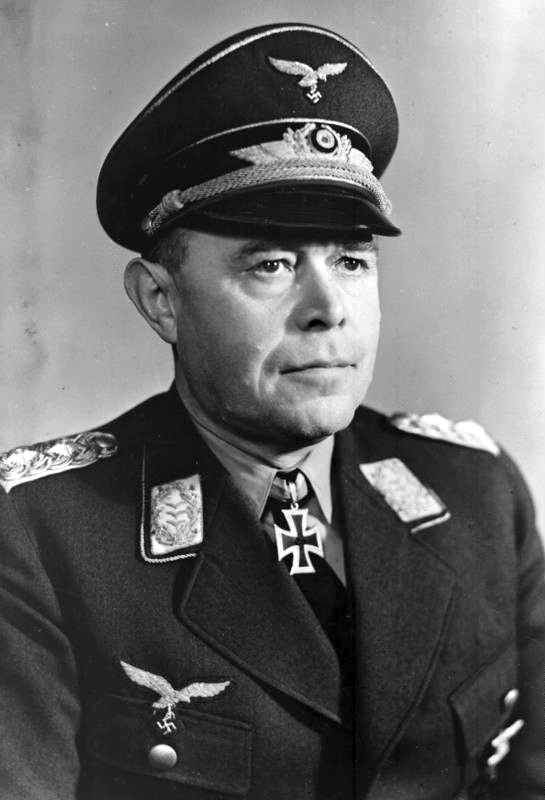
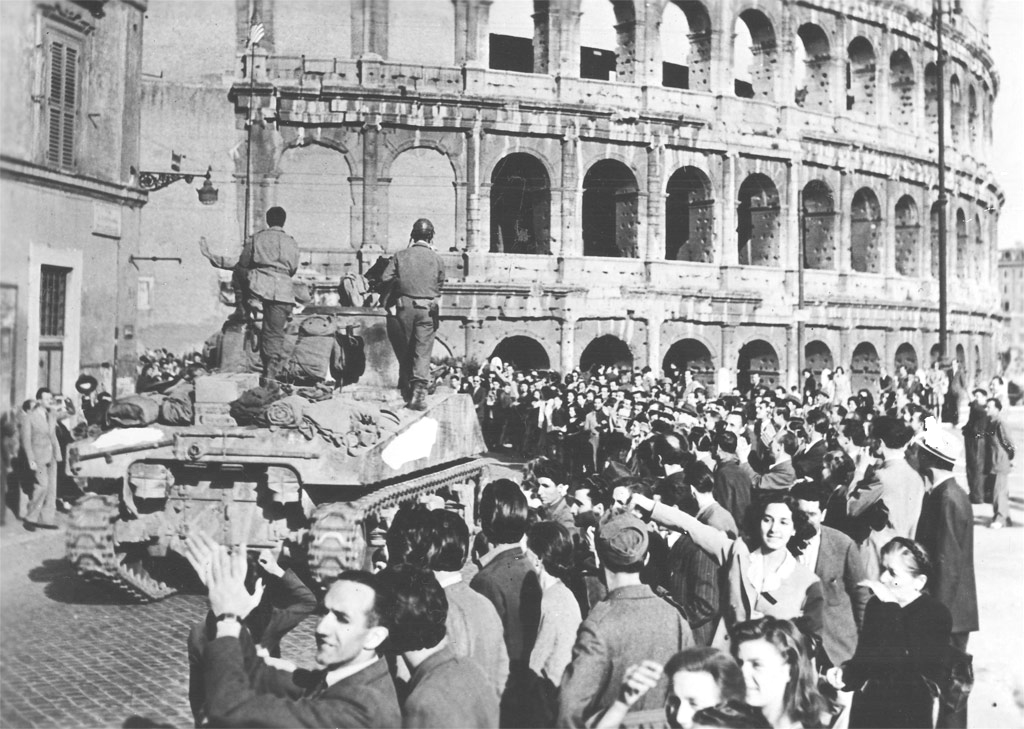
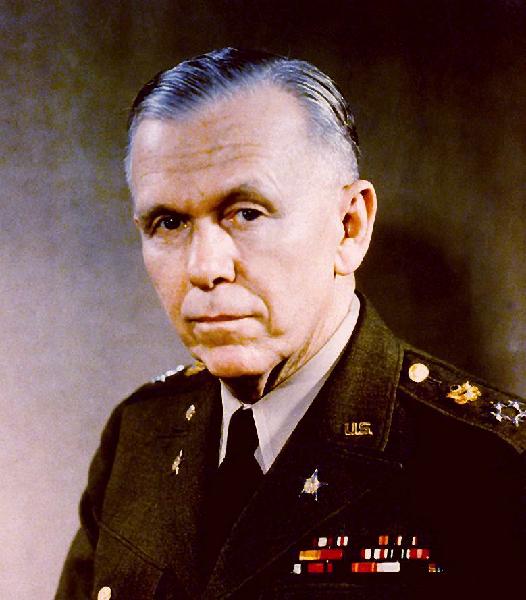
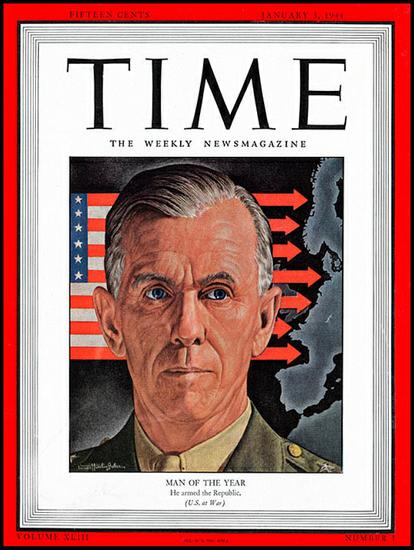
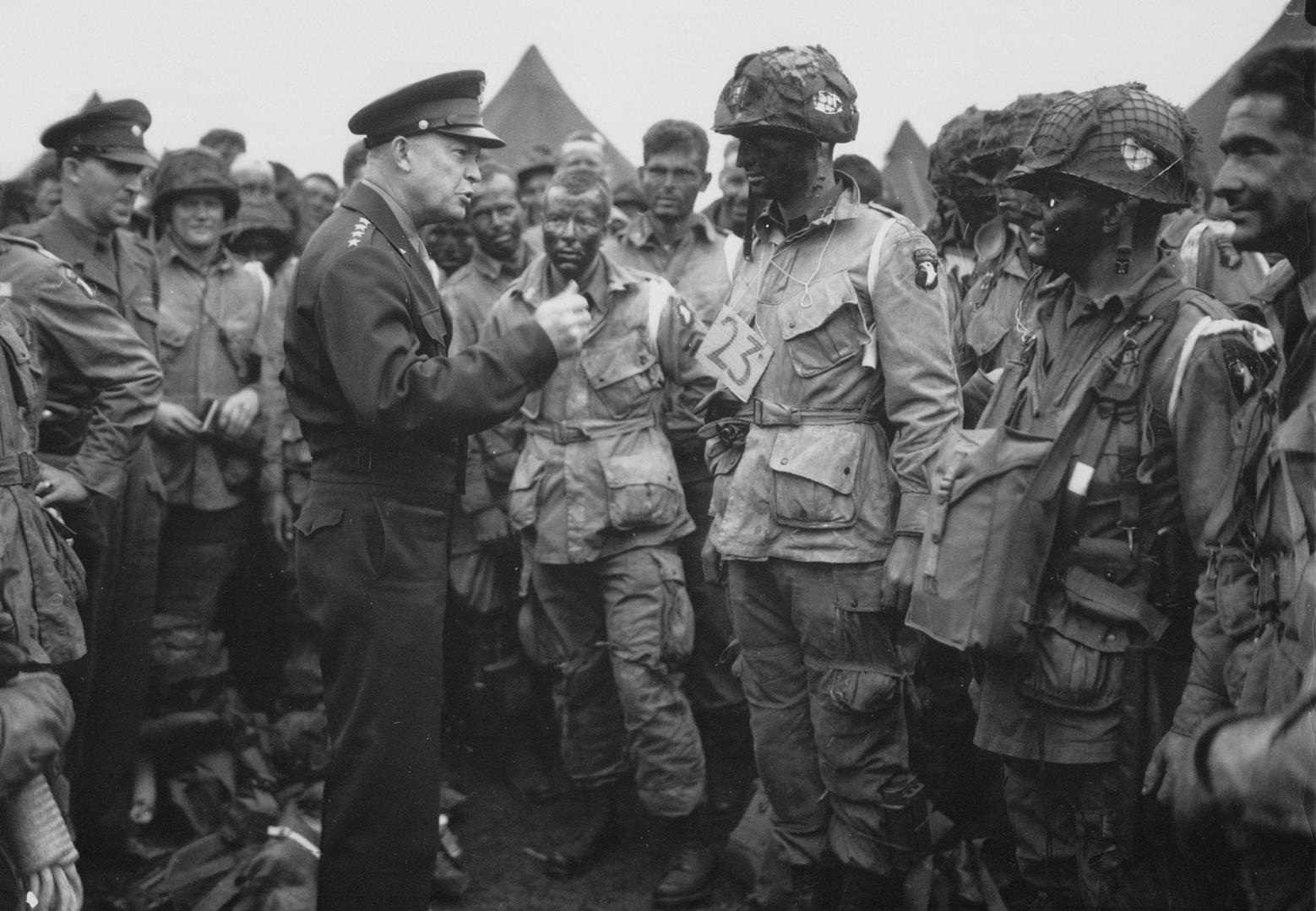
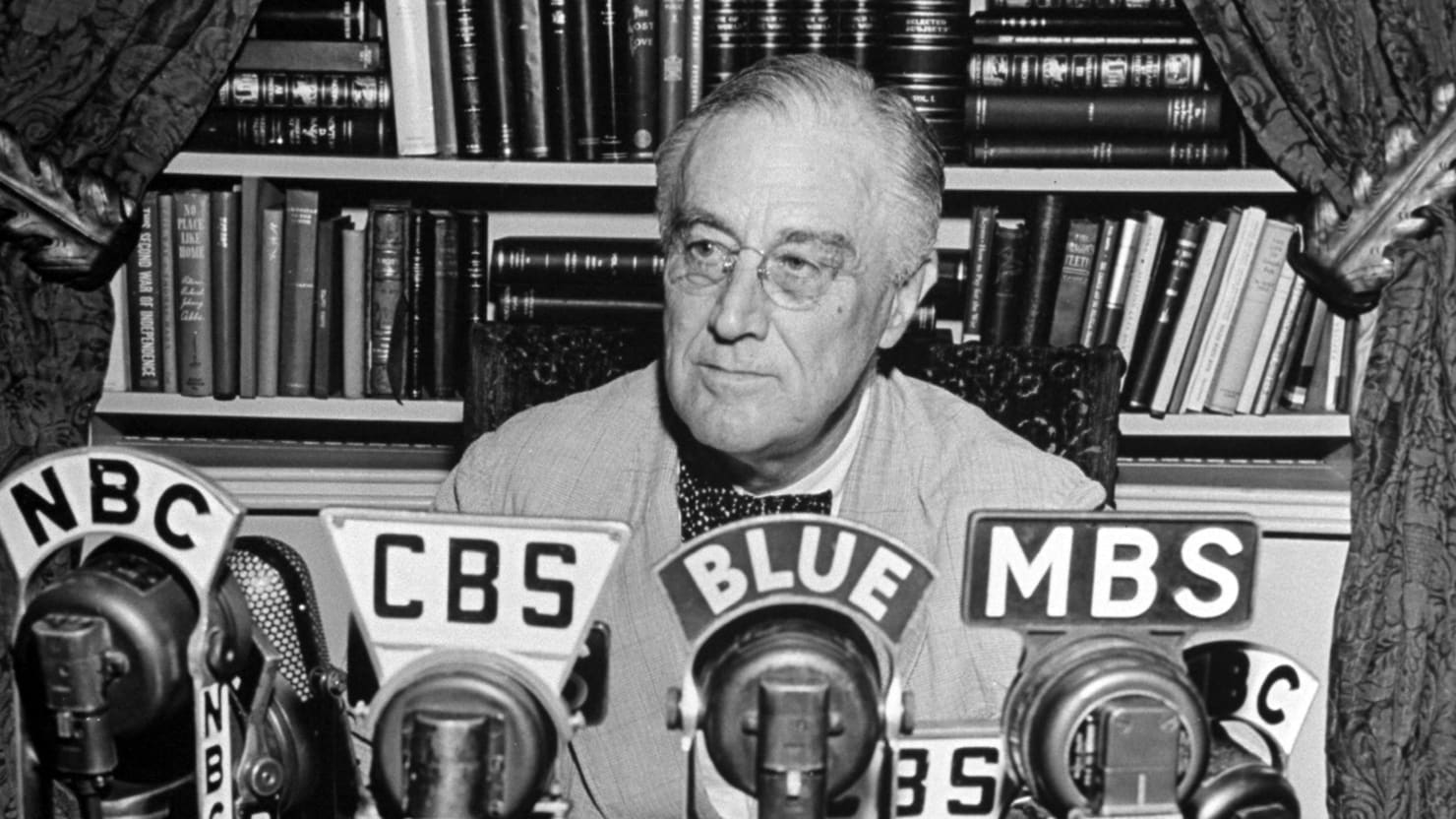
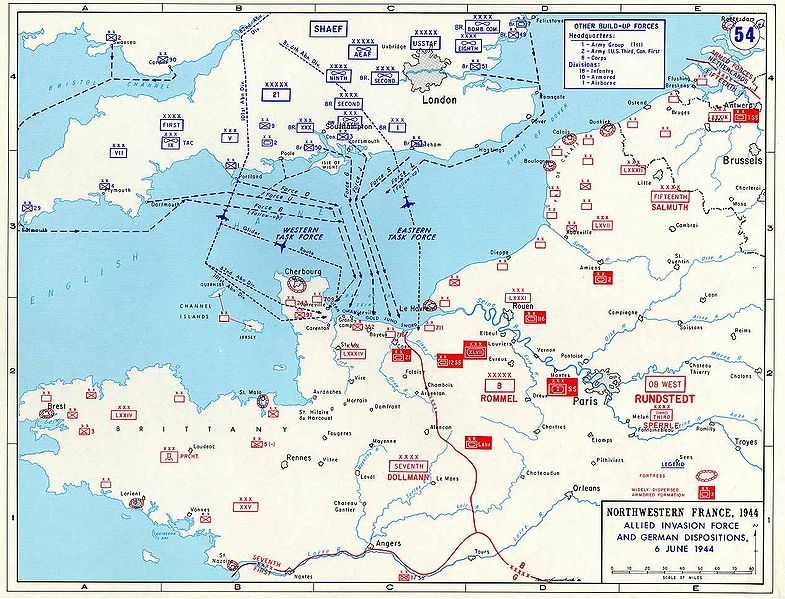
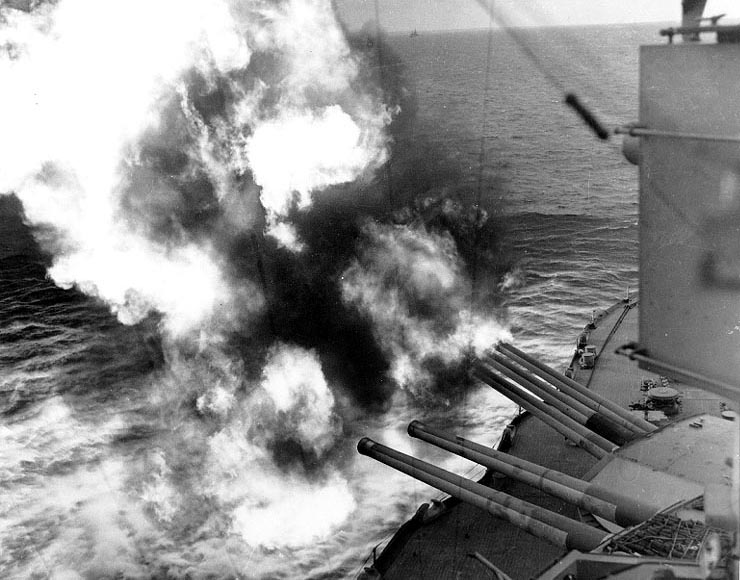
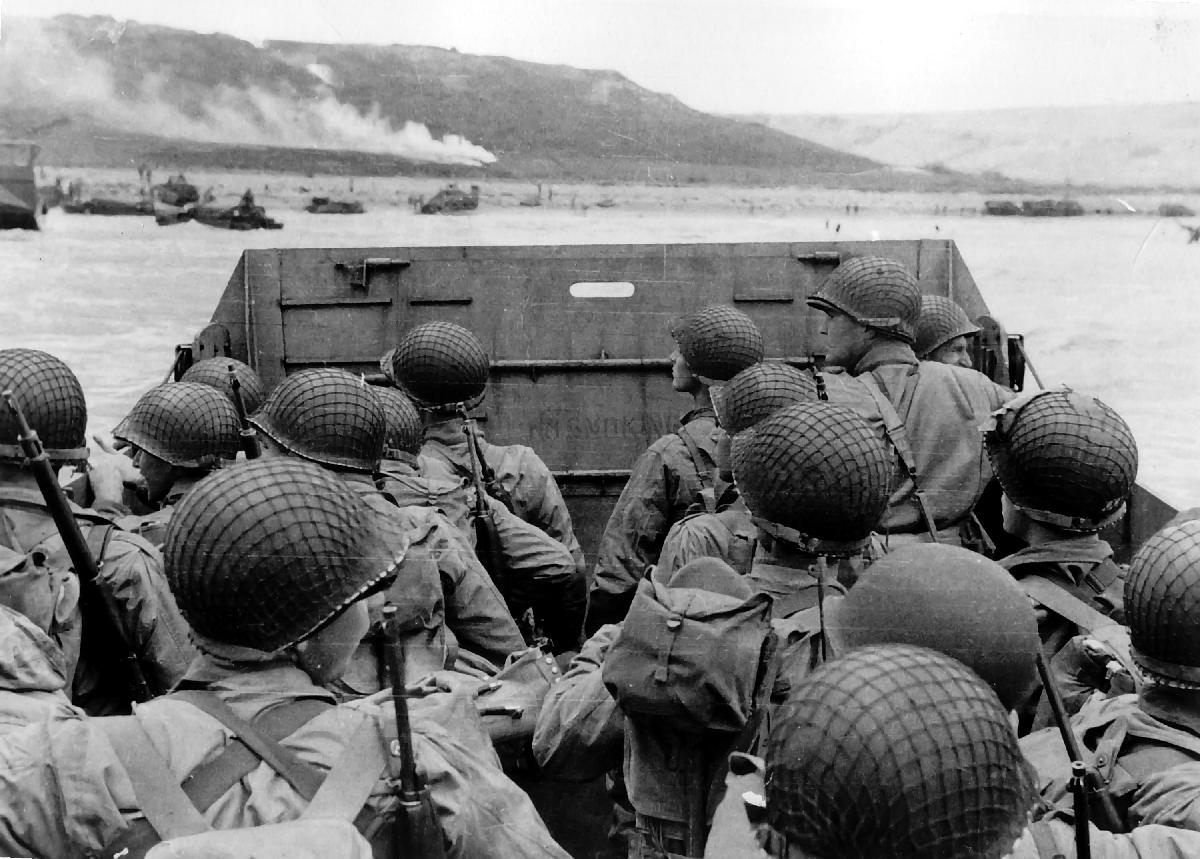
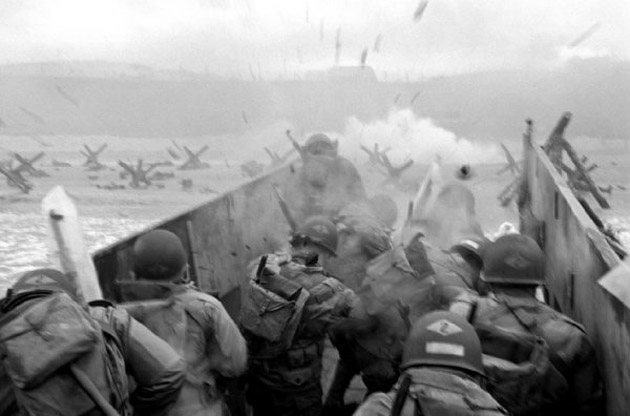
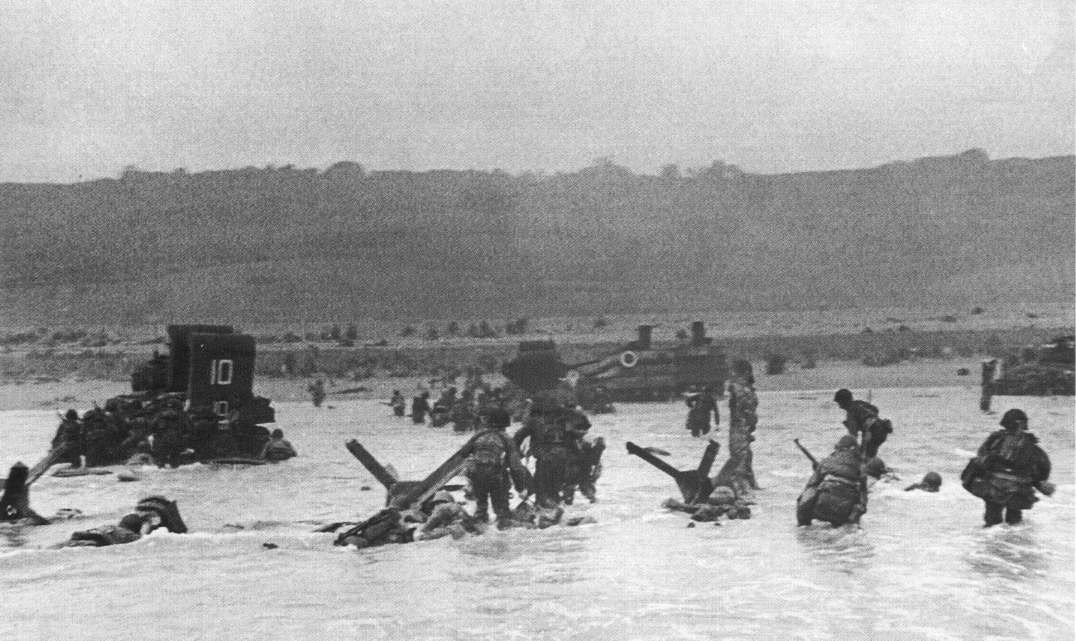
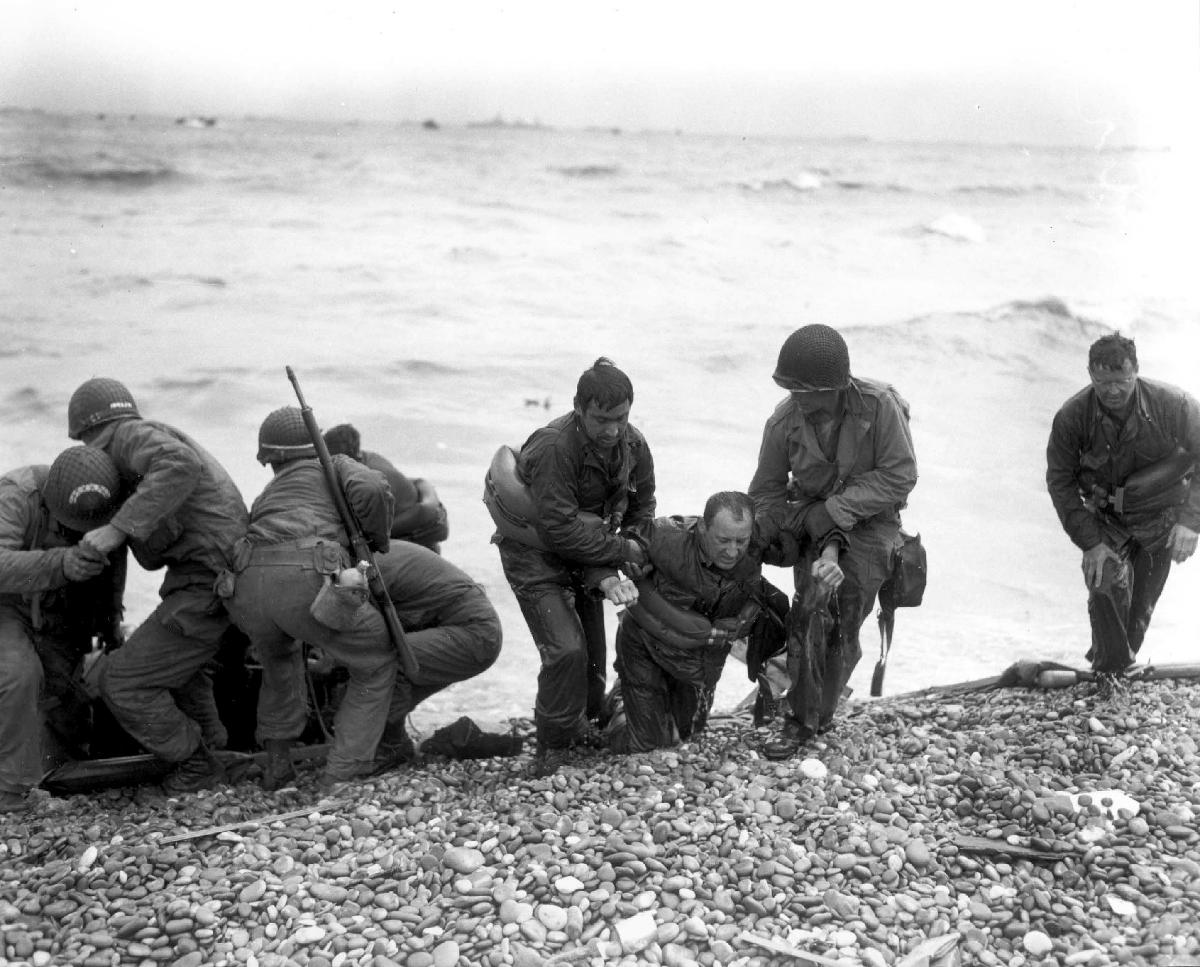
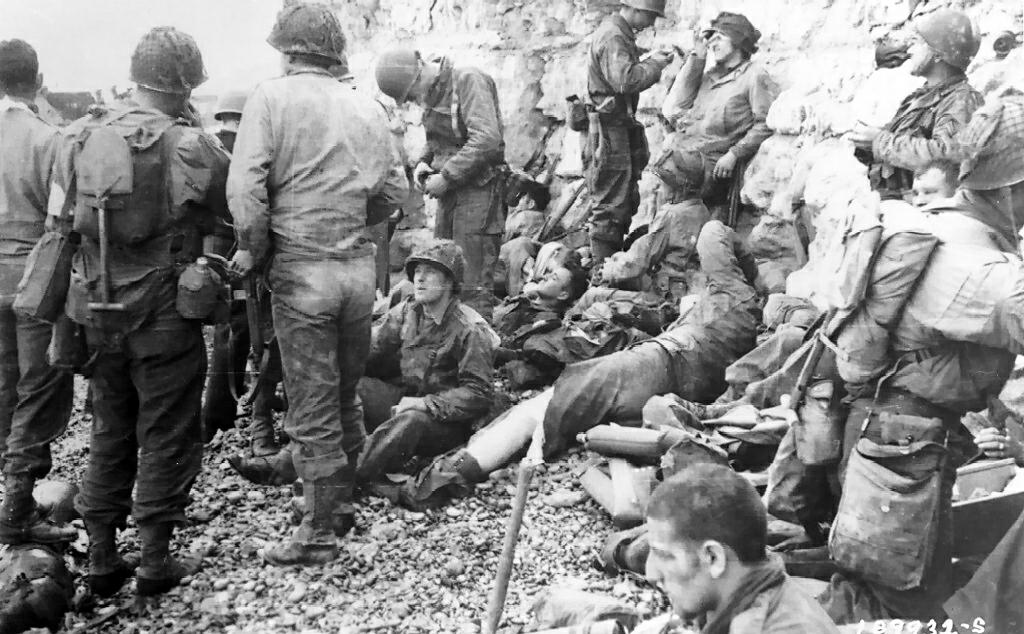
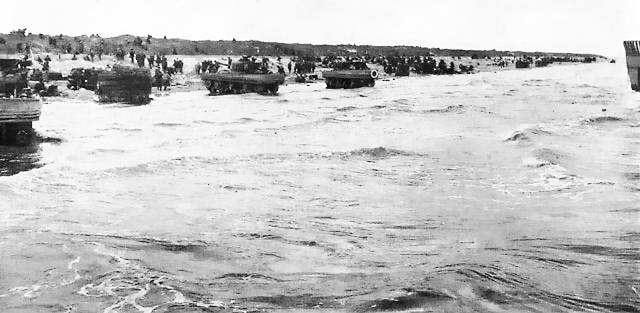
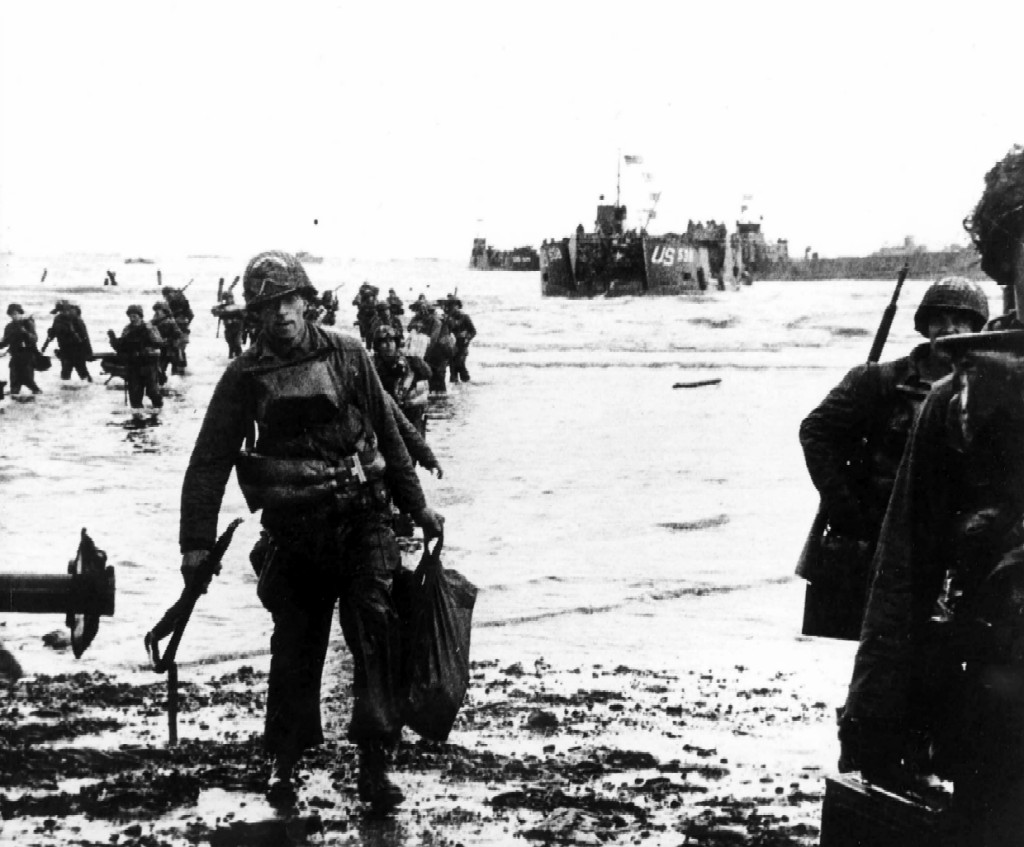
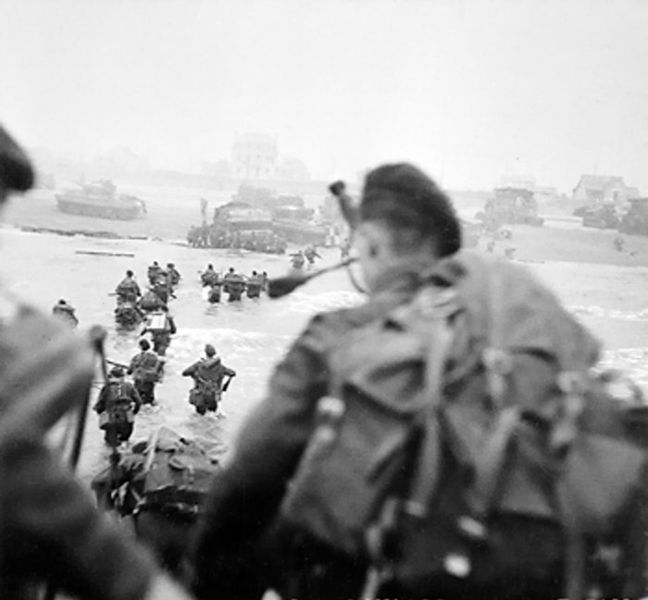
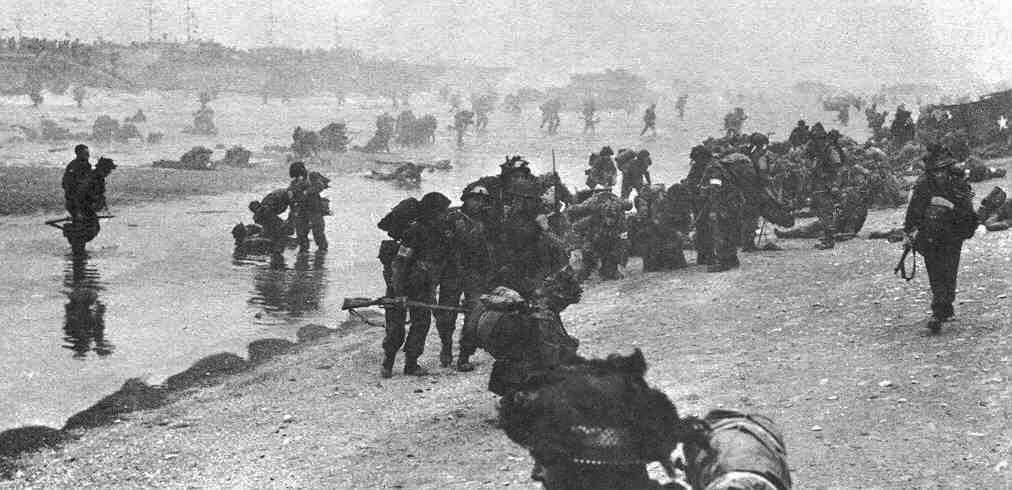
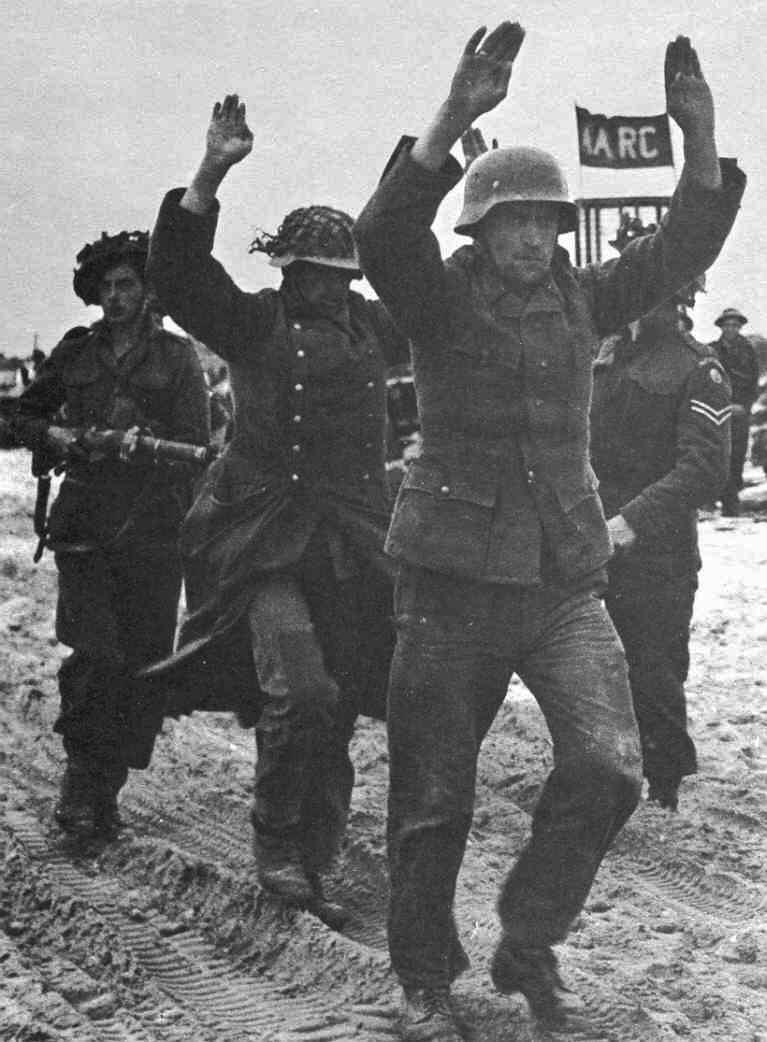
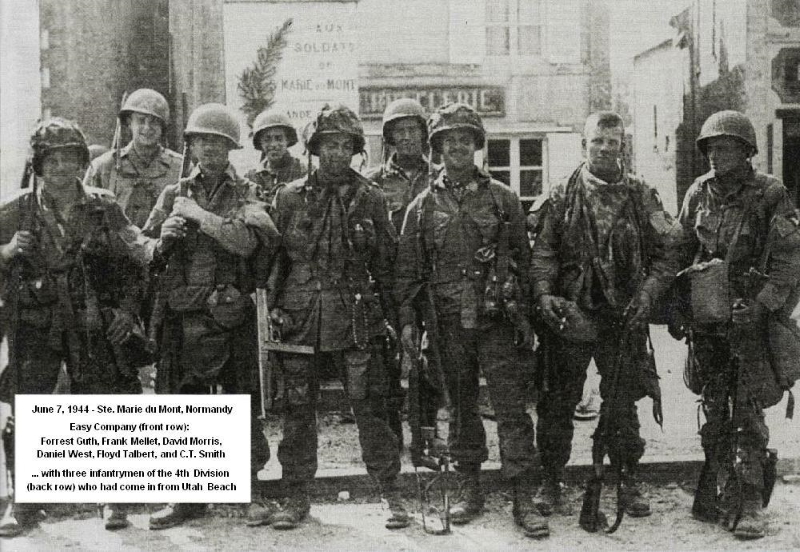
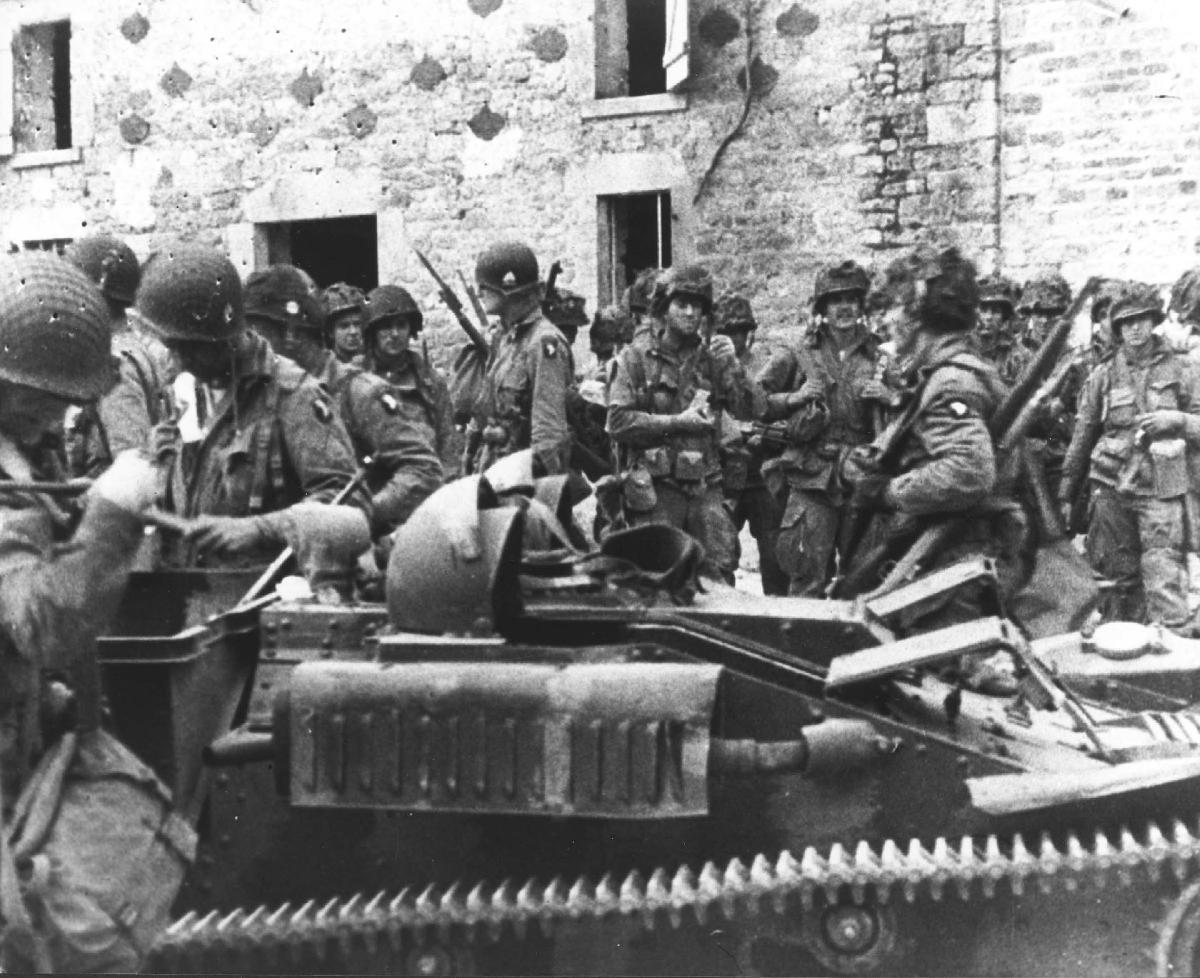



















































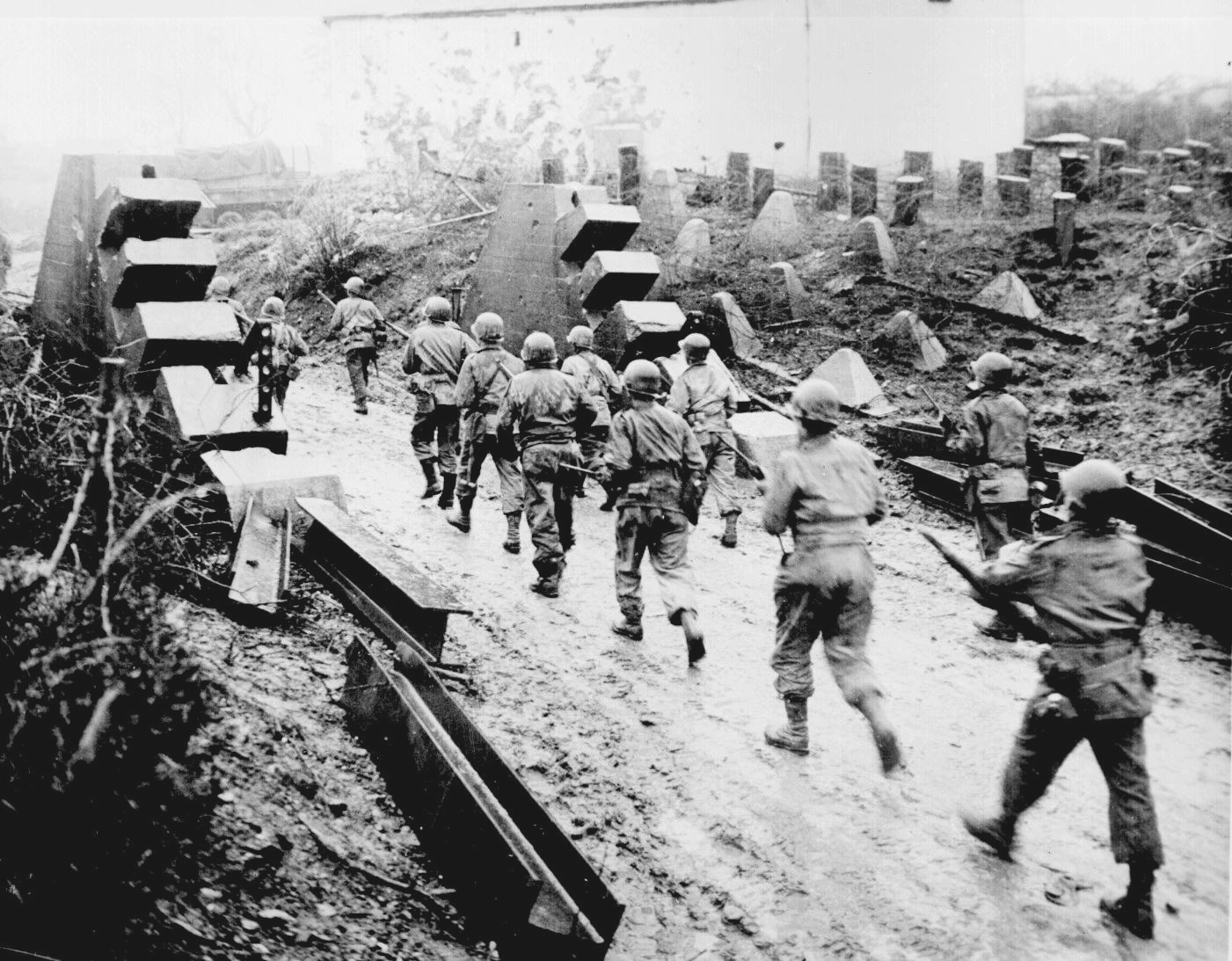
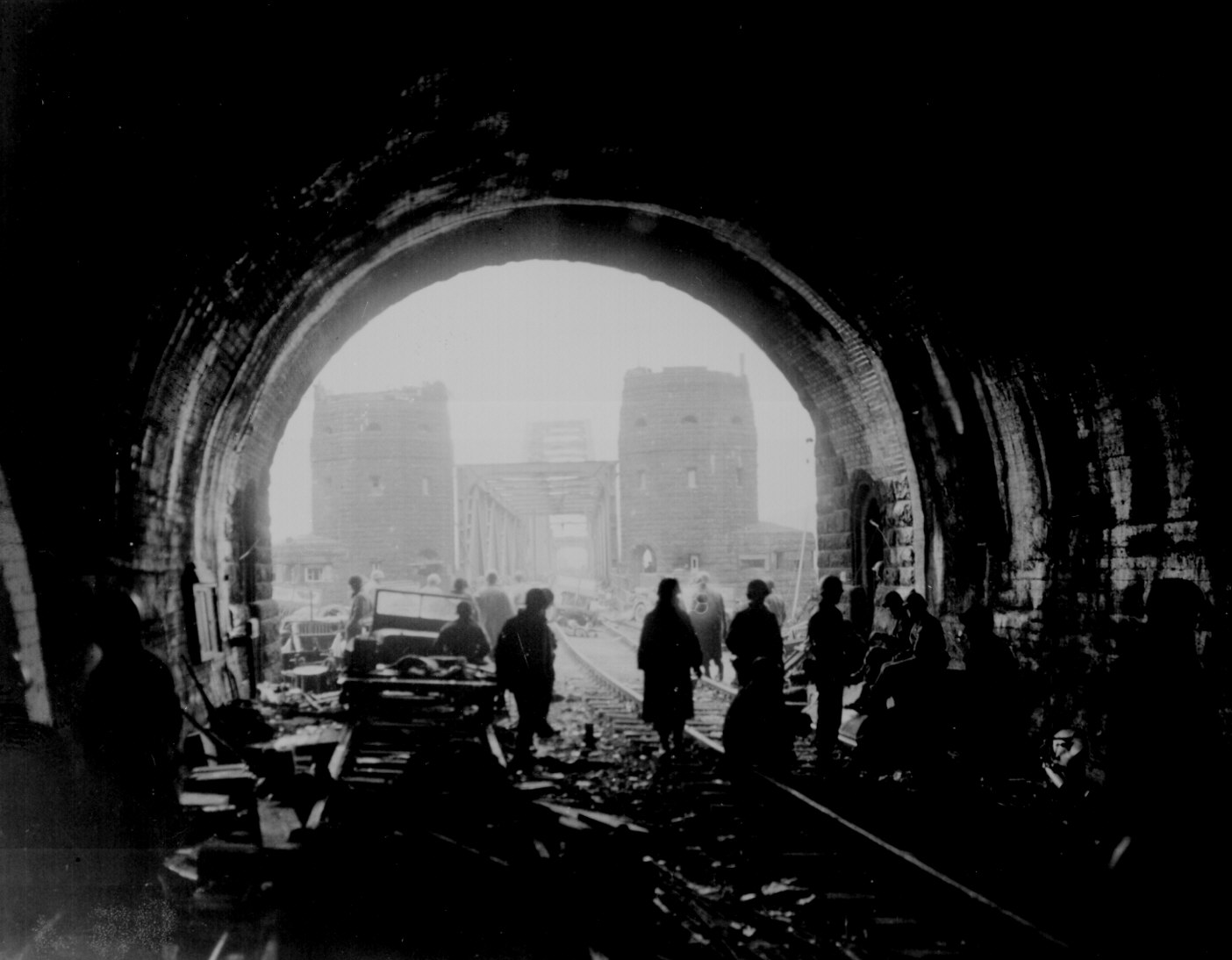
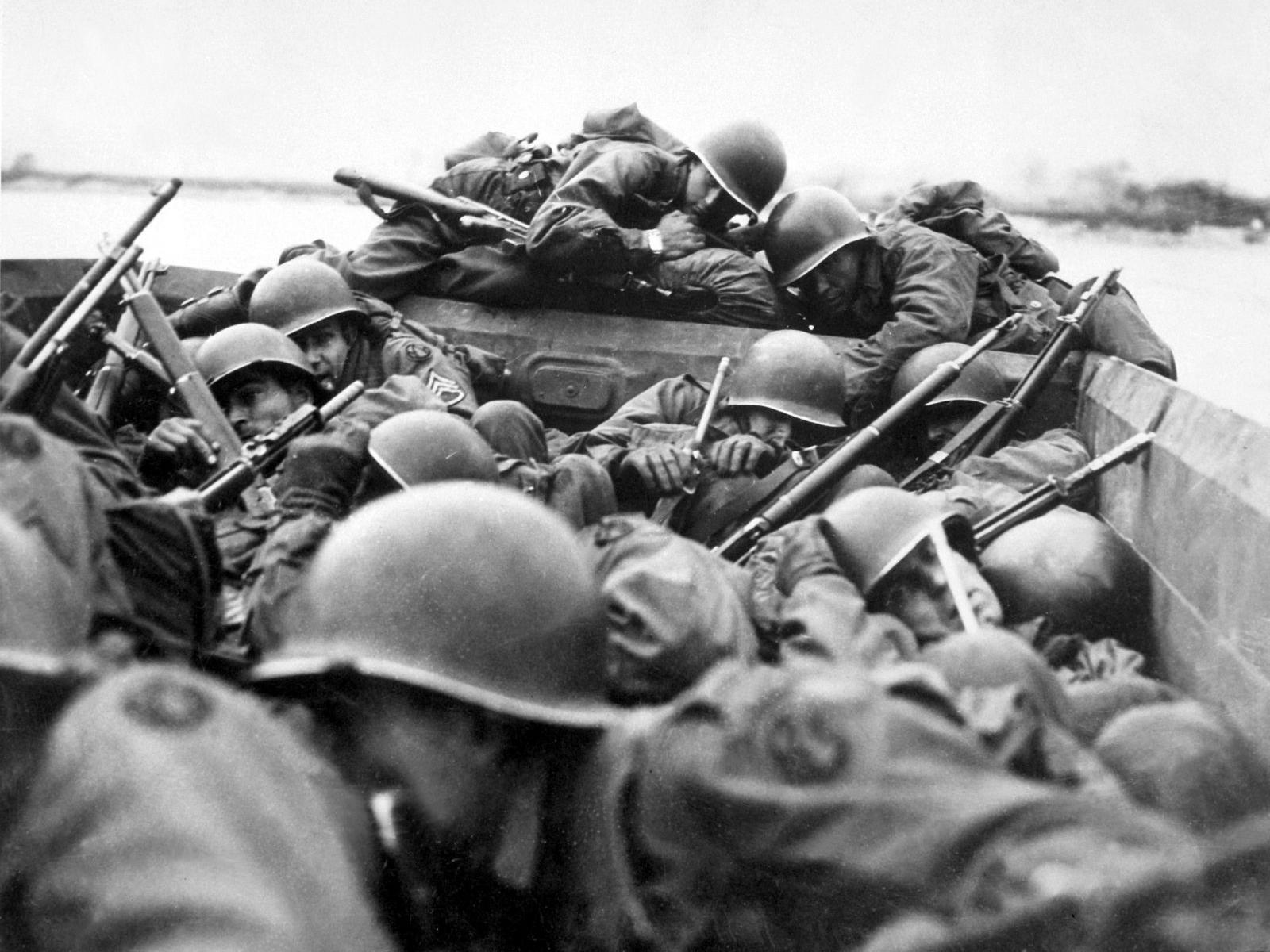
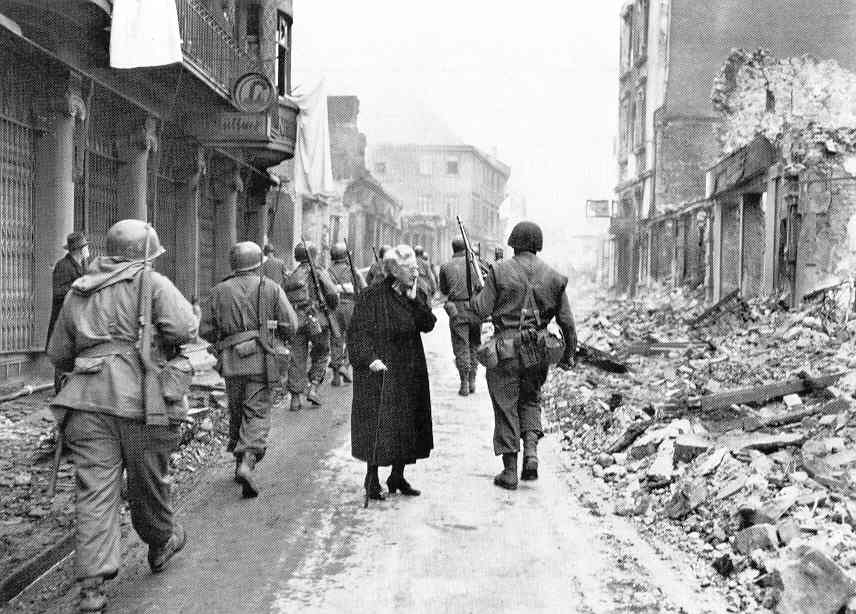
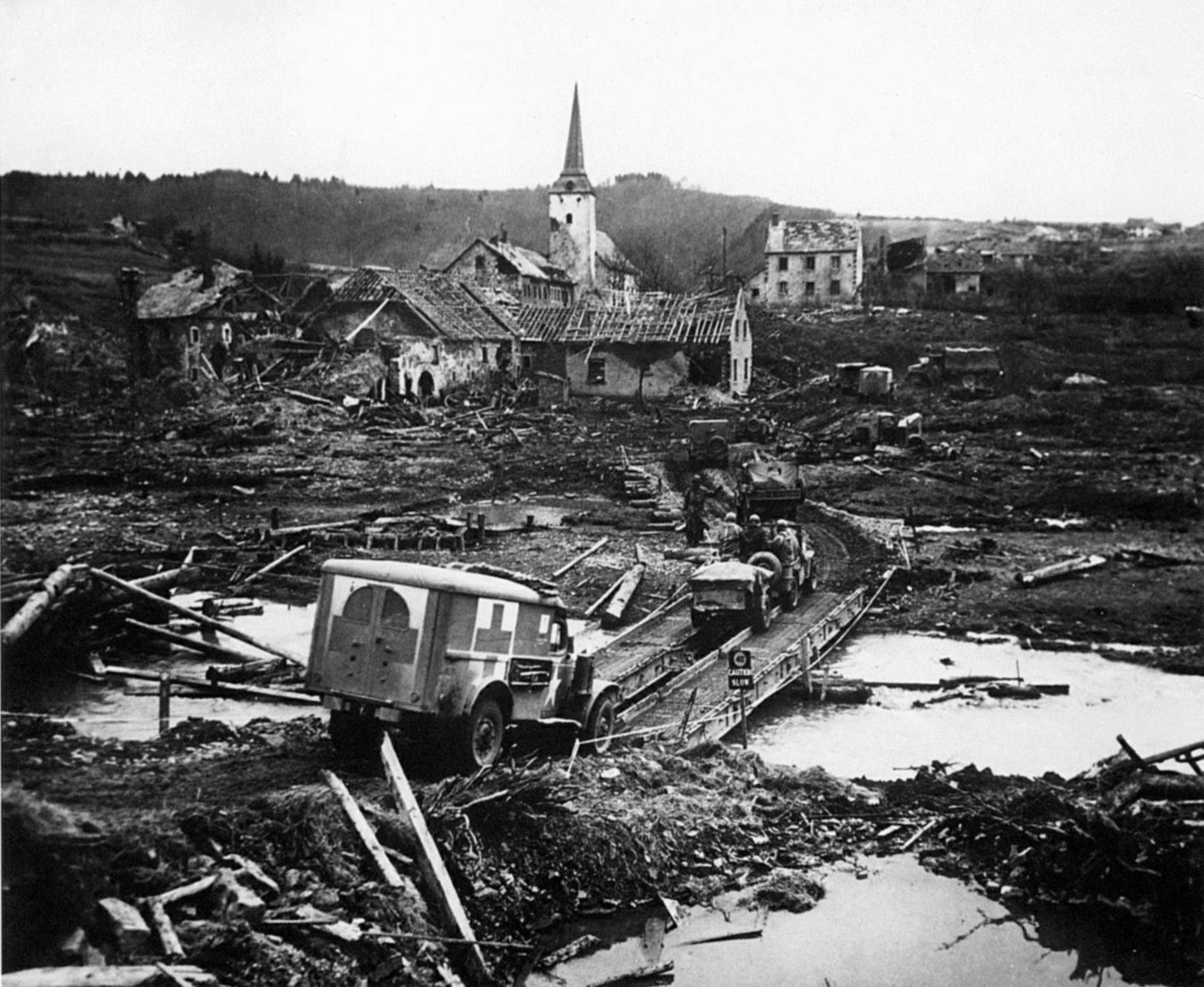
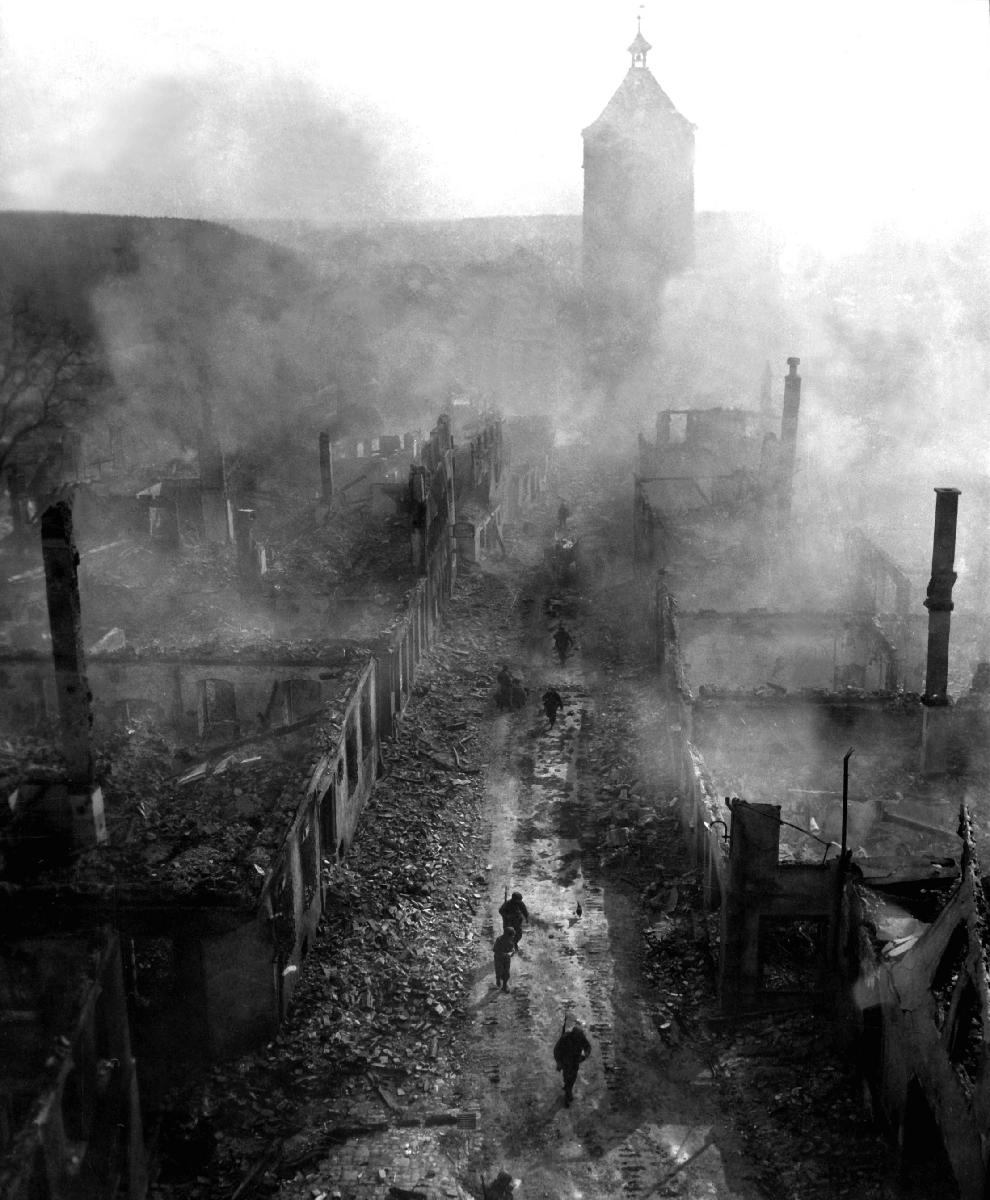
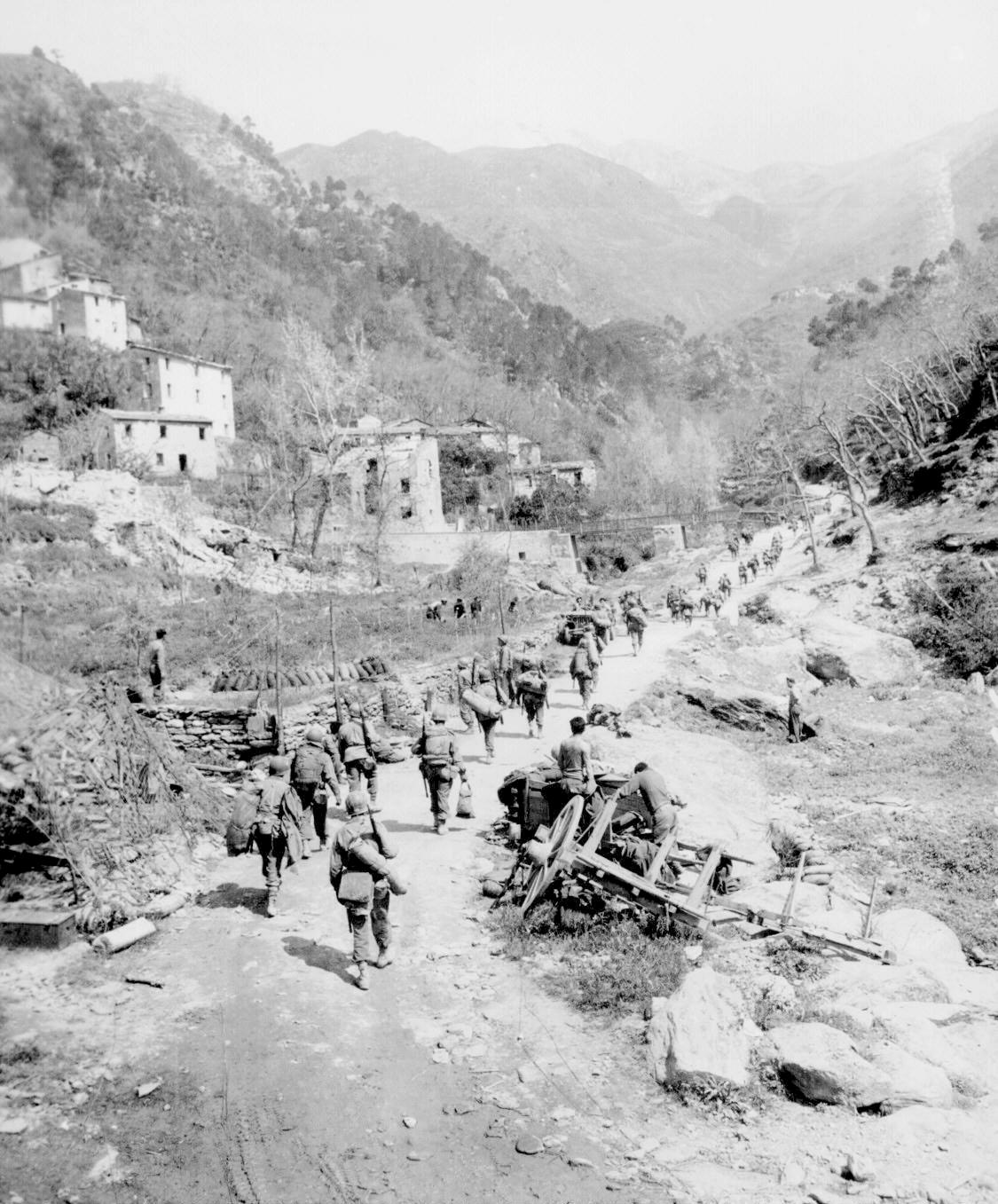
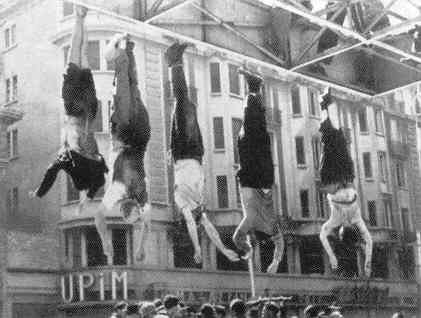

 Miles
H. Hodges
Miles
H. Hodges